Encyclopedia Titanica
Join thousands of people from around the world interested in the true story of the RMS Titanic.

A rare original deckplan indicates the cabins intended for use by Colonel John Jacob Astor and his wife Madeleine.
Read more...

The watch recovered from the body of Titanic Victim John Jacob Astor was repaired and worn by his son and later given to a close colleague.

Classic 1935 Rosengart cabriolet once belonged to Titanic survivor Virginia Ethel Emanuel

A beautifully created and intelligently curated selection of objects that explain or add colour to one particular facet of the Titanic story.

Evening Fashion in First Class Aboard Titanic

The Legacy of Dr. Alice Farnham-Leader, MD

The silent movie star who had a part in Titanic (1953)


Discover the true history of RMS Titanic
Encyclopedia Titanica tells the stories of the real people that designed, built and sailed on RMS Titanic.
There is a individual biography for every Titanic passenger and Crew Member and articles, deck plans, pictures and movies to help you discover the truth about the greatest shipwreck in history.
- Quick Titanic Facts
- What was the RMS Titanic?
- When and where was the Titanic built?
- How big was the Titanic?
- When was the Titanic's Maiden Voyage?
- How many passengers and crew were there on the Titanic?
- How was the Titanic propelled?
- What happened to the Titanic and why is it still famous?
Maiden Voyage Passenger Lists
- First Class Passengers
- Second Class Passengers
- Third Class Passengers
Other Passenger Lists
- Belfast-Southampton
- Southampton to Cherbourg
- Southampton to Queenstown
- More Passenger Lists...
Main Crew Lists
- Titanic Officers
- Engineers and Engineering Crew
- Stewards, Kitchen and Victualling Crew
- Harland and Wolff Guarantee Group
- Postal Clerks
- Restaurant Staff
- Delivery Trip Crew
- Discharged Crew
- Substitute Crew
- Transferred Crew
- More Crew Lists...
Main Survivor Lists
- Full list of Titanic Survivors
- Survivors by lifeboat...
- Titanic Crew Survivors
- Titanic Passenger Survivors
- First Titanic Survivors to die
- Last Titanic Survivors to die
Main Victim Lists
- Victims of the Titanic Disaster
Recovered Victims
- Victims bodies recovered from the sea
- Bodies recovered by the Mackay-Bennett
- Bodies recovered by the Minia
- Description of Bodies and Effects)
- More Victim Lists...

Titanic Deck Plans
Explore the Titanic deck by deck, with these detailed deck plans.

Titanic Pictures and Films
Films, pictures, and recordings of titanic survivors and victims, and the only original film of titanic herself.

Major Arthur Peuchen, Wife, Son and Daughter

Thomas Eddon : RMS Carpathia Steward

Harry Elkins Widener Portrait
Titanic store.
From the essential to the obscure, find Titanic books and gifts

The Triumvirate
Captain Edward J. Smith, Bruce Ismay, Thomas Andrews and the Sinking of Titanic

Titanic Deckplans
General arrangement plans and bonus content

Olympic Auction Catalogue
Transcription of the sale of the Olympic 's fixtures and fittings

Titanic Pin Badge
Reproduction of an original gold Titanic badge as sold on board.
Titanic On this Day...
Birth and deaths.
- BRISTOW, Mr Harry — 26th April 1873
- BARTON, Mr William Thomas — 26th April 1874
- MORROW, Mr Thomas Rowan — 26th April 1880
- SPINNER, Mr Henry John — 26th April 1880
- BRADLEY, Mr Thomas Henry — 26th April 1883
- FITZPATRICK, Mr Cecil William — 26th April 1890
- PHILLIMORE, Mr Harold Charles William — 26th April 1967
- GRAHAM, Miss Margaret Edith — 26th April 1976
More from today in Titanic history...
Titanic Stories
Titanic articles and stories.
- A dishevelled Annie Stengel arrives in New York
- Lookouts : The Human Perspective
- Egyptian fortune teller foretold death
- Kornelia Andrews, Gretchen Longley and Anna Hogeboom in Venice
- Message in a bottle
- Meet the Titanic survivors who lived to be more than 100...
- Watch recovered from John Jacob Astor's body
- I was saved from the Titanic
- The Staircase at Crakemarsh Hall
- Floating bodies in the water
Discover and share more Titanic stories like these...
Continuing Discussions
New and continuing discussions.
- What was Boxhall doing? (Arun Vajpey)
- Titanic Honor and Glory (Milos Grkovic)
- Why did they not attempt to lighten the bow? (Scott Mills)
- Newsreel/Film Footage Oceanic (Scott Mills)
- Nargeolet's daughter wants more Titanic visits/salvage (Scott Mills)
- Captain Smith's Personal effects (Jim Michon)
- the portrayal of smith as incompetent? (Aurélien WOLFF)
- What happened on the starboard side of the bow from 140 AM to 210 AM (Erik Scott Reed)
- would the Carpathia's boilers have exploded that night? (Gordon Mooneyhan)
- why are some people seemingly against discovering new things about the titanic? (Michael H. Standart)
What else is new on our message board...
Message Board
Discussing Titanic since 1999.
Get in touch with new information
Join our friendly group
Support New Research
Joining Encyclopedia Titanica means supporting new research into the passengers and crew, publishing new discoveries about the Titanic , plus you can view the site without any adverts Join Us .
Already a member? sign-in for instant updates and the latest version.
- History Classics
- Your Profile
- Find History on Facebook (Opens in a new window)
- Find History on Twitter (Opens in a new window)
- Find History on YouTube (Opens in a new window)
- Find History on Instagram (Opens in a new window)
- Find History on TikTok (Opens in a new window)
- This Day In History
- History Podcasts
- History Vault
Titanic by the Numbers: From Construction to Disaster to Discovery
By: Lesley Kennedy
Updated: June 22, 2023 | Original: October 30, 2020

It took just two hours and 40 minutes for the “unsinkable” RMS Titanic to sink. The much-heralded ocean liner, on its glamorous five-day maiden voyage from Southampton, England to New York City, headed out across the Atlantic on April 10, 1912, counting among its passengers the wealthy and prominent as well as poor immigrants making their way to America.
What would happen next has been the source of inspiration for books, poems, songs, TV shows and films, including one blockbuster Oscar-winning movie. Despite receiving several iceberg warnings on April 14, the Titanic ’s captain, Edward Smith, continued to sail full-steam ahead. It was a deadly decision: Unable to avoid collision, the doomed ship, upon impact with the iceberg, was punctured, causing it to flood and sink off the coast of Newfoundland in less than three hours, taking along with it some 1,500 lives.
A look at the sinking in terms of numbers, below, helps provide perspective into the tragedy.

Cost to build: $7.5 million ($200 million with inflation)
The White Star Line's Titanic was built at the Harland and Wolff shipyard in Belfast, Ireland, starting in 1909, with construction taking three years. With a whopping 3 million rivets, weighing 46,000 tons and measuring 882 feet, 8 inches—the distance of more than four city blocks—Titanic was created with the labor of some 3,000 workers.

Ticketed passengers aboard: 1,317
Titanic was designed to carry up to 3,300 people. On the maiden voyage, it had about 2,200 aboard, including about 900 crew members. As for passengers, according to the United Kingdom's National Archives , 324 were first class, 284 were second class and 709 were third class.

Bottles of wine in ship’s wine cellar: 1,000
On April 21, 1912, The New York Times reported the luxury liner was carrying cargo worth $420,000 ($11 million today). The manifest included such items as 3,000 teacups, 40,000 eggs, five grand pianos and 36,000 oranges. It was also a mail ship (RMS stood for Royal Mail Steamer) and contained a post office with 3,364 bags aboard.

Number of courses served during the ship’s final first-class dinner: 10
Menu choices included oysters, consommé, poached salmon, filet mignon, lamb with mint sauce, punch romaine, roast squab, cold asparagus vinaigrette, paté de foie gras and Waldorf pudding. Each course included wine pairings. And after dinner? Spirits and cigars were offered.
Second-class passengers, according to NPR , were served classic French bistro and American dishes, while third-class dinner was typically soup or stew.

Number of iceberg warnings received that day: 6
According to Titanic: The Legend, Myths and Folklore by Bruce Alpine, Titanic received three ice warnings from other ships in the area on April 14 (one never reached Smith), as well as three messages from the SS Californian, a small steamer that had stopped approximately 19 miles from the luxury ship. Its final warning, sent at 11 p.m.: "We are stopped and surrounded by ice."

Miles sailed before sinking: 2,070
The ship embarked from Southampton, England, then made stops at Cherbourg, France and Queenstown, Ireland before setting sail to New York. The ship was 400 miles south of Newfoundland on April 14 (1,250 miles from its final destination), when, at 11:40 p.m., watchmen saw the iceberg that punctured six of the Titanic's 16 water-tight compartments, which quickly filled with water. Experts say had only four compartments flooded, the ship would have stayed floating. The time between the first sighting of the iceberg and impact was a mere 37 seconds, with the ship sinking in 160 minutes.

Temperature of the water: 28 degrees
Most of the Titanic deaths were caused by hypothermia due to the low water temperature. According to the American Red Cross , a water temp of 79 degrees can lead to death after prolonged exposure, while 50 degrees can cause death in an hour, and 32 degrees can be lethal in 15 minutes.

Number of lifeboats the ship was equipped to carry: 64
However, the ship actually carried 20 lifeboats (four were collapsibles) which, according to Alpine's book, could only hold 1,178 passengers and crew, but that number was still more than required by the 1883 Merchant Shipping Act. Still, just over 700 made it aboard lifeboats. "In 1912, the tradition for loading lifeboats during an emergency was 'Women and children first'," Alpine writes . "This tradition often caused time delays in filling the lifeboats as the women and children were singled out for priority in lifeboat placement, which often led to lifeboats being launched half full. This was certainly the case with Titanic."

Number of people who died: 1,517
As the ship's string band played, the ship sank to its watery grave, taking those not already in the water with it. Nearly 32 percent of those who had been aboard Titanic survived. They were rescued by the RMS Carpathia , which responded to the Titanic’s distress call, arriving around 4 a.m.

Amount J.J. Astor, the richest passenger, was worth when he died in the sinking: $87,000,000 ($2.21 billion today)
“We are safer here than in that little boat,” John Jacob Astor IV reportedly told his 18-year-old pregnant wife after Titanic struck the iceberg. One of the world's wealthiest men at the time, the first-class passenger, known for building New York's Astoria Hotel (later known as the Waldorf-Astoria), Hotel St. Regis and the Knickerbocker, drowned. His wife survived.
Other prominent passengers on board included Macy’s department store co-owner Isidor Straus and his wife, Ida , who deboarded a lifeboat to face her fate with her husband. ("Where you go, I go," she reportedly said.) There was also Benjamin Guggenheim who, dressed in white tie and tails and helping passengers board lifeboats, was heard to say, “we’ve dressed up in our best and are prepared to go down like gentlemen.” And 17-year-old Jack Thayer, heir to a Pennsylvania railroad fortune, miraculously survived after plunging into the icy waters and clinging to an upturned lifeboat.

Amount claimed for lost property by Molly Brown: $27,887
Known post-Titanic as the “ Unsinkable Molly Brown ,” Margaret Brown , a Denver socialite and philanthropist, drew fame for helping to row her lifeboat for hours to safety and, eventually, raising money for survivors who had lost everything. According to the U.S. National Archives , her claim for loss of property included 14 hats, some 20 gowns, three crates of "ancient models" for the Denver Museum, along with an opera cape, two Japanese kimonos, jewelry and more.
Years before wreckage was discovered: 73

It wasn't until Sept. 1, 1985 that oceanographer Robert Ballard discovered the wreckage of the Titanic, which was found at 12,000 feet—2.3 miles below sea level. The debris field spread across 15 square miles with the hull buried under 45 feet of mud.
The discovery coincided with a top-secret Cold War-era investigation by the U.S. Navy to search for two wrecked U.S. nuclear submarines. Ronald Thunman, then the deputy chief of naval operations for submarine warfare, told National Geographic in 2017 that the Navy had permitted him to search for the ship once his mission was complete.
"But the Navy never expected me to find the Titanic, and so when that happened, they got really nervous because of the publicity," Ballard told National Geographic . "But people were so focused on the legend of the Titanic they never connected the dots."

HISTORY Vault: Titanic's Final Moments: Missing Pieces
In August 2005, a Titanic wreckage expedition found two large, extraordinarily well-preserved sections of the bottom of the ship's hull. Will this discovery change our understanding of Titanic's final moments?

Sign up for Inside History
Get HISTORY’s most fascinating stories delivered to your inbox three times a week.
By submitting your information, you agree to receive emails from HISTORY and A+E Networks. You can opt out at any time. You must be 16 years or older and a resident of the United States.
More details : Privacy Notice | Terms of Use | Contact Us

Sign Up Today
Start your 14 day free trial today

The History Hit Miscellany of Facts, Figures and Fascinating Finds
- 20th Century
10 Facts About the Titanic

08 Apr 2022

The Titanic: her name is synonymous with those of Jack and Rose, fictional passengers on her maiden voyage. In the midst of the many myths and fictions surrounding the famous cruise liner and her ill-fated maiden voyage, here are 10 facts about the Titanic.
1. People died on the Titanic even before it set out
During the 26 month construction of the Titanic at the Harland and Wolff Shipyard in Belfast, 28 serious accidents and 218 minor accidents were recorded. 8 workers were killed.
This was a smaller number than expected for the time, which was one death for every £100,000 spent. As the Titanic cost £1.5 million to build, 15 deaths could have been anticipated.
Most of the 8 were killed by injuries sustained from falling either from the ship or the staging surrounding it.
A 43-year-old shipwright, James Dobbin, was actually killed on the day of the Titanic’s launch. At 12:10 on 31 May 1911, an estimated 10,000 people watched as the massive ship slid from the yard onto the River Lagan.
Dobbin was crushed during the process of removing the timber stays which had been holding the ship upright.
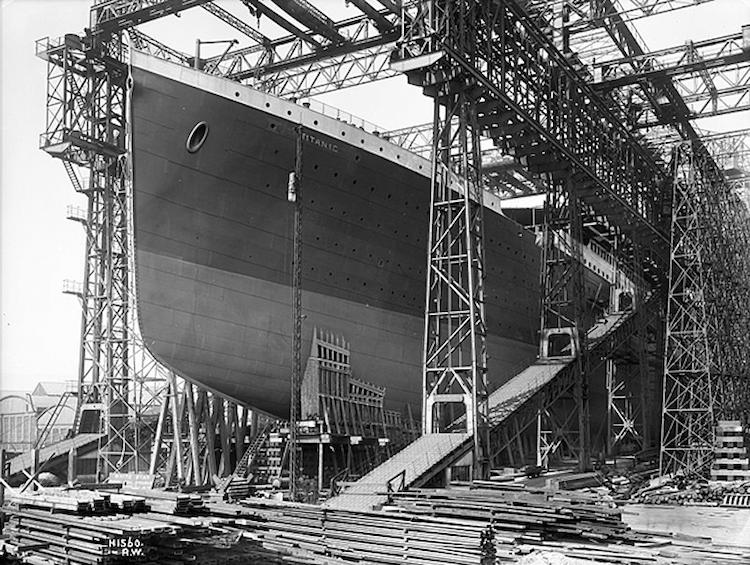
The RMS Titanic ready for launch, 1911
Image Credit: Public Domain
2. The largest liner in the World
On her launch, the Titanic became the largest movable man-made object. She was 269 metres long and 28 metres wide. From keel to bridge she was 32 metres high, 53 metres to the top of the stacks.
Because of her grandeur, it was felt that the Titanic should have four exhaust stacks. Thomas Andrews’ efficient original design, however, necessitated only three. The ship therefore had one purely decorative stack.
Titanic’s unprecedented size resulted from competition between her owners at White Star Line, and Cunard Line.
3. One of three
Because of her size and the new equipment it would require, it would have been too expensive to build the Titanic alone. Instead, she was built alongside two sister ships, both of which also had eventful lifetimes.
Construction of the RMS Olympic began first, and the ship was launched on 20 September 1910. For the next twelve months, the fractionally smaller Olympic was the largest liner in the world.
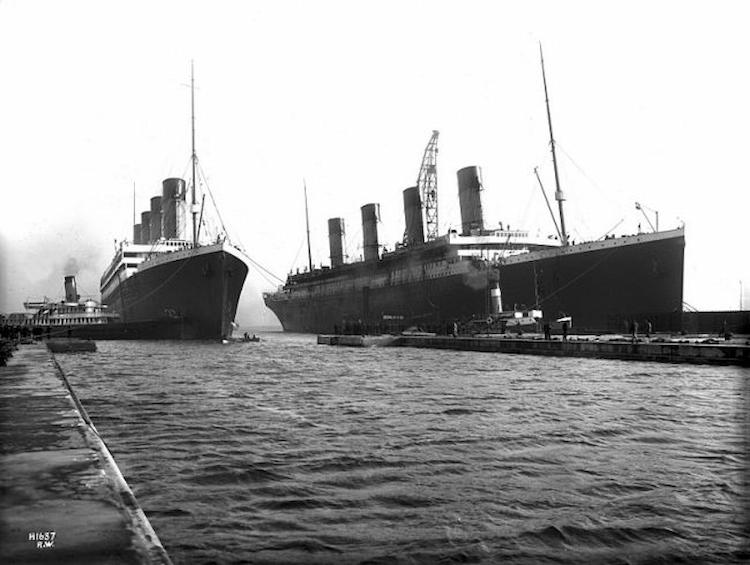
RMS Titanic (right) at the fitting out wharf in Belfast, whilst RMS Olympic (left) gets repaired on 2 March 1912. Photograph by official photographer of Harland & Wolff
Less of the attention to detail applied to the aesthetic of the Titanic was used on the Olympic. After the former sank, however, improvements included lifeboats for all and, in October 1912, the installation of a watertight inner skin.
The Olympic rescued soldiers from the sinking British battleship, Audacious, in October 1914, and served as a troop ship carrying Canadian soldiers to the European front.
She was the only one of the three to survive more than half a decade. The third and biggest ship, the Britannic, went into production after the Titanic disaster and sank in 1916 after hitting a mine. She had been a British hospital ship.
4. Room for one (thousand) more
Around 2,200 people were on board when the Titanic sank in 1912, but her maximum capacity was around 3,500. Of these, 1,000 would be crew. In 1912, there were 908 crew members, but fewer passengers. There were 324 in First Class, 284 in Second, and 709 in Third.
Between 1,490 and 1,635 of these people died as the ship sank, including the Captain.
5. The estimated overall wealth of the passengers in first class was $500 million
$87 million of this is attributed to John Jacob Astor IV.
On their voyage from New York in January 1912, Astor and his wife Madeleine travelled on the Olympic. Astor was the richest passenger on the Titanic on their return journey, and one of the richest people in the world. He died in the sinking as a ‘women and children first’ protocol was generally followed.
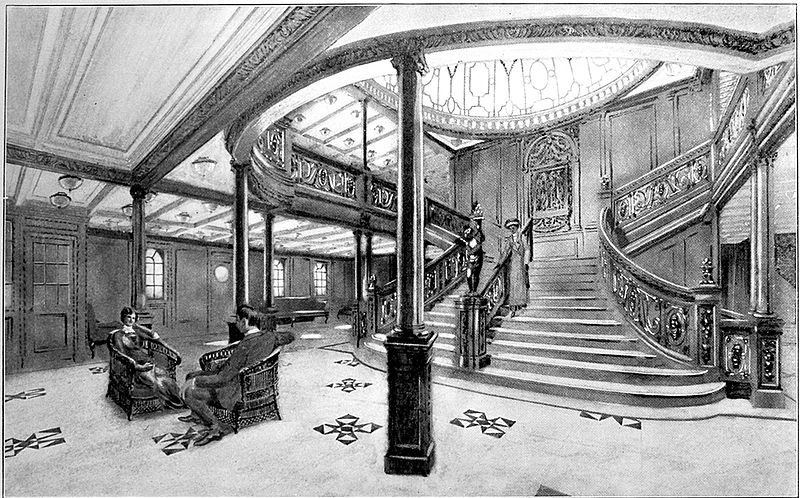
Drawing of the Grand Staircase of the RMS Titanic, from the 1912 promotional booklet (Credit: Public Domain)
It is estimated that $6 million worth of belongings went down on the Titanic.
Not included, however, were the supposed riches of Alfred Nourney. Travelling under the false title Baron Alfred von Drachstedt, Nourney used his assumed aristocratic status to transfer to first class.
As the ship sank he quickly gained access to a lifeboat from the first class smoking room, unlike the 168 men in his original second class quarters, only 14 of whom survived the sinking.
6. In first class, Titanic was a place of luxury
The liner had 4 restaurants and passengers ate off the 50 thousand pieces of bone china crockery supplied by Liverpool’s Stonier and Co.
There were reading rooms, 2 libraries, 2 barber shops and a photographic darkroom on board. A heated swimming pool was reserved for use by first class passengers, at 1 shilling a time. There were also Turkish baths and electric baths, each for 4 shillings a time.
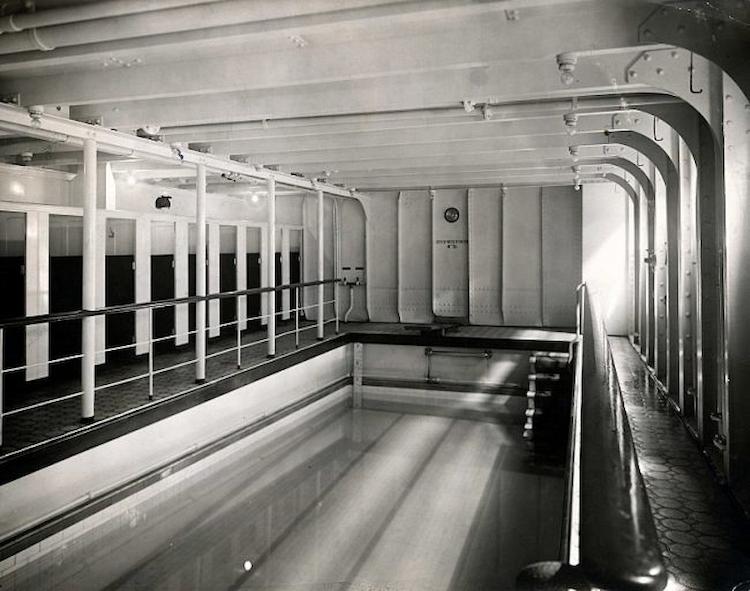
The swimming pool on the Titanic
The Titanic had its own Atlantic Daily Bulletin printed on board, including news, society gossip and the day’s menu.
A first class passenger would pay £30 for a regular room, or £875 for a parlour suite. The majority of passengers, however, were in third class, and payed between £3 and £8.
There were just two baths for all of the passengers in third class, many of whom were bunked in the 164 bed dormitory on deck G.
7. Titanic was officially responsible for delivering mail for the British Postal Service
There were 5 mail clerks, a post office and a mail room on decks F and G, along with 3,423 sacks of mail.
It was reported that during the 2 hours and 40 minutes that the ship took to sink, the clerks prioritised moving sacks of mail to the upper deck.
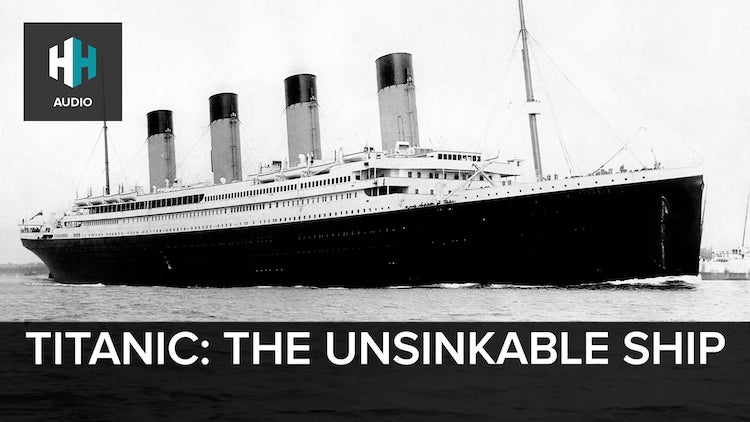
8. A lifeboat drill scheduled for the 14 April was called off
This was possibly because Captain Edward Smith wished to deliver a final Sunday service before retirement. The ship sank that night.
The crew had only done one lifeboat drill, whilst the ship was docked.
Even if the crew had been better trained and each lifeboat had been filled, there was only sufficient space for around a third of the ship’s maximum capacity. It was believed that the ship would not sink, so there would be time to ferry passengers off it.
This oversight was made possible by the Merchant Shipping Act of 1894, which was not updated to accommodate ships exceeding 10,000 tonnes.
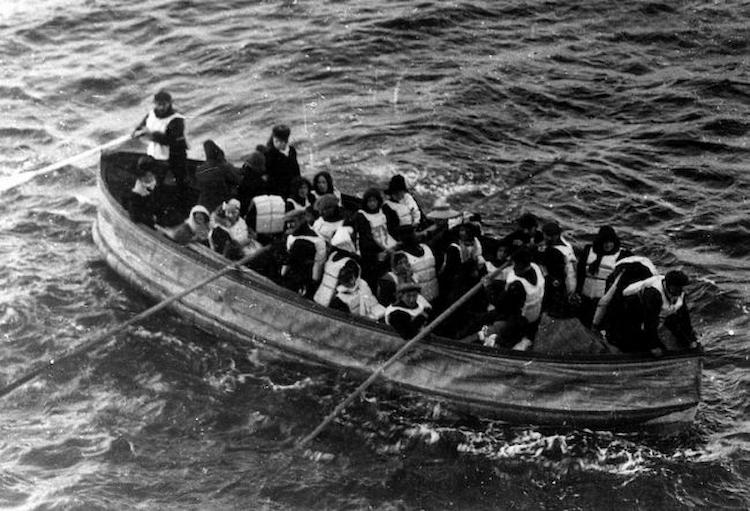
Photograph taken by a passenger of Cunard Line’s RMS Carpathia of a lifeboat from the Titanic
Image Credit: passenger of the Carpathia, the ship that received the Titanic's distress signal and came to rescue the survivors, Public domain, via Wikimedia Commons
9. The wreck was discovered in the last 50 years
The Titanic wreck lies 3,700 metres below the surface of the Atlantic. It was not discovered until 1985, at which time it was confirmed that the boat had split in two.
The task of finding the Titanic was included in a military operation to survey the remains of some nuclear submarines led by Robert Ballard.
The separated bow and stern are around a third of a mile apart. Debris from the ship covers an area of 15 square miles.
Many areas of the ship remain unexplored, as they are inaccessible to underwater vehicles.
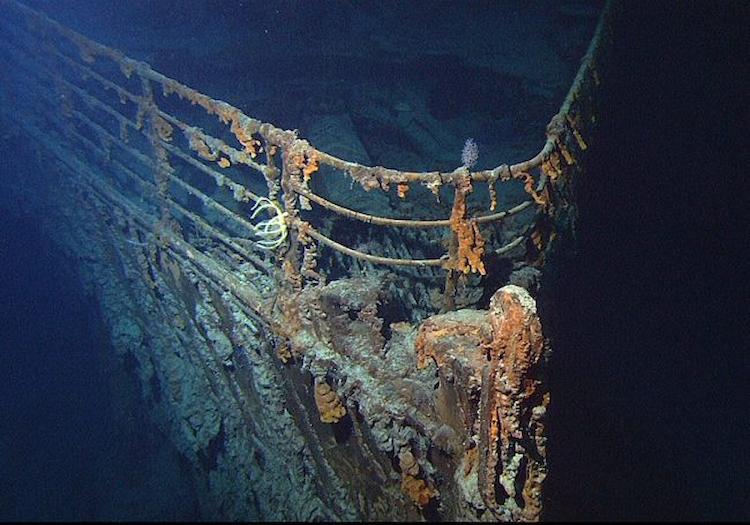
The bow of the Titanic photographed in 2004 by the ROV Hercules
10. Titanic’s legacy endures
The sinking of the Titanic has inspired many films and documentaries. A requiem tracking the launch, journey, sinking and aftermath of the Titanic was written by Robin and RJ Gibb, and performed by the Royal Philharmonic Orchestra.
Whilst the ship itself is too fragile to be brought to the surface, innumerable smaller parts and objects have been salvaged. Many, including a section of the hull, sit in the Luxor Hotel on the Las Vegas Strip.
You May Also Like

Mac and Cheese in 1736? The Stories of Kensington Palace’s Servants

The Peasants’ Revolt: Rise of the Rebels

10 Myths About Winston Churchill

Medusa: What Was a Gorgon?

10 Facts About the Battle of Shrewsbury

5 of Our Top Podcasts About the Norman Conquest of 1066

How Did 3 People Seemingly Escape From Alcatraz?

5 of Our Top Documentaries About the Norman Conquest of 1066

1848: The Year of Revolutions

What Prompted the Boston Tea Party?

15 Quotes by Nelson Mandela

The History of Advent
70 Huge Facts About the ‘Titanic’
By kat long | mar 24, 2023, 11:38 am edt.
When the Titanic crashed into an iceberg and sank in the early hours of April 15, 1912, the disaster inspired countless books, Titanic museum exhibits, several Hollywood films (including one that earned a Best Picture Oscar ), and a cottage industry of theories and memorials. The Titanic sinking became the most infamous shipwreck in history—but what really happened on that unusually calm night in the North Atlantic? Read on for some surprising Titanic facts.
1. The Titanic was built to compete with other ships.
In the early 20th century, new technology and an increasing population of European immigrants allowed Britain’s largest passenger steamship lines to build the biggest and most opulent ocean liners then known. Liverpool-based Cunard launched the two fastest and sleekest liners, the Mauretania in 1906 and the Lusitania in 1907, capable of crossing the Atlantic Ocean in record time. The White Star Line, hoping to compete with its main rival, countered by ordering three massive ocean liners—the Olympic , Titanic , and Britannic . Built by the Harland & Wolff Shipyard in Belfast, Ireland (now Northern Ireland), the ships were designed to be the most luxurious liners afloat.
On board the RMS Titanic (the “RMS” stood for “royal mail ship”), passengers could enjoy the swimming pool, squash and tennis courts, a gymnasium, sunrooms, fine dining rooms, and much more. The ship had “one hundred more first-class cabins than the Olympic , and a Parisian boulevard on B Deck [was added] to create the illusion of a sidewalk café. Ultimately, the Titanic outweighed her sister by more than 1000 tons,” Paul R. Ryan wrote in the Woods Hole Oceanographic Institution magazine Oceanus .
2. Thomas Andrews didn’t really design the Titanic .
Harland & Wolff’s chief naval architect Thomas Andrews played an important role in seeing the ship’s construction to completion, and he was part of the design firm’s “guarantee group” aboard the maiden voyage, there to look out for and potentially address any issues—but he wasn’t actually responsible for the aesthetic or practical design of the ship. By the time he became the shipyard’s chief architect, construction on Titanic was already underway.
Alexander Carlisle, the general manager of Harland & Wolff, claimed responsibility for “[t]he details, the decorations, the equipments, and general arrangements” for the Titanic and its sister ship, the Olympic . He also said the ships were “entirely designed practically by Lord Pirrie,” his brother-in-law.
The misattribution of Titanic ’s design comes primarily down to poetic license. When Walter Lord’s book A Night to Remember was turned into a film in the 1950s, the image of the ship’s conscientious designer perishing as his creation sank below the icy North Atlantic proved too tempting to filmmakers, even if it meant fudging the historical facts.
3. Everything on the Titanic was huge—except the number of lifeboats.
The Titanic was not only the largest passenger ship of its time—it was the world’s largest moving, man-made object. Its steel construction was held in place by 3 million rivets weighing 1200 tons. The ship’s main anchor weighed 16 tons —roughly the same as 32 concert grand pianos—while each link in the anchor chains weighed 175 pounds. Twenty-nine boilers produced enough energy to achieve 50,000 horsepower and an average speed of 21 knots (just over 24 mph). The distance between the keel (the underside of the ship) and the top of the four gigantic funnels was 175 feet. The ship measured 882.5 feet from bow to stern and 92.5 feet at its widest point. “She was, in short, 11 stories high and four city blocks long,” wrote Walter Lord in his definitive history of the Titanic sinking , A Night to Remember .
According to the British government’s official inquiry, the ship carried about 1316 passengers and 885 crew on its maiden voyage (other sources have slightly different numbers), but only 20 boats, each of which could safely hold between 40 and 60 people for a total capacity of 1178. At the time, Board of Trade regulations for passenger liners required only 14 lifeboats on board. The Titanic had 14 lifeboats plus two cutters and four collapsible boats.
4. Alexander Carlisle wanted to install more lifeboats on the ship.
He said during the inquiry into the sinking that he had laid out a plan to include as many as 40. Thomas Andrews was also said to have petitioned for more lifeboats , but was supposedly rebuffed by J. Bruce Ismay, the chairman of the the White Star Line, because the vessels would ruin the view for first-class passengers on the upper deck.
5. The Titanic was launched with the help of 20 tons of lubricant.
Before it could get out to sea, Titanic had to make its way from land to water via a large slipway—emphasis on the slip . Over 20 tons of lubricant—primarily rendered animal fat and soap—were applied to the slipway to ease the ship’s transition into the water. (It worked: in just over a minute, the ship was in the water, “as though she were eager for the baptism,” in the somewhat inappropriate language of the Belfast News Letter .) And once the Titanic was in the open seas, it burned so much coal that roughly 110 tons of ash were dumped into the Atlantic Ocean every day of its journey.
6. The plot of an 1889 novel bore eerie similarities to the events that would befall the Titanic .
The Wreck of the Titan, or, Futility , by little-known novelist Morgan Robertson, may not have predicted the Titanic’ s sinking, but it includes some uncanny coincidences. In the book, the most fabulous ocean liner ever built—the Titan (!)—is crossing the Atlantic on its maiden voyage when it collides with an iceberg and sinks. The Titan was 800 feet long; the Titanic was 882.5 feet. Both ships could reach speeds of 25 knots. Both sailed in April. Both could carry 3000 people, and both had far too few lifeboats.
7. The Titanic set sail on its maiden voyage April 10, 1912, leaving from Southampton, England.
In what can now be interpreted as a bad omen, the ship almost immediately had a run-in with another ship, the New York, which was docked nearby. The New York was evidently pulled toward the Titanic as it took off due to suction, and it took an hour of maneuvering to prevent an accident. Weirdly, a similar thing had happened with the Titanic ’s sister ship, the Olympic , which actually did collide with another ship called the Hawke and had to undergo weeks of repair.
8. Its passengers hailed from across the globe.
As you might expect, the vast majority of passengers aboard Titanic were either American or European. American, British, Irish, and Swedish passengers were the best-represented nationalities. But there were people aboard from all over the world, including a large number of Syrian passengers. South African, Portuguese, Australian, and Chinese travelers filled the various cabins as well.
9. Captain Edward Smith was well regarded by celebrity travelers.
Many of the crew and passengers aboard Titanic were as notable as the ship itself. Captain Edward John Smith became popular with so many rich and famous passengers over the course of his career that people called him “the millionaires’ captain.” In fact, some VIPs enjoyed his company so much that they made it a point to travel on his ships.
10. John Jacob Astor IV was the Titanic ’s wealthiest passenger.

Today, John Jacob Astor IV is probably best remembered for building a few of New York City’s most famous hotels—including the St. Regis, the Knickerbocker , and the Astoria half of the Waldorf-Astoria.
Astor inherited a lot of his wealth from his ancestors’ success in the fur trade . It definitely didn’t come from his short-lived career as a science fiction writer. In 1894, he published a novel called A Journey in Other Worlds : A Romance of the Future . The story, set in the year 2000, features space travel, solar power, and a global telephone system. It also features something called the “Terrestrial Axis Straightening Company,” which could literally straighten Earth’s tilt, and clairvoyant spirits that live on Saturn. And oh yeah—Jupiter is a jungle full of winged lizards and carnivorous plants . The New-York Daily Tribune bought the premise, writing , “The author … dates the story so as to make it consistent with the advances which shall have been achieved in science and otherwise in the year 2000.” Optimistic!
11. First-class travelers enjoyed haute cuisine …
Those rich passengers had some rich accommodations on board. A first-class luncheon menu offered dozens of delectable dishes, including fillets of brill, chicken à la Maryland, grilled mutton chops, corned beef, mashed, fried, and baked jacket potatoes; apple meringue, custard pudding, salmon mayonnaise, Norwegian anchovies, soused herrings, potted shrimps, roast beef, galantine of chicken, veal and ham pie, corned ox tongue, and French and English cheeses, all washed down with iced draught Munich lager.
That menu represented the last lunch ever served on the Titanic . It was retrieved by first-class passenger Abraham Lincoln Salomon and sold at an auction in 2015 for $88,000.
12. … While third-class passengers supped on less extravagant fare.
The food options for those in third class were still quite hearty. If you couldn’t afford a ticket to the fancy first-class dining room, you might have eaten in the third-class saloon on Deck F. Roast pork with onions, boiled potatoes, currant buns, and plum pudding were some of the offerings for those that could paid the £7 ticket (which is equivalent to about $725 today.)
13. To work off all of those extravagant meals, Titanic passengers had access to a pretty impressive gymnasium.
Some of the highlights included punching bags, “cycle racing machines” (which were essentially stationary bikes), an electric horse and an electric camel, and a squash court. Women were allowed to use the gym in the morning, and men were permitted in the afternoon. One of the more ironically efficient pieces of exercise equipment available was a mechanical rowing machine.
14. The Titanic had its own luxurious Turkish bath.
It was reserved for first-class passengers and included steam rooms, massage rooms, and an electric bath, which sounds like a recipe for disaster. In his book Titanic: Building the World’s Most Famous Ship , author Anton Gill described it as resembling an iron lung or “a modern tanning bed, which even sophisticated first-class passengers viewed with suspicion.”
15. Passengers’ cabins were appointed according to class.
Sleeping arrangements varied greatly by ticket price. First-class passengers could have enjoyed one of the 39 private suites at the top of the ship, which had two large bedrooms and even a guest room.
Second-class passengers would often be in a room a bit lower in the ship with either two or four beds that had a sink and mirror, but no private bathrooms. They did have access to an outdoor promenade, smoking room, and library, however.
Third-class passengers slept near the noisy bottom of the ship. Rooms with bunk beds held up to 10 people at a time. Single men slept in the bow of the ship, while single women and families were usually in the stern. Reportedly, there were only two baths for everyone in third class, which comprised over 700 passengers.
16. In April 1912, ocean liners encountered more icebergs than usual in the North Atlantic.
Icebergs were a common sight between Ireland and Newfoundland, but a 2014 study published by the Royal Meteorological Society suggested that weather conditions produced more of them than average in April 1912. Freezing air from northeast Canada met the southward flow of the Labrador Current off the coast of Newfoundland, leading to a stream of icebergs that were swept farther south than was typical for most of the 20th century. “In 1912, the peak number of icebergs for the year was recorded in April, whereas normally this occurs in May, and there were nearly two and a half times as many icebergs as in an average year,” the authors wrote.
Richard Norris of the Scripps Institution of Oceanography told Physics World that environmental conditions that year happened to conspire so that “icebergs, sea ice, and growlers were concentrated in the very position where the collision happened.”
17. The Titanic ’s radio operators received warnings about ice from other ships.
On April 14, 1912, the Titanic received several wireless messages from other ships warning of ice along their routes. Shortly before hitting the iceberg, the Titanic ’s radio operator received a warning from another ship, the Californian , about the risks presented by a nearby ice field. The message evidently didn’t have the proper coding to ensure it made its way to Captain Smith, though, and it didn’t include the precise location of the ice field. The response from Titanic ’s radio operator? “Shut up,” according to testimony from the Californian ’s operator Cyril F. Evans.
18. The Titanic was thought to be unsinkable.
Contrary to popular belief, the White Star Line never touted the Titanic as “unsinkable” ahead of its maiden voyage. It did come pretty close, but always hedged on the claim. A 1910 article in the Birmingham Weekly Post reported , “As far as it is possible to do so, [the Titanic and Olympic ] are designed to be unsinkable.” There were also references to Titanic being “practically unsinkable,” but nothing quite as hubristic as Cal Hockley’s statement that “God himself could not sink this ship” (and please do not mention that Cal Hockley was not a real person ).
The most famous “unsinkable” statement actually came after the ship had sunk. As the first reports of the disaster started coming in, White Star Line executive Philip Franklin said , “We place absolute confidence in the Titanic . We believe the boat is absolutely unsinkable.” Hours later, Franklin admitted he was wrong but maintained “there were a sufficient number of lifeboats on board the Titanic to take all her passengers.” Wrong again.
19. The Titanic’ s watertight bulkheads were supposed to keep it afloat.
The ship had 16 watertight bulkheads, from bow to stern below the waterline, that would keep the ship afloat even if the first four of the compartments were breached. Unfortunately, at 11:40 p.m. on April 14, 1912, the lookout saw a towering iceberg directly in the Titanic’ s path. The alarm was relayed to the bridge, where First Officer William Murdoch ordered the ship put “hard-a-starboard” and the engines reversed; he also pulled the lever that closed the watertight compartment doors. But it was too late. Thirty-seven seconds after the lookout’s warning, the Titanic grazed the iceberg on the starboard side, opening a series of cuts that stretched across six consecutive watertight compartments 10 feet above the keel. Within 10 minutes, 7 feet of water filled the first compartment.
Based on glacier calving data from Greenland, the Royal Meteorological Society study suggested that the iceberg had originated on Greenland’s west coast and measured about 125 meters (410 feet) long and 15 to 17 meters (49 to 55 feet) tall above the ocean’s surface, giving it a mass of 2.2 million tons. The dimensions are consistent with those in a photo of an iceberg bearing a streak of red paint, photographed by the captain of the Minia , a rescue ship later sent to pick up Titanic survivors.
20. After the collision, few Titanic passengers were worried.
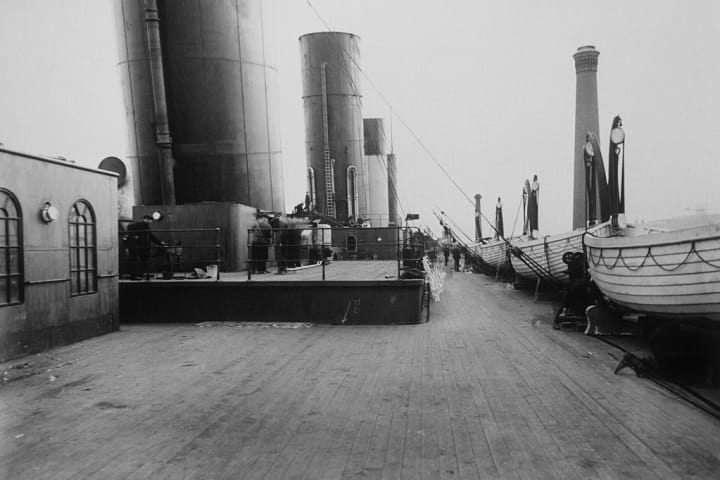
When the ship smashed into the giant berg, smaller bits of ice fell onto the ship’s deck. People turned these little chunks of the deadly iceberg into playthings; some lobbed the ice at one another, while others began a game of soccer , using the ice as a ball.
For his 1955 book, Walter Lord spoke with more than 60 Titanic survivors, who echoed this initial lack of concern after the collision with the iceberg. Many in first and second class hardly felt the impact and either went back to what they were doing or asked crew members why the ship’s engines had stopped. But soon, the truth began to dawn on them , according to Lord’s account:
“Far above on A Deck, second class passenger Lawrence Beesley noticed a curious thing. As he started below to check his cabin, he felt certain the stairs ‘weren’t quite right.’ They seemed level, and yet his feet didn’t fall where they should. Somehow they strayed forward off-balance … as though the steps were tilted down toward the bow.”
21. The Titanic ’s postal clerks raced to save the mail.
Just hours earlier, the Titanic ’s five sea post clerks were having a small birthday party for Oscar Scott Woody, one of their own. They had spent the day, as they did every day at sea, sorting mail so it could be easily dispatched once the ship reached land. After the collision, the sea post clerks hurried down to the mail sorting room. The cruise liner was carrying as many as 9 million pieces of mail: There were 200 registered mail sacks, stuffed with a total of about 1.6 million pieces of mail, plus another 3164 bags of standard mail, each full of about 2000 items.
For the sea post clerks, losing the mail was simply not an option: they had sworn to protect it at all costs. As the mailroom quickly filled with water, they focused on lugging the sacks of registered mail to the upper decks.
Time was against them. Even as their storage room flooded in the 20 minutes after the ship struck the iceberg, the five men dashed between the sorting room and the Titanic ’s higher levels, ferrying as much mail as they could to safety. But their efforts were futile. Every single one of the sea post clerks—as well as all of their mail— was lost in the disaster .
22. Titanic passengers and crew hadn’t received clear instructions for boarding lifeboats.
Once it became clear that the ship was listing, the process of filling the boats was chaotic. Women and children boarded first, with deference given to first- and second-class passengers; their male companions were told (or opted) to stay with the ship. Boats were lowered with only half of their seats filled. Male and female third-class passengers were largely left to fend for themselves.
23. The Titanic ’s band kept playing.
They kept going for two hours and five minutes after the iceberg impact, attempting to maintain a façade of calm as the chaos unfurled around them. According to legend, the last song they played was the hymn “ Nearer, My God, to Thee .” But it’s not clear that’s true. As one survivor recalled, the ship’s final song was “Autumn,” which historians usually identify as a waltz called “Songe d’Automne.” According to Ian Whitcomb , who produced a CD of music played aboard the Titanic , the band would have never played a sad song like “Nearer, My God, to Thee” during a maritime disaster, and would have instead opted for a more upbeat tune.
All of the Titanic ’s engineers chose to stay behind, as well, even after the captain had freed them of their duties. They worked nonstop to try to keep the ship running.
24. The Titanic ’s wireless operator called for rescue using two distress signals.
The Titanic had a Marconi telegraph , so its operator signaled for help using “CQD,” the distress code created by the Marconi Company. Five years earlier, however, the Morse code distress signal “SOS” had officially been put into use as well. After the Titanic’s junior wireless operator Harold Bride joked that they should try “SOS” as well as “CQD,” senior operator Jack Phillips used both codes.
25. Benjamin Guggenheim sent a sentimental final telegram.
Benjamin Guggenheim, one of the wealthiest passengers aboard, instructed a steward to transmit the following message to his wife, Florette Seligman Guggenheim: “If anything should happen to me, tell my wife in New York that I’ve done my best in doing my duty.” Guggenheim and his valet went down with the ship.
It was a very dignified end to a marriage that had begun on less dignified ground, thanks to a typo. When the Seligmans telegrammed their European relatives about Ben and Florette’s engagement circa 1894 , they meant to write “Florette engaged Guggenheim smelter,” a reference to the groom’s family-owned mining business. According to their daughter, famed art collector Peggy Guggenheim, the cable accidentally closed with “Guggenheim smelt her.”
26. Ida Strauss gave her seat on a lifeboat to her maid.
Macy’s co-owner Isidor Straus and his wife, Ida, declined seats on a Titanic lifeboat. Ida gave her spot—and her fur coat —to her maid, Ellen Bird. Perhaps for good reason: Ellen almost wasn’t on the ship at all.
On April 4, Ida wrote to her children from London explaining that she’d hired a “nice English girl”—i.e. Ellen—to replace their former maid, Marie, whom they’d just discharged because “she has been behaving very badly over here. When papa sours on a girl you know there is good cause, and he is disgusted with her.” Marie … What did you do? And also … good call?
27. The Californian was the closest ship to the Titanic , but didn’t come to its aid.
The nearest ship, a merchant vessel called the Californian , was fewer than 10 miles away from the Titanic when it began sinking, but it failed to act on the liner’s distress signals. The reasons for the inaction have been debated ever since. Scholars have argued that the Californian had stopped its engines for the night due to icebergs and the wireless operator, Cyril Evans, had gone to bed. Those two factors may have prevented the Californian’s crew from realizing the extent of the disaster and responding in time.
28. The Carpathia , belonging to White Star’s rival Cunard, came to the Titanic ’s rescue.
That left the Cunard passenger steamship Carpathia , 58 miles away, to come to the Titanic’ s aid. It took almost two hours to reach the first Titanic survivors and arrived at the Titanic ’s last coordinates around 4 a.m., then began picking up survivors in lifeboats.
29. Hundreds of Titanic survivors were rescued—but more than a thousand perished.
The Carpathia then spend toward New York City with hundreds of shivering, shocked survivors on board. Its captain, Arthur Henry Rostron, later received the Congressional Gold Medal for his efforts.
Of the 2201 passengers and crew on board the Titanic , just 711 survived the sinking, a death toll of 1490 according to the British government’s figures . (Other inquiries found 1503, 1517, and as high as 1635 deaths). First-class passengers suffered the fewest casualties—203 out of 325, or 62 percent, survived. In second class, 118 of 285 passengers, or 41 percent, survived. And in third class, just 178 of 706 passengers, or 25 percent, made it out alive.
Of the crew, 673 out of 885, or 76 percent, went down with the ship, including Captain Edward Smith, First Mate William Murdoch, the Marconi wireless operator Jack Phillips, who sent the CQD and SOS distress signals; and all eight members of the Titanic’ s band.
30. A department store telegraph manager may have broken the news of the Titanic sinking.
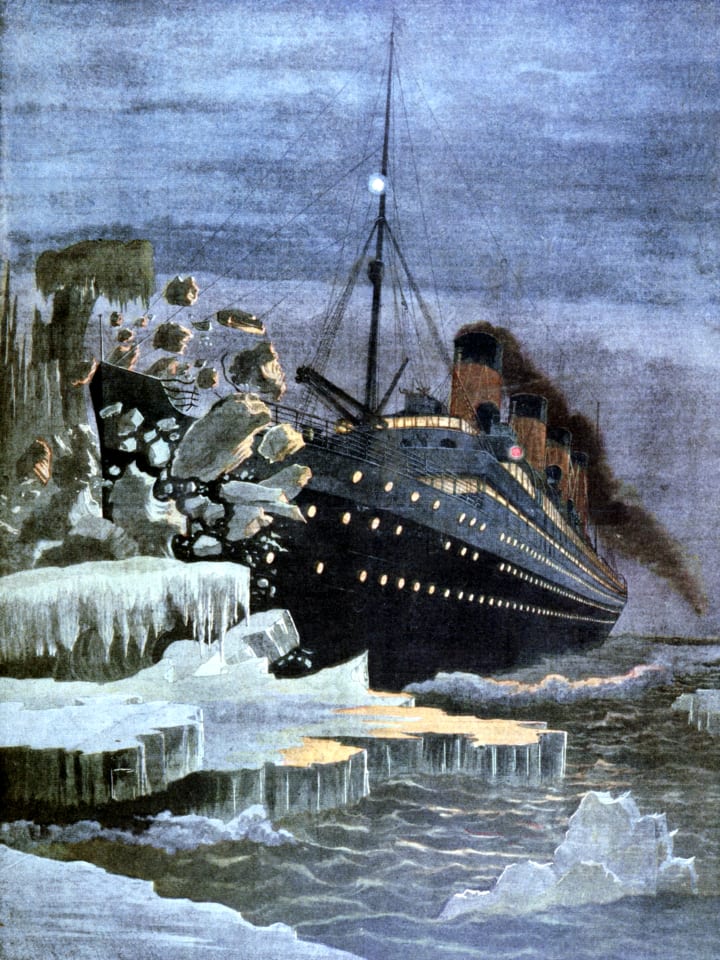
After the Titanic’ s final wireless message, listeners sought updates from ships sent to its aid. Only fragments of messages reached New York, where the Titanic had been headed. David Sarnoff, a Marconi manager at the Wanamaker’s department store in New York, picked up a message at 4:35 p.m. on April 15 from the Olympic relaying definitively that the Titanic had sunk. Sarnoff and his two wireless operators told the press and continued to intercept messages relayed from the Cape Race station in Newfoundland.
Later, Sarnoff exaggerated the details and his role in the Titanic sinking, claiming that he alone received a distress signal from the Titanic itself and then remained in the Wanamaker’s wireless station for 72 hours straight to receive the names of the survivors.
31. The White Star Line hired other ships to retrieve bodies.
The cable company ship Mackay-Bennett , chartered specifically for its grim task, left Halifax, Nova Scotia, to go pick up the dead. Along with a minister and an embalmer, the ship carried all of the embalming fluid available in Halifax, 100 wooden coffins, 100 tons of ice, and 12 tons of iron. After seven days at the site where the Titanic went down, the Mackay-Bennett’s crew had recovered 306 Titanic victims’ bodies. Many were embalmed and transported to Halifax, but eventually the supplies were exhausted; the last 116 had to be buried at sea.
32. Titanic carried at least 12 canine passengers on its final voyage.
Sadly, only three survived —and they shared two traits in common. They were owned by first-class passengers, and they were tiny. Margaret Bechstein Hays smuggled her Pomeranian onto a lifeboat by wrapping her in a blanket. Elizabeth Jane Rothschild also owned a Pomeranian, and she kept it hidden from the other passengers on her lifeboat until they were rescued by the Carpathia in the morning. The third dog was a Pekingese named Sun Yat Sen, named after the first president of the Republic of China. When the dog’s owner, Henry S. Harper , was later asked about bringing a pet into a lifeboat with limited space, he replied, “There seemed to be lots of room, and nobody made any objection.”
People traveling with bigger dogs had a harder time sneaking their furry companions off Titanic . According to one legend, Ann Elizabeth Isham refused to board a lifeboat if it meant abandoning her beloved pup, and instead chose to perish with him on the ship. Though the legitimacy of this story is disputed, it is true that Isham was one of just four women from first class who died in the disaster.
33. The Titanic sinking left tragic “what if?” questions.
Walter Lord summed up the chain of tragic—and avoidable—missteps that led to the disaster:
“If the Titanic had heeded any of the six ice messages on Sunday … if ice conditions had been normal … if the night had been rough or moonlit … if she had seen the berg 15 seconds sooner—or 15 seconds later … if she had hit the ice in any other way … if her watertight bulkheads had been one deck higher … if she had carried enough boats … if the Californian had only come. Had any one of these ‘ifs’ turned out right, every life might have been saved.”
34. The Titanic ’s high speed seemed suspicious.
One of the most commonly identified culprits in the collision is the high speed at which the Titanic was traveling. Some speculated, after the crash, that Captain Smith had been trying to set a new speed record for crossing the Atlantic Ocean. That idea is pretty easily debunked based on the ship’s route and pace. A more plausible, though probably unconfirmable, theory is that Smith was simply trying to best the crossing time recently achieved by the Olympic . That might explain why Smith went so quickly through a field of icebergs. But it’s not the only possible reason.
35. Antarctic explorer Sir Ernest Shackleton testified at the Titanic sinking inquiry.
Sir Ernest Shackleton , already a widely hailed veteran of two expeditions to Antarctica, knew a lot about icebergs, which explains why he was called as an expert witness in the British government’s inquiry into the Titanic sinking. He believed it was likely that the lookouts missed the gigantic iceberg in the ship’s path until it was too late. “With a dead calm sea there is no sign at all to give you any indication that there is anything there. If you first see the breaking sea at all, then you look for the rest and you generally see it,” Shackleton said. “From a height it is not so easily seen; it blends with the ocean if you are looking down at an angle like that.”
Shackleton wasn’t the only celebrity to offer testimony: Guglielmo Marconi , a Nobel laureate and inventor of the wireless system used on nearly every ocean liner by that point, explained the regulations for sending distress signals .
36. The Titanic ’s youngest passenger grew up to be its oldest survivor.
Millvina Dean was only two months old when she boarded Titanic with her family in 1912. The Deans had planned to sail to America to open a tobacco shop in the Midwest. They actually booked passage on a different ship owned by the White Star Line. When that trip was canceled due to a national coal strike, the company offered them third-class tickets on the Titanic as a replacement.
Millvina, her mother Georgetta, and her 23-month-old brother Bertram, Jr. survived, but her father Bertram died in the shipwreck. Georgetta moved her children back to England, and Millvina grew up to work as mapmaker for the British Army and later as a secretary at an engineering firm. When asked about the impact the incident had on her in 2002, she said with characteristic British reserve, “It changed my life because I would have been American now instead of English.” The youngest survivor of Titanic eventually died as its oldest living survivor at age 97 on May 31, 2009 .
37. A Titanic crew member survived shipwrecks on all three of White Star’s luxury liners.
Stewardess Violet Jessop had already lived through one maritime snafu when she boarded the Titanic . In 1911, she was working aboard the Olympic when it collided with a smaller ship off Southampton, but both ships were repaired and put back into service. She survived the sinking of the Titanic in lifeboat number 16, which was picked up by the Carpathia . And in 1916, during World War I, she survived the wreck of the Britannic when it hit a mine in the Mediterranean Sea. Jessop continued to work at sea until 1950.
38. Other Titanic survivors were not as lucky.
Mary (or Maria) Nackid was the first person to die after surviving the disaster , succumbing to meningitis in July 1912 at just a year old. Some who made it off Titanic ended up dying at sea within years of the incident: Titanic greaser Frederick William Scott , who had oiled machinery aboard the ship, died three years later in an explosion on the S.S. La Marguerite .
One of the most famous Titanic survivors to die shortly after the wreck was Reginald Robinson Lee . Along with Frederick Fleet , Lee was a lookout in the crow’s nest when the ship hit the iceberg that brought it down. He went back to working at sea until late summer of 1913, when he died of complications related to pneumonia at age 43.
39. White Star’s director was vilified after the Titanic disaster.
J. Bruce Ismay , the aforementioned managing director of the White Star Line, survived on collapsible lifeboat C—and became the villain of the whole affair for doing so, with an assist from the film adaptation of A Night to Remember . Rumors flew that Ismay had hopped into the very first lifeboat—he hadn’t—and that he’d even disguised himself as a woman to secure a spot, which was also untrue. It didn’t matter. The press blasted him, and people called him “ J. Brute Ismay .”
The name Ismay was so despised that reports surfaced of residents in Ismay, Montana, maneuvering to rename their town after someone who did go down with the ship. They supposedly considered Astor, Butt, Smith, and Straus. But according to J. Arthur Peck, an Ismay school principal, all those reports came as a surprise to Ismay locals.
As he wrote in a letter to The Star Press of Muncie, Indiana, “We would not attach any undue importance to this newspaper talk were it not for a feeling that an injustice had been done to our town and also to Mr. Ismay. We feel very well satisfied with the name of our thriving little community, and would not recognize any necessity of changing it even if someone bearing the same name had reflected discredit upon it.”
Peck went on to defend the disgraced director. So if certain inhabitants were talking about retitling their town, maybe they just decided not to share the plans with Peck. In any case, they never came to fruition: Ismay is still Ismay today. Population: 17 .
40. The later lives of six Chinese passengers who survived the shipwreck are mysteries.
J. Bruce Ismay and many other survivors have been immortalized in books and movies, but the fates of at least six people who made it onto the Carpathia remain largely unknown. Lee Bing, Fang Lang, Chang Chip, Ah Lam, Chung Foo, and Ling Hee were part of a group of eight Chinese sailors being reassigned from their route in Britain to North America. When the ocean liner struck the iceberg, five of the men escaped onto lifeboats.
Fang Lang went into the water with the ship, but he managed to survive by holding onto a piece of debris until help came. Due to the Chinese Exclusion Act, his life after the disaster was a mystery for decades. The anti-immigration law prevented the six Chinese passengers on Carpathia from disembarking in New York with the rest of the survivors. They were instead put to work on a cargo ship bound for Cuba and disappeared from the public eye. The stories of their post- Titanic lives remained untold until 2020, when the James Cameron-produced documentary The Six premiered. The filmmakers traced the paths of some survivors, including Fang Lang, whose own son hadn’t known he’d been on Titanic until after his death in 1985.
Lang’s survival aboard ship debris even inspired part of the ending for that other James Cameron film about Titanic .
41. The first Titanic film was released on May 14, 1912, just 29 days following the sinking.
The producers behind the first-ever Titanic film wasted no time in getting the story of the ship on screen. Saved from the Titanic starred Dorothy Gibson, an actress who was on board the actual Titanic and lived to—well, act about it. She even wore the same clothes she had on as a passenger. If this sounds like good psychotherapy, it wasn’t. Gibson was reportedly often upset during filming, and even at the time, the film was accused of being made in poor taste.
42. One 1970s Titanic movie cost more to make than The Empire Strikes Back .
The least appreciated Titanic film may be Raise the Titanic! , a fictional take which was based on a 1976 book by Clive Cussler, part of his bestselling Dirk Pitt adventure series. In Raise the Titanic! , the U.S. government attempts to salvage the ship to obtain a rare mineral that’s believed to be on board. Released in 1980, it cost $40 million to make, more than The Empire Strikes Back , but only grossed $7 million, or roughly what Lucasfilm probably makes in sales of baby Yoda action figures per minute.
43. Someone spiked the chowder on the set of James Cameron’s Titanic .
Everyone knows the real Titanic blockbuster came in 1997, when director James Cameron unleashed his massive production on the world and made it the highest-grossing movie of all time—at least, until his own Avatar and the Marvel Cinematic Universe came along. But making the movie was far from smooth sailing. Among its many production troubles was the time the cast and crew had to be rushed to the hospital after someone spiked the chowder from catering with PCP, a hallucinogenic street drug. No culprit was ever caught.
44. Titanic nabbed Oscar noms in 14 categories—but not Best Actor.
Tripping your eyeballs out on checkered chowder may have been a small price to pay, as Titanic was a $2 billion box office hit and an Oscar sensation. It scored nominations in 14 categories, with one notable exception: Leonardo DiCaprio. The omission of his name from the Best Actor slate prompted over 200 angry Leo-heads to call and write the Academy to complain.
45. People tuned into the Oscars to see a potential Titanic sweep.
Everyone wanted to see Titanic clean up at the ceremony, where it scored 11 wins. Roughly 87 million viewers tuned in at some point, making it the most-watched Oscars of all time.
46. Leo’s Titanic hairstyle was considered illegal in Afghanistan.
There was another faction besides the Academy that wasn’t a fan of DiCaprio’s character—the Taliban. United Press International reported in 2001 that the group had jailed barbers in Afghanistan for giving customers a haircut that resembled the floppy hairstyle DiCaprio sported in the movie, calling it an “anti-Islamic Western hairstyle.” Although the movie had been banned in the country, bootleg videotapes had circulated and caused a wave of Titanic fandom, including wedding cakes made in the shape of the ship.
47. Cameron changed a key moment in Titanic .
Cameron has never gone full Lucas in revisiting the film after the fact, but he did make one key change for the 3D release after getting an email from Neil deGrasse Tyson, who explained to him that the star field observed by Rose in the movie wouldn’t have been visible to her at that place and time. Cameron digitally altered it for accuracy, and the world finally knew peace once more.
48. No one knew the exact location of the Titanic wreckage for decades.
People were talking about searching for and salvaging the Titanic pretty much as soon as it sank. That promised to be a difficult task, thanks to its remote location in the North Atlantic, the depth of the ocean in the area, and the fact that no one knew exactly where it had gone down. An estimate made by an expert right after the incident put the ship 500 miles from Halifax and 70 miles south of the Grand Banks, at a depth of two miles .
In reality, Titanic was about 720 miles from Halifax—nearly 15 miles from the position given during distress calls—at a depth of nearly 13,000 feet. People assumed the ship had gone down in one piece, but in fact it was split into two big pieces around a third of a mile apart with a debris field measuring 15 square miles . And at the time, the technology to find the wreck and get humans down to it simply didn’t exist —the pressure where the Titanic rests is around 400 times greater than what we experience at sea level.
49. The first serious attempt to find the Titanic didn’t occur until 1953.
The salvage company Risdon Beazley Limited tried using explosives to generate soundwaves that would allow them to find the ship through echolocation. It was a good idea, but the company failed to turn up the Titanic .
Then, in 1960, Jacques Piccard and Don Walsh climbed in a bathyscaph and descended in a special vessel to the very deepest part of the ocean—Challenger Deep in the Mariana Trench, some 36,000 feet below the surface—and made it back alive. The feat showed that it was possible to get equipment and people down to the deepest, literally bone-crushing depths of the ocean. It also helped to inspire a man named Robert Ballard, who was 18 at the time of Piccard and Walsh’s groundbreaking voyage, and who, after a career in the military and developing submersibles of his own, would make it his goal to find the Titanic .
50. Robert Ballard made his first trip in search of the Titanic in 1977.
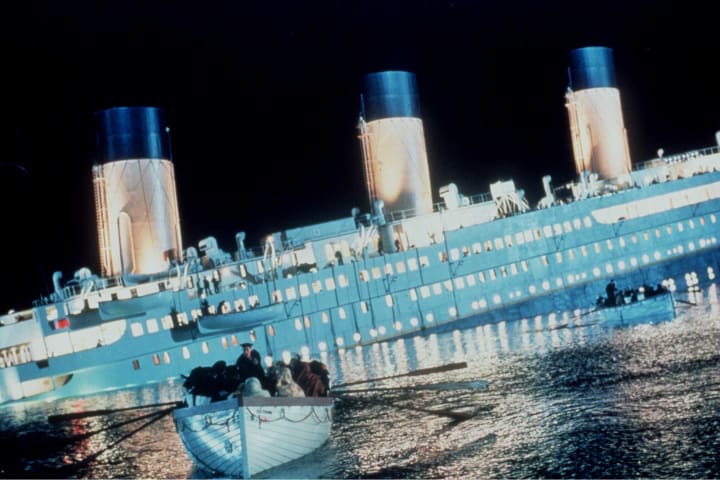
He sailed aboard a drillship that had cameras and other equipment on the drill pipe. He had to give up after the pipe broke , but he returned from the mission with a new goal: To build a remotely controlled submersible that could make the trip and explore the ocean floor for hours.
51. The true reason why Ballard was out there wasn’t declassified until the 21st century.
Ballard built his subs, but as you might imagine, mounting an expedition to the North Atlantic is not a cheap endeavor. So he had to get creative with his funding. And that’s why the mission that finally found the Titanic wasn’t technically searching for the ship at all.
Ballard went to the Navy and hit them up for funding to search for the Titanic . They were not on board with that, but they were interested in covertly checking out two subs that had sunk in the 1960s, the USS Thresher and the USS Scorpion . Ballard told CNN , “What they wanted me to do was go back and not have the Russians follow me, because we were interested in the nuclear weapons that were on the Scorpion and also what the nuclear reactors (were) doing to the environment.” This was the ‘80s, and the Cold War was very much on.
The Navy told Ballard that if he checked out the subs, he could spend whatever time was left over to do whatever he wanted . Ballard said yes. Ronald Reagan signed off. The mission was a go.
In the summer of 1984, Ballard set out for the North Atlantic, where, officially , he was testing his new remotely operated vehicles, or ROVs, the Argo and the Angus, and, in the words of The New York Times , was “only incidentally interested in the wreck” of the Titanic . That year, he sent his subs down to photograph and map the Thresher wreck .
52. Ballard had only 12 days to locate the Titanic .
He returned in the summer of 1985 on a ship called the Knorr , and on August 17, finished checking out the Scorpion . Now, he had 12 days to do with as he pleased. With help from a French ship with side-scanning sonar called the Suroit , it was time to look for the Titanic .
Using a detail he had learned from mapping the wreckage of the subs—which had imploded under pressure and spread wide debris fields—Ballard began to scan the sea floor looking not for the Titanic , itself, but for its debris field. This provided a much bigger target than the ship, and would hopefully lead explorers right to the motherlode.
53. Ballard’s crew worked around the clock.
As the days passed, Ballard was beginning to accept that this mission, too, would be a failure. Then, at 2 a.m. on the morning of September 1, Ballard was in his cabin reading when he heard a knock on the door. The ship’s cook told him that he was needed in the command center. Ballard recalled to Forbes that “I knew something had happened, so I flew out of my bunk and blew past him. It took me about four seconds to slide down six banisters of stairs.”
As the engineers piloted the ROV, its camera transmitted pictures to the research vessel. On September 1, 1985, an image of the Titanic’ s boilers slowly came into view—the first time in 73 years that people had seen the ship.
54. Ballard and crew began to celebrate—then stopped.
Someone pointed out that it was nearly the exact time the Titanic had sunk beneath the waves 73 years earlier. Ballard wrote in his memoir, Into the Deep , that he was deeply affected by the synchronicity: “A world tragedy had played itself out on this spot, and now the site itself took hold of me. Its emotion filled me and never let go.”
55. The Titanic was in surprisingly good condition.
The body of the ship was found the next day . While there was obviously some damage to parts of the ship from the collision with the iceberg and the subsequent sinking, Ballard said in interviews that the hull was “standing upright on the bottom. It appears to be in superb condition. One would expect that, given the fact that we’re working in extremely deep water that’s ice cold and in total darkness. It’s an environment of high preservation.” He described intact cases of wine bottles, unbroken plates, and a “totally pristine” but flagless flagpole on the bow, as well as very little marine growth .
56. Ballard initially kept the exact location to himself.
Ballard wouldn’t give the exact location of the wreck, saying, “The Titanic is in beautiful condition and we don’t want anyone to come out and maul it.” But its location wouldn’t stay secret for long: Thanks to photos released by researchers and a private plane circling overhead , the site of the ship’s watery grave soon became public knowledge.
57. He and his crew took 60,000 photos of the wreck.
In 1986, Ballard returned to the site and made the first crewed trip down to the wreck in a submersible, snapping nearly 60,000 photos and taking hours of video footage. From examining the wreck, they determined that the iceberg had not caused a huge gash in the ship, but instead had caused the seams in that area to split, which then flooded the ship with water .
Photos of the Titanic’s watery grave—its ghostly hull and a trail of unbroken wine bottles, silver platters, a leaded glass window, bedsprings, and other artifacts resting 2.4 miles below the surface—were published and broadcast around the world.
58. Marine microbes were covering the shipwreck in “rusticles.”
They also found that the ship was quite rusty, which left it fragile . About that rust: It was actually the work of ocean microbes that feed on the iron from the ship and form long “rusticles.” These microbes are literally devouring the Titanic . The stern is deteriorating more quickly than the bow, partly because food stored there provided nutrients for the bacteria. The steel there was also more distorted, which provided more surface area for the rusticles to form and thrive. Some believe it will only be a few decades before the Titanic disappears completely.
59. Scientists discovered a new species of bacteria on the Titanic .
In 2010, scientists announced that a new bacteria had been found in samples of rusticles brought up from the ship, which was dubbed Halomonas titanicae .
60. Ballard was disturbed by Titanic treasure hunters.
Ballard didn’t pull anything up from the wreck of the Titanic —he thought doing so would be akin to desecrating a gravesite , and was horrified by the Titanic -mania his discovery set in motion. Something he said in 2012 pretty accurately sums up his take: “You don’t go to Gettysburg with a shovel.”
61. Salvagers started recovering artifacts anyway.
Not everyone shared Ballard’s view, and beginning in 1987 , there were seven trips down to the wreck to recover artifacts , mostly by RMS Titanic Inc., which owns the salvage rights to the ship.
Interestingly, there’s a law that requires them to get permission to take anything off the actual ship itself, so they tend to focus on the debris field surrounding it. Also, fun fact: Since 2012, it’s been a big no-no for ships traveling in the area to jettison any garbage or sewage near the wreck.
62. Artifacts recovered from the Titanic reflect the passengers’ lives.
Among the artifacts that have been brought up are things like shoes—one even has the imprint of a foot inside—pajamas, gloves, and other clothing; sheet music from a Broadway show; a bronze cherub from the ship’s grand staircase; and a 30,000-pound piece of the ship’s hull . The items are shockingly well preserved thanks to the cold, dark, oxygen-poor environment where the ship rests, and the fact that some items, like the shoes, were treated with chemicals that actually made them impervious to ocean microbes. Even many paper items survived if they were contained in things like leather suitcases .
63. More than 5500 objects have been collected so far.
In all, RMS Titanic Inc has collected more than 5000 pieces. There was a long process to get the artifacts ready to be displayed. As the Dothan Eagle described it:
“When artifacts are recovered from the wreckage site, they are immediately placed in tanks of salt water. The treasures are slowly transitioned to salt-free water and then dried the next few months. Paper is freeze dried and then vacuumed to remove all salt and debris.”
All told, the process can take anywhere from several months to two years. The goal is to stabilize the artifacts to make sure they can be exhibited and studied for years to come.
64. Artifacts recovered from the wreckage are included in several Titanic museum exhibits.
In Liverpool, the Merseyside Maritime Museum’s Titanic collection includes important pieces of the ship’s story. A life belt saved by a Titanic survivor and a nameplate removed from one of the Titanic’ s lifeboats aboard the Carpathia are on display. There is an actual telegram, sent from the Carpathia’ s captain Arthur Rostron to Cunard headquarters, telling the company about the disaster. Artifacts retrieved from the wreckage itself include porcelain dishes, a pair of pince-nez glasses, and gold hat pins. The museum also owns the sole surviving first-class ticket for the Titanic’ s only voyage: The clergyman who bought it opted to stay home and tend to his wife who had fallen ill the night before departure.
The Smithsonian National Museum of American History also owns a number of Titanic artifacts , including Carpathia passenger Bernice Palmer Ellis’s Kodak “Brownie” camera and photos she took of the rescued Titanic survivors.
While the ship itself remains on the seabed, a 12-foot-by-26-foot piece of the starboard hull went on display in a Titanic museum exhibit at the Luxor in Las Vegas in 2011.
65. One artifact you won’t see—at least not anytime soon—is the Titanic ’s Marconi radio.
A judge actually ruled in 2020 that RMS Titanic Inc. could proceed with its attempt to collect the instrument used to send the famous distress calls, against the advice of the National Oceanic and Atmospheric Administration and UNESCO.
It was a controversial decision: Authors Helen Farr and Fraser Sturt, co-chairs of UNESCO’s Unitwin Network for Underwater Archaeology, wrote at The Conversation that the effort to get the radio was “directly at odds with the ethics of modern archaeological practice.” They went on to say that “From an archaeological perspective, recovering the radio will involve further damage to the memorial site for very limited gain with regard to scientific and cultural knowledge. We already know the make, model and history of this radio. So motivation for the salvage appears to lie in the radio’s economic potential as a tourist attraction and through a possible future sale.” The court ruling, they concluded, “risks suggesting that the principles of shared heritage and selective intervention can be easily negated through simplistic arguments of degradation and profit,” putting further culturally significant sites at risk.
And then, COVID happened. In 2021, RMS Titanic Inc. announced that they were short on funds due to exhibitions of artifacts being closed during the pandemic, which also made logistics way more complicated. The result was that they had to abandon the salvage mission indefinitely. So for now, the radio remains with the rest of the ship.
66. Deep-sea robots mapped the ship’s debris field.
In 2012, researchers from Woods Hole, the Waitt Institute, and RMS Titanic, Inc.—the wreck’s legal custodian —announced that they had created a map of the 15-square-mile debris field using underwater robots. Sonar data and about 10,000 photos were synthesized to create the high-resolution map, which revealed the widely scattered artifacts extending outward from where the two large bow and stern sections of the ship came to rest on the seafloor about a half-mile apart.
The data also provided new clues as to how the Titanic sank. After 1 a.m. on April 15, 1912, as the flooded bow dipped first, the ship’s stern rose out of the water at a steep angle. As the ship slid under the surface, the stern broke away and spiraled downward in a corkscrew pattern to the seabed, rather than falling in a straight line.
67. There might still be some cheese down there.
By the time the Titanic wreckage was found, most of the food that had sunk with the ship was long gone. But according to Holger W. Jannasch, senior scientist in Woods Hole's biology department in 1985, there might have been some brie lingering in the pantry. “Some foodstuffs, such as cheese, are protected from decay by the very microbial activity that starts the degradation process. If kept in boxes, it may have changed little over the extended time period,” Jannasch wrote in Oceanus . “The microbes that turn milk or whey into cheese produce either highly acidic or highly alkaline conditions, both of which protect these highly proteinaceous foodstuffs from further spoiling.” Similarly, wines seen on the seafloor “may still be drinkable and possibly of excellent quality, the normal aging process being slowed down during the [then 73] years of deep-sea storage at about 36°F,” he wrote.
68. Titanic II may never set sail.
Eccentric Australian billionaire Clive Palmer dreamed up Titanic II (not to be confused with the made-for-TV 2010 disaster flick of the same name). For history buffs and fans of Cameron’s film, it might go down as one of the best publicity stunts of all time. That is, provided it ever actually gets built or sets sail . The idea is to build a replica of the doomed ship. What could go wrong?
Pretty much everything: Since it was first announced in 2012 , the project has been besieged by bad luck, from financial disputes to criticism from notable figures like Charles Haas , president of the Titanic International Society, who disparaged it as “an imperfect approximation” of the famous ocean liner and referred to it as “a matter of sensitivity, respect, and thoughtfulness” in an interview with Scientific American in 2019. As Haas said, “We commemorate tragedies and those lost in them, not duplicate them.”
The ship was originally slated to set sail in 2016, but the launch was delayed to 2018 , then to 2022 . As of right now, the official website is a bit like a ghost ship itself: You can’t buy tickets and no official launch date has been released. Even the ship’s Twitter account seems virtually abandoned; it hasn’t been updated since 2019.
69. The company behind Titanic II , the Blue Star Line, seems to have taken its cues from the source.
The original RMS Titanic was owned and operated by the White Star Line. Titanic II is slated to look a lot like its namesake, but with some notable differences . The Titanic II is meant to hold 2400 passengers along with 900 crew members, which is greater than the 2200 passenger count of the original. It’ll also be 13 feet wider to meet current safety regulations and won’t be powered by steam engines and boilers, but rather by a diesel engine system .
70. Titanic II will have a lifeboat place for everyone on board.
According to reports, the ship is slated to start its journey in China, then eventually make its way to Southampton, England, and follow the same route as the original Titanic did in 1912 across the Atlantic Ocean, before ultimately ending up in New York City. Whether it’ll come into close contact with an iceberg along the way to fully recreate the experience still seems up for debate.
This article was originally published in 2019; it has been updated for 2023.
An official website of the United States government
Official websites use .gov A .gov website belongs to an official government organization in the United States.
International Section
R.m.s titanic - history and significance.
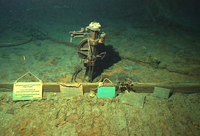
History, Culture and Iconic Interests in the United States and Abroad The R.M.S. Titanic is perhaps the most famous shipwreck in our current popular culture. Titanic was a British-registered ship in the White Star line that was owned by a U.S. company in which famed American financier John Pierpont "JP" Morgan was a major stockholder. Titanic was built in Belfast, Northern Ireland by Harland & Wolff for transatlantic passage between Southampton, England and New York City. It was the largest and most luxurious passenger ship of its time and was reported to be unsinkable. Titanic, launched on May 31, 1911 , and set sail on its maiden voyage from Southampton on April 10, 1912, with 2,240 passengers and crew on board. On April 15, 1912, after striking an iceberg, Titanic broke apart and sank to the bottom of the ocean, taking with it the lives of more than 1,500 passengers and crew. While there has been some salvage outside of the major hull portions, most of the ship remains in its final resting place, 12,000 feet below sea level and over 350 nautical miles off the coast of Newfoundland, Canada. Its famous story of disaster and human drama has been, and continues to be, recounted in numerous books, articles and movies. Titanic has been recognized by the United States Congress for its national and international significance and in many ways has become a cultural icon. The disaster also resulted in a number of memorials around the world. In the United States, there are major memorials in Washington D.C . offsite link and New York offsite link ; the Widener Library offsite link at Harvard University is another major memorial commemorating Henry Elkins Widener, a victim of the sinking. Investigation and the Development of Measures for Safety in Navigation The sinking of Titanic was one of the deadliest peacetime maritime disasters in history and quickly became a catalyst for change. The United States Congress held hearings offsite link on the casualty that resulted in a report offsite link and measures to improve safety of navigation offsite link . Similar investigations were held in the United Kingdom. The international community readily came together for the purpose of establishing global maritime standards and regulations to promote safety of navigation, the most important of which was the Convention for the Safety of Life at Sea (SOLAS), widely regarded as the most important of all international agreements on the safety of merchant ships.
- Frequently Asked Questions on History and Significance
- Titanic’s 100th Birthday May 31, 2012 NOAA
- One hundred years after the sinking of Titanic is the IMO World Maritime Day theme for 2012 offsite link
- R.M.S. Titanic Maritime Memorial Act of 1986 (1986 Act)
- International Agreement Concerning the Shipwrecked Vessel RMS Titanic
- NOAA Guidelines for Research, Exploration and Salvage of RMS Titanic
- IMO, the Titanic, and the Safety of Life at Sea Convention (SOLAS) offsite link
Last Updated July 10, 2018
- Grades 6-12
- School Leaders
Learn How to Support Stressed and Anxious Students.
67 Fascinating Facts About the Titanic
The ship that has captivated imaginations for over a century.
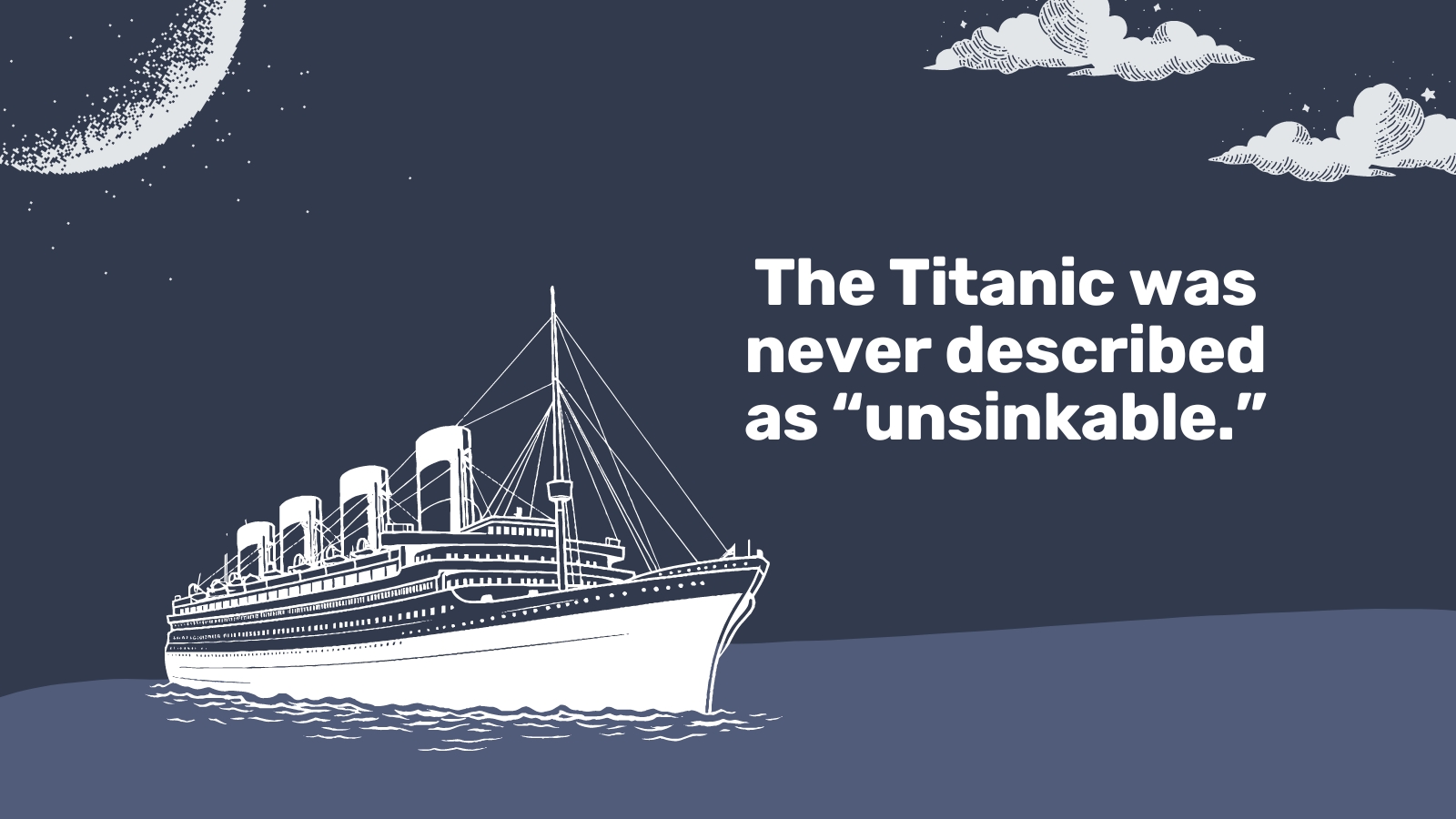
Titanic facts, like the iconic ship itself, are fascinating. The Titanic is infamous for hitting an iceberg and sinking on its maiden voyage from Southampton, England, to New York on April 14, 1912. The ship and its story have been the subject of many books and movies, and chances are students know something about it. These Titanic facts help round out the story.
Titanic Facts About the Ship
1. the titanic was never described as “unsinkable.”.

It was called “practically unsinkable” by its builders, and it did have some extra built-in safety features.
2. At the time, the Titanic was the largest object ever to move on water.
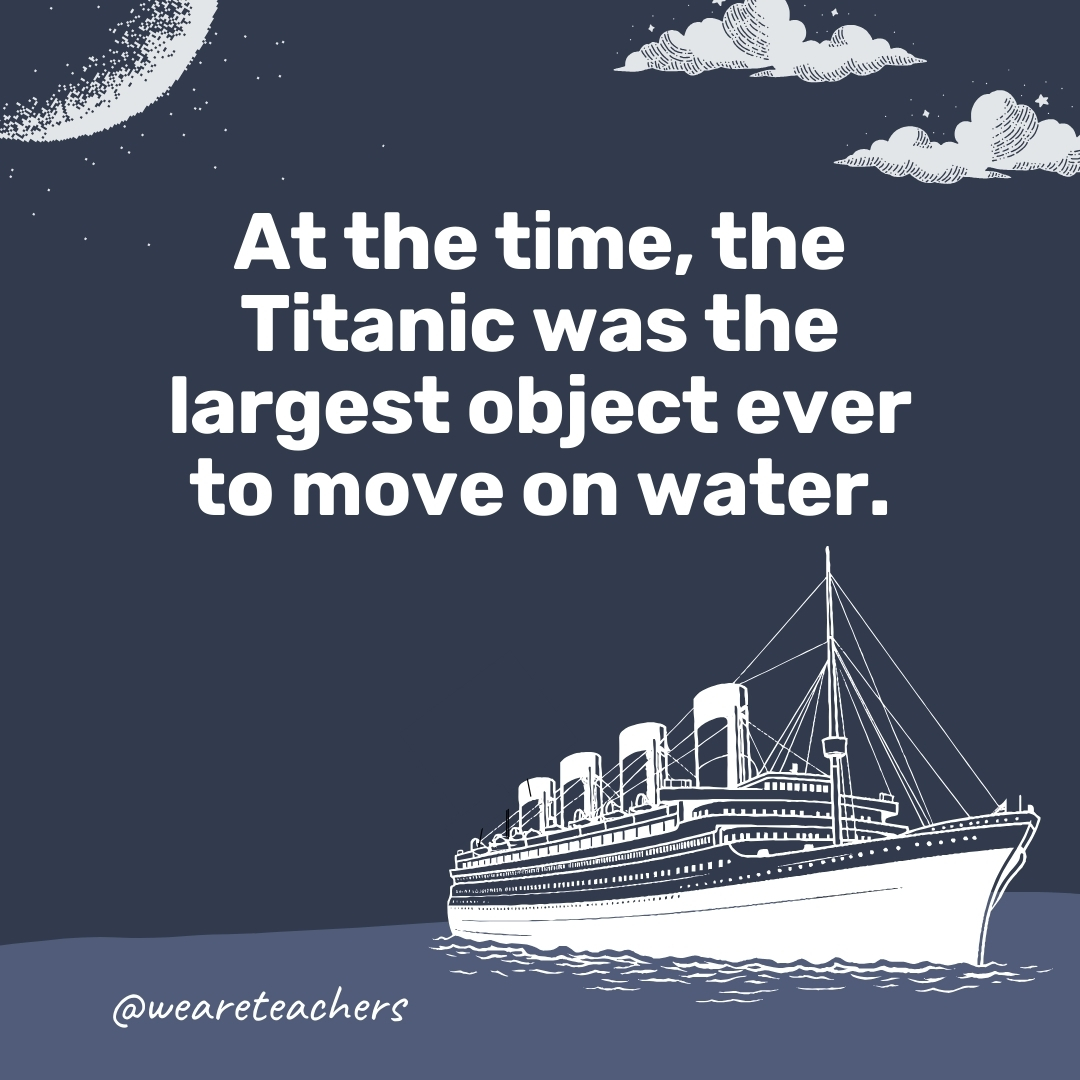
It was not supposed to be the fastest though. The Lusitania and Mauretania were faster.
3. The Titanic had a swimming pool.
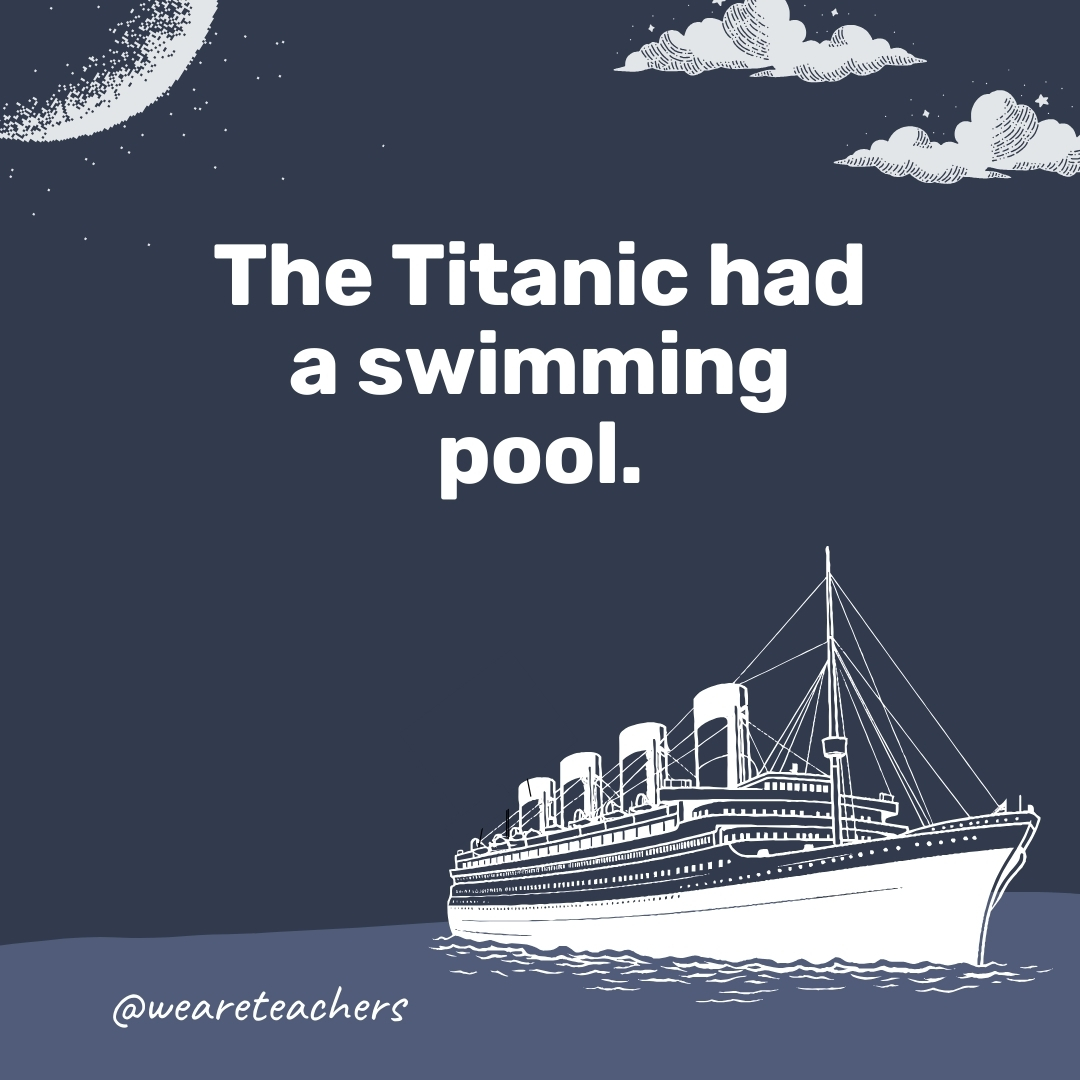
This was the height of luxury and was one of many amenities in first class, which included squash courts, a Turkish bath, a gymnasium, and a barber ship.
4. The Titanic had two sister ships.
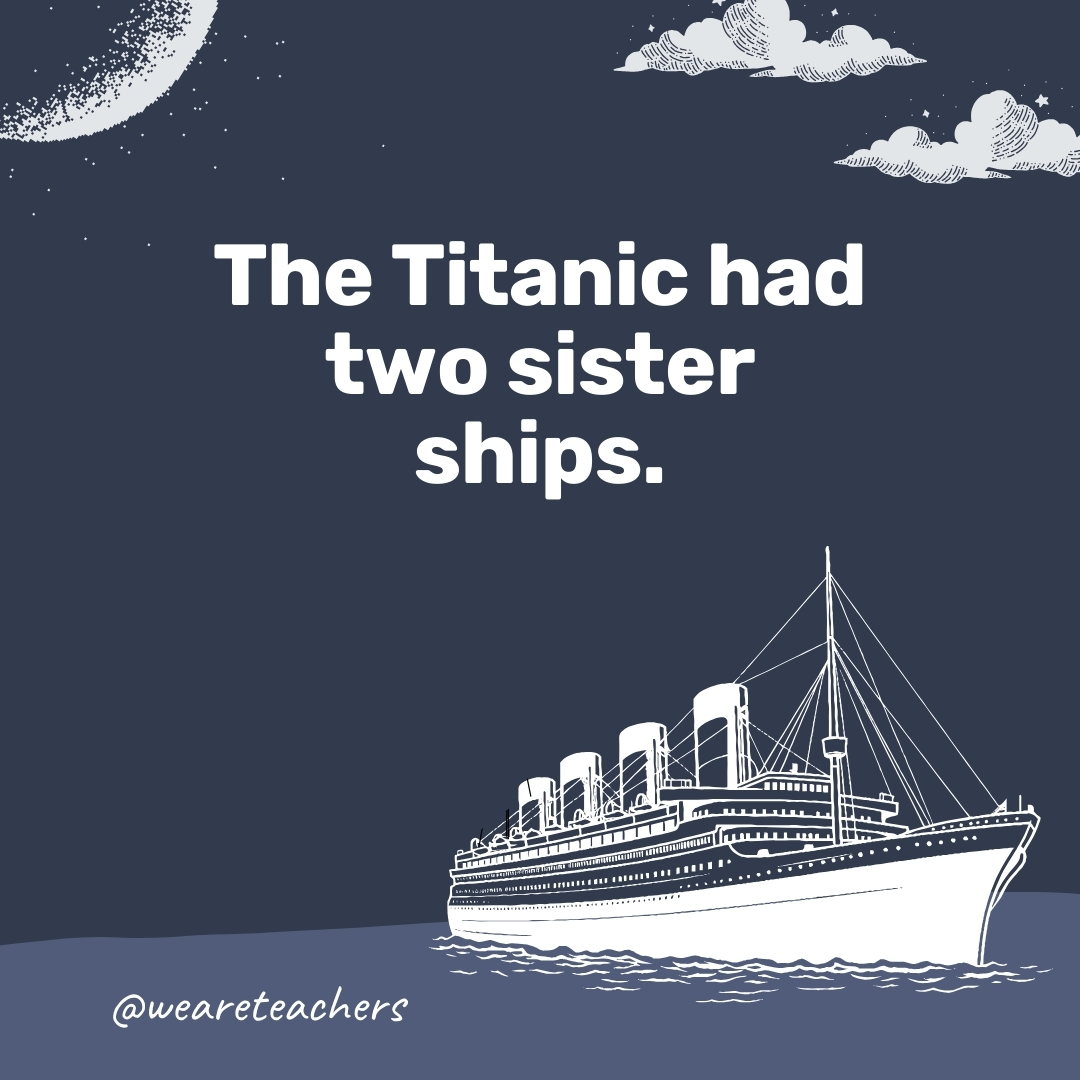
The Olympic , which launched October 20, 1910, and the Britannic, which launched February 26, 1914.
5. The Titanic was a mail ship.
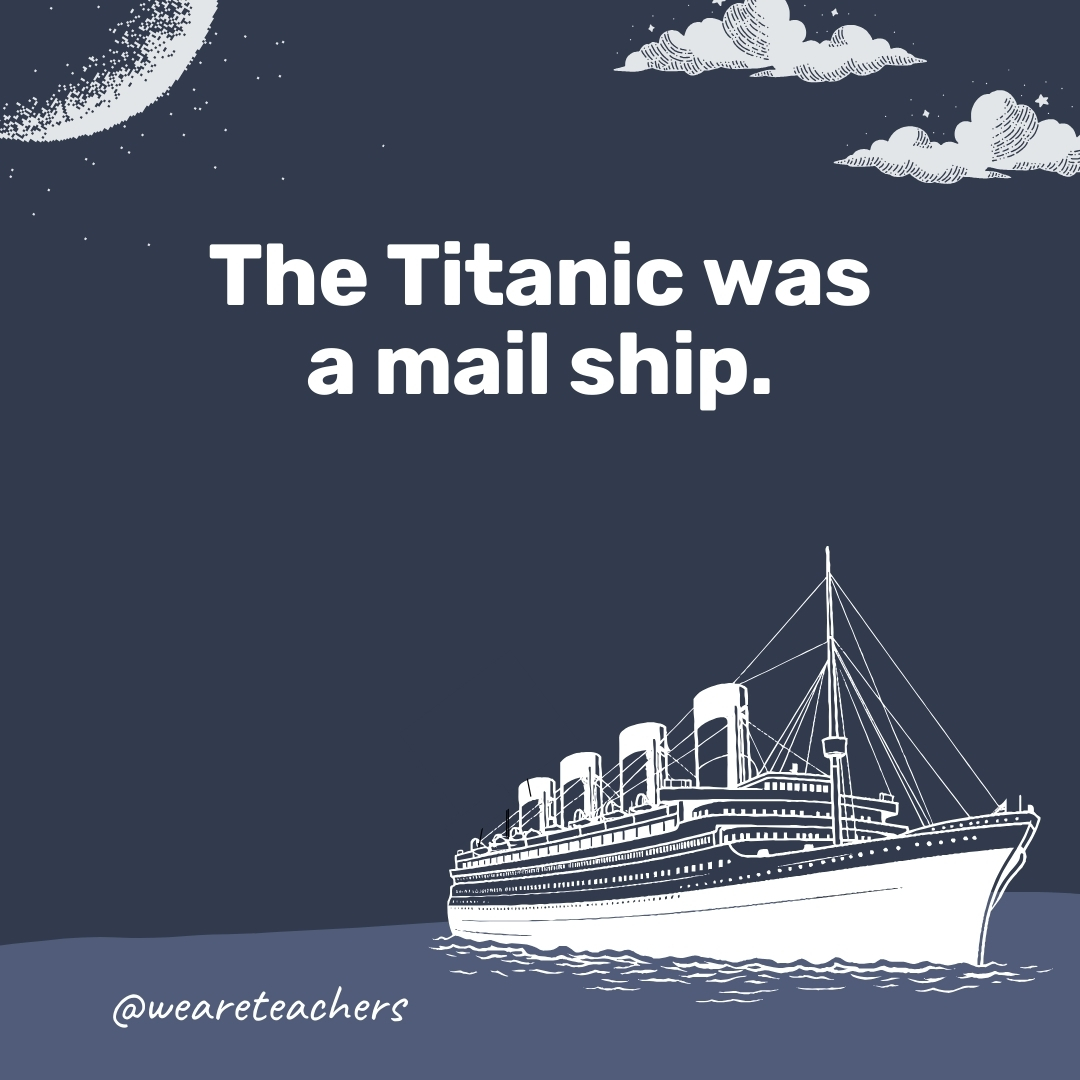
It was the RMS Titanic because it carried post. RMS stands for Royal Mail Ship. The Titanic had 3,500 sacks of mail on board.
6. The Titanic had four elevators.
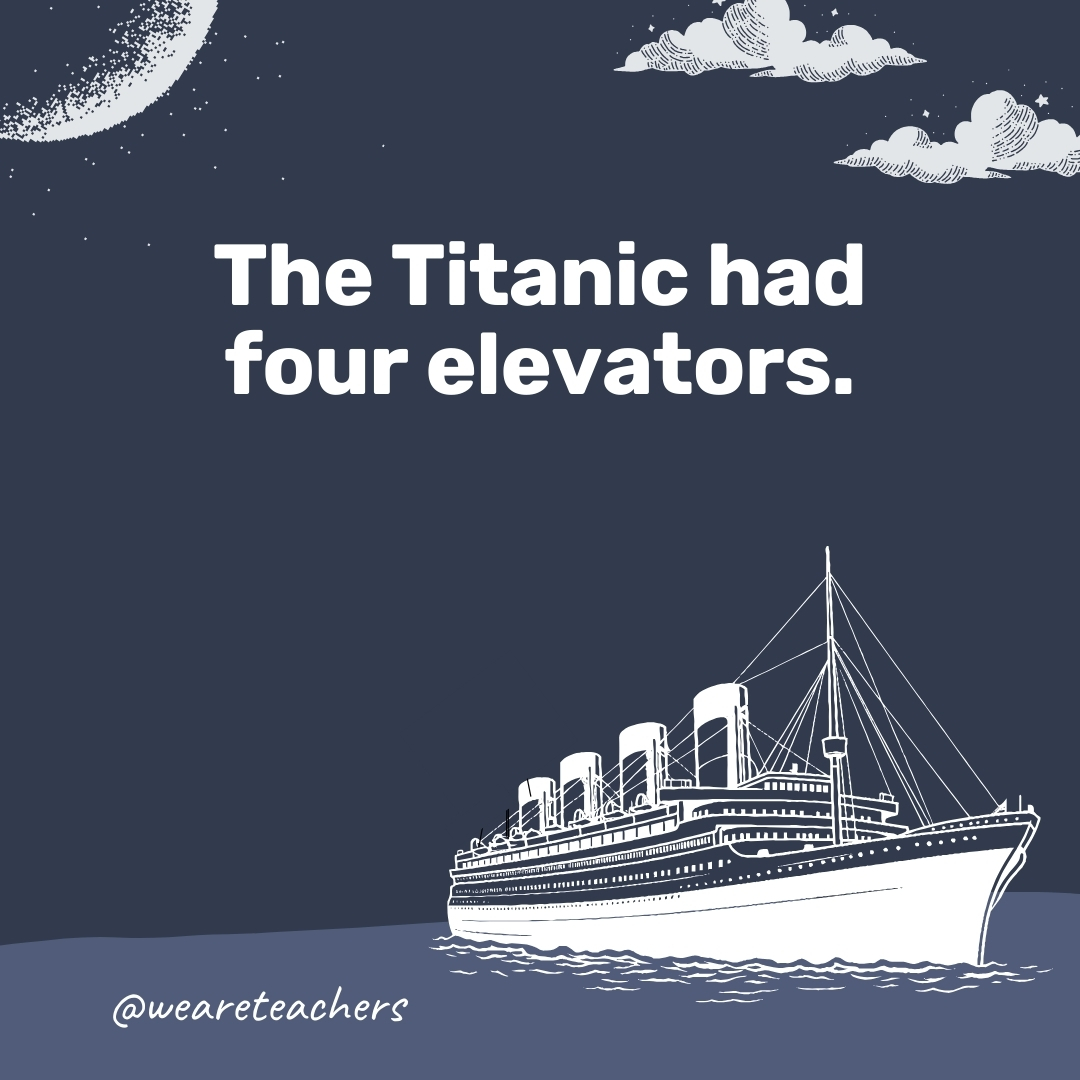
The ship was luxury all around—with second- and third-class cabins that were nicer than first class on other ships.
7. Titanic was called the “Ship of Dreams.”
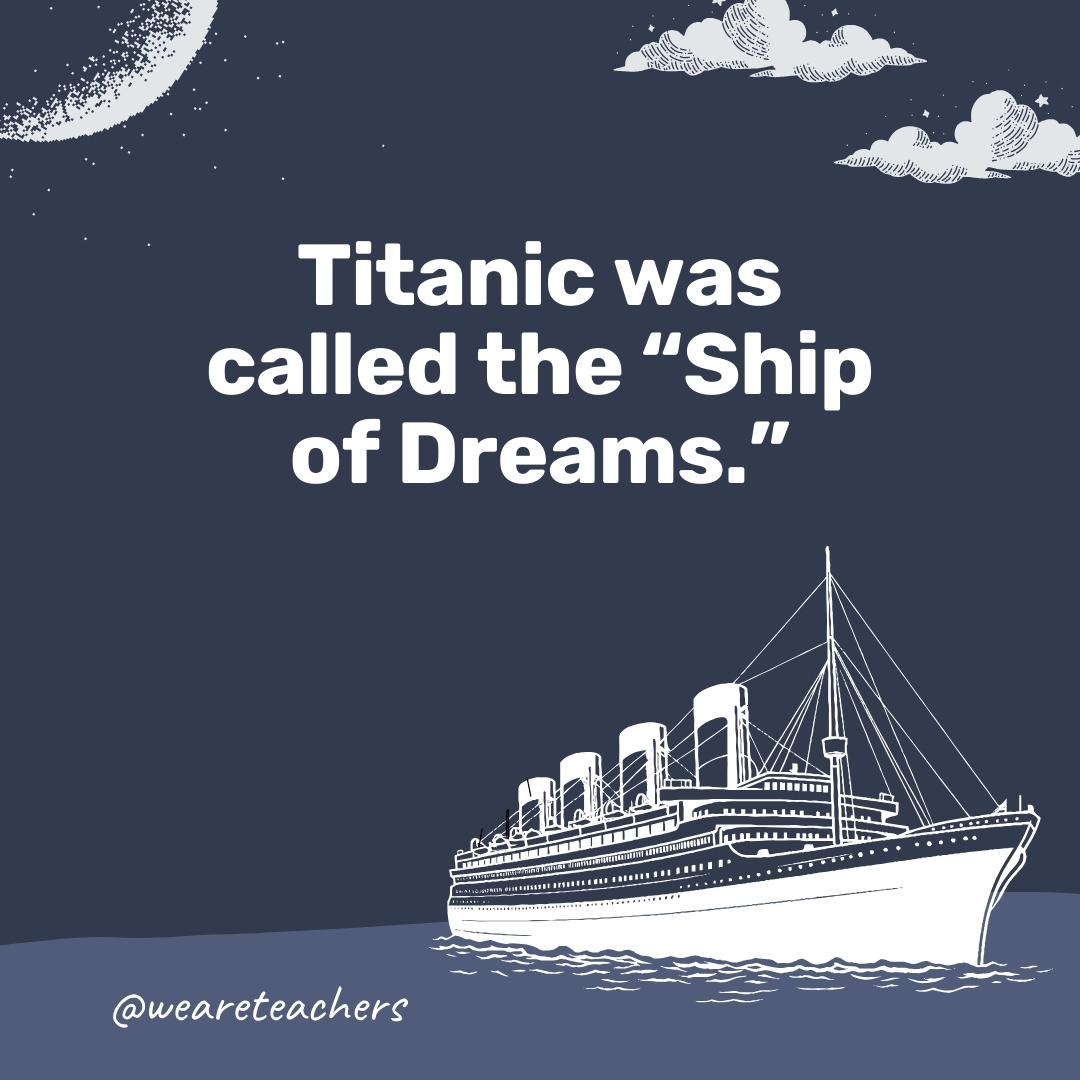
And it was billed as one of the safest ships at that time.
8. The Titanic was so big they had to construct a special building to accommodate it.
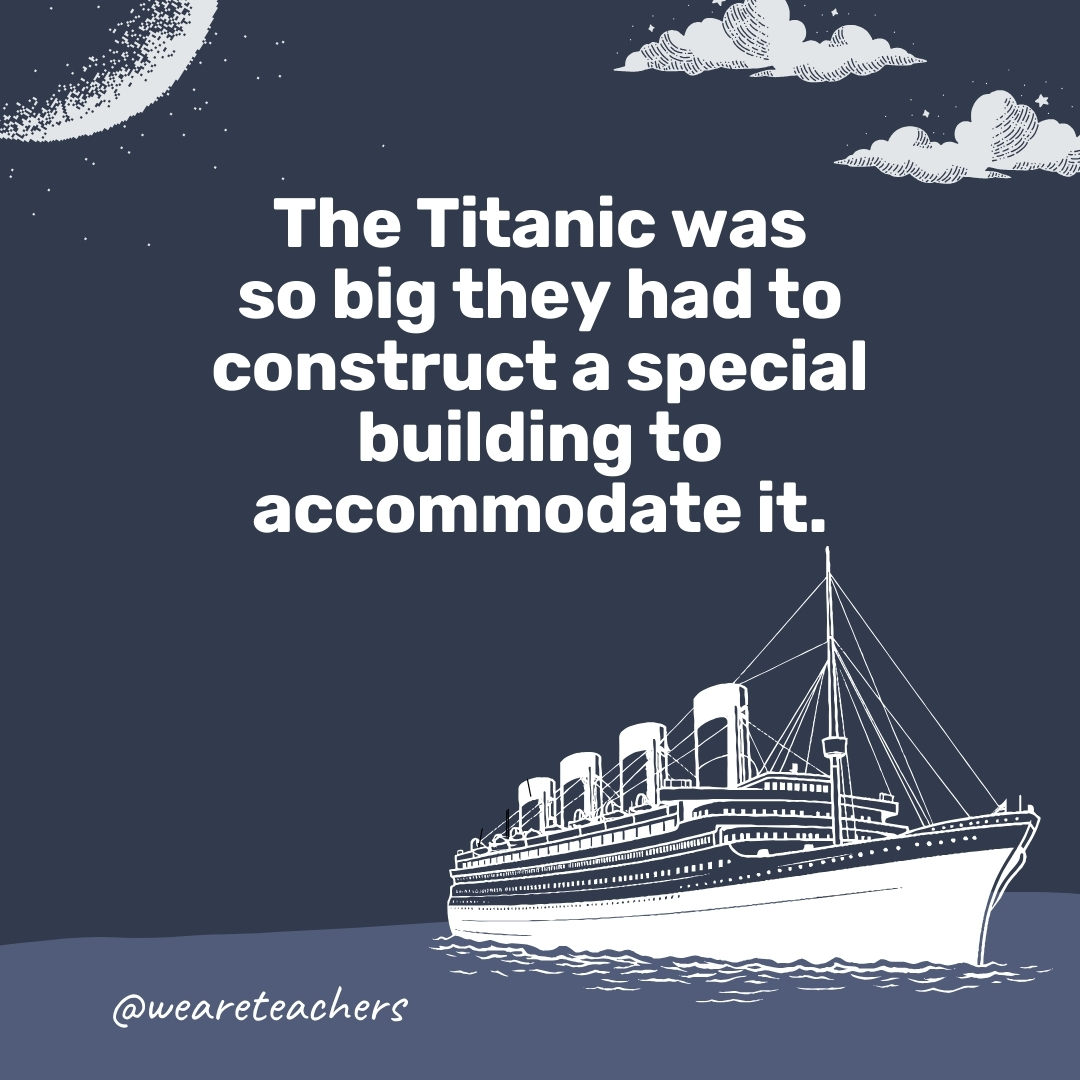
The Titanic was built next to its sister ship , the Olympic, in a building that was built just to house the two ships.
9. The Titanic had safeguards against flooding.
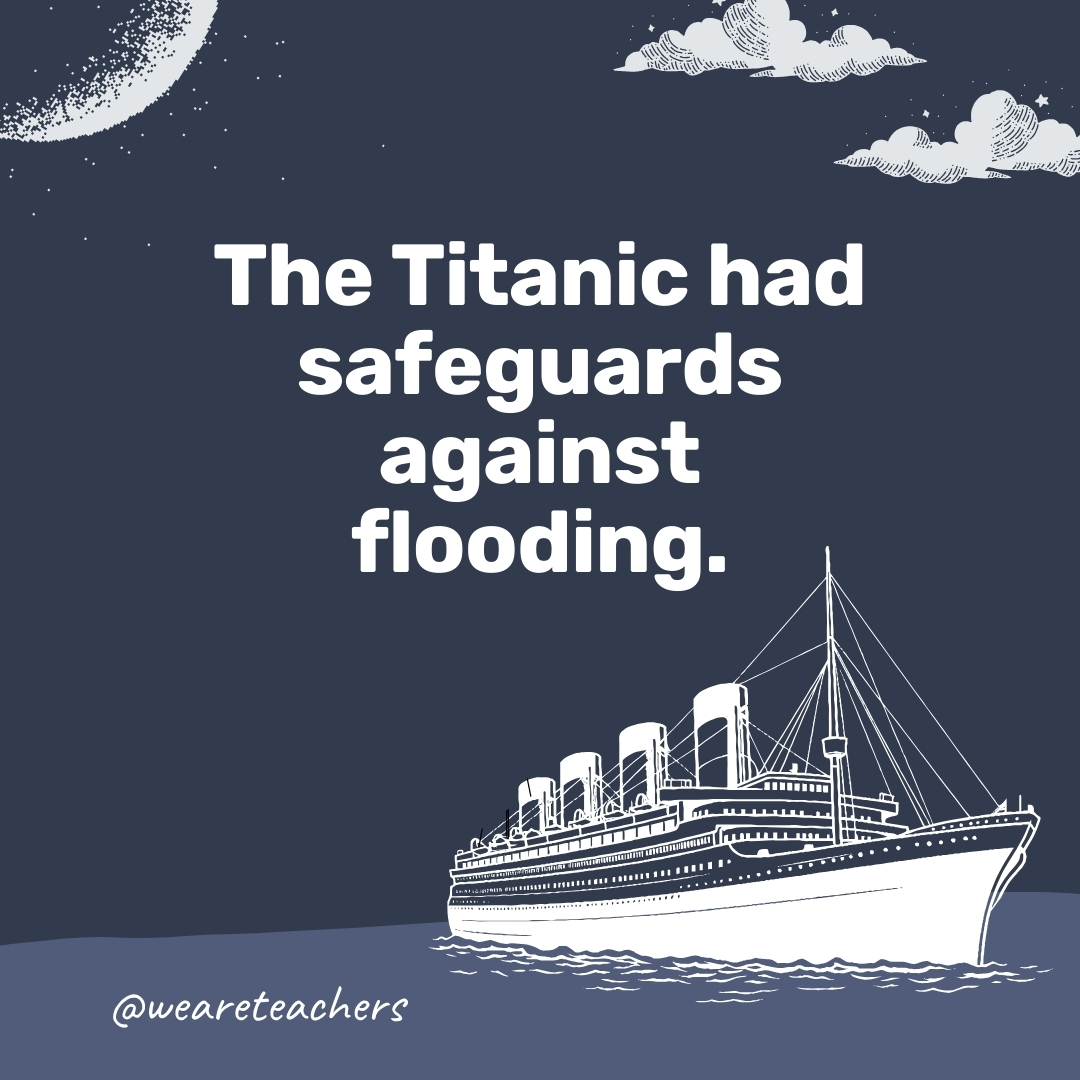
There were 16 compartments that could be closed to contain water if water came over the hull. Of the 16 compartments , they planned for four to flood without endangering the ship’s buoyancy.
10. The Titanic was one of the largest ships at the time it was built.
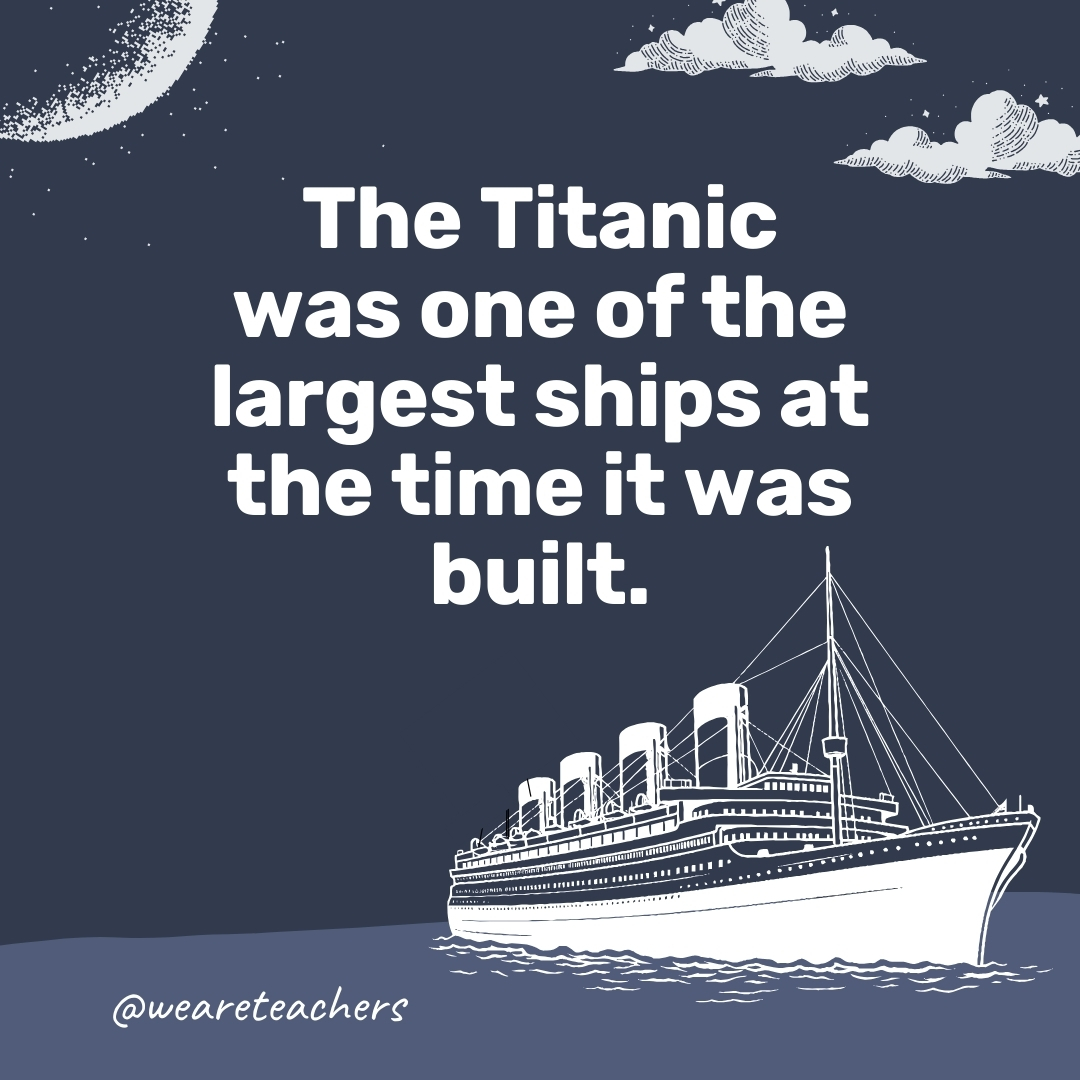
It had a tonnage (carrying capacity) of 46,328 tons and weighed more than 52,000 tons. It was 882.5 feet long and 92.5 feet wide.
11. The Titanic had its own newspaper.
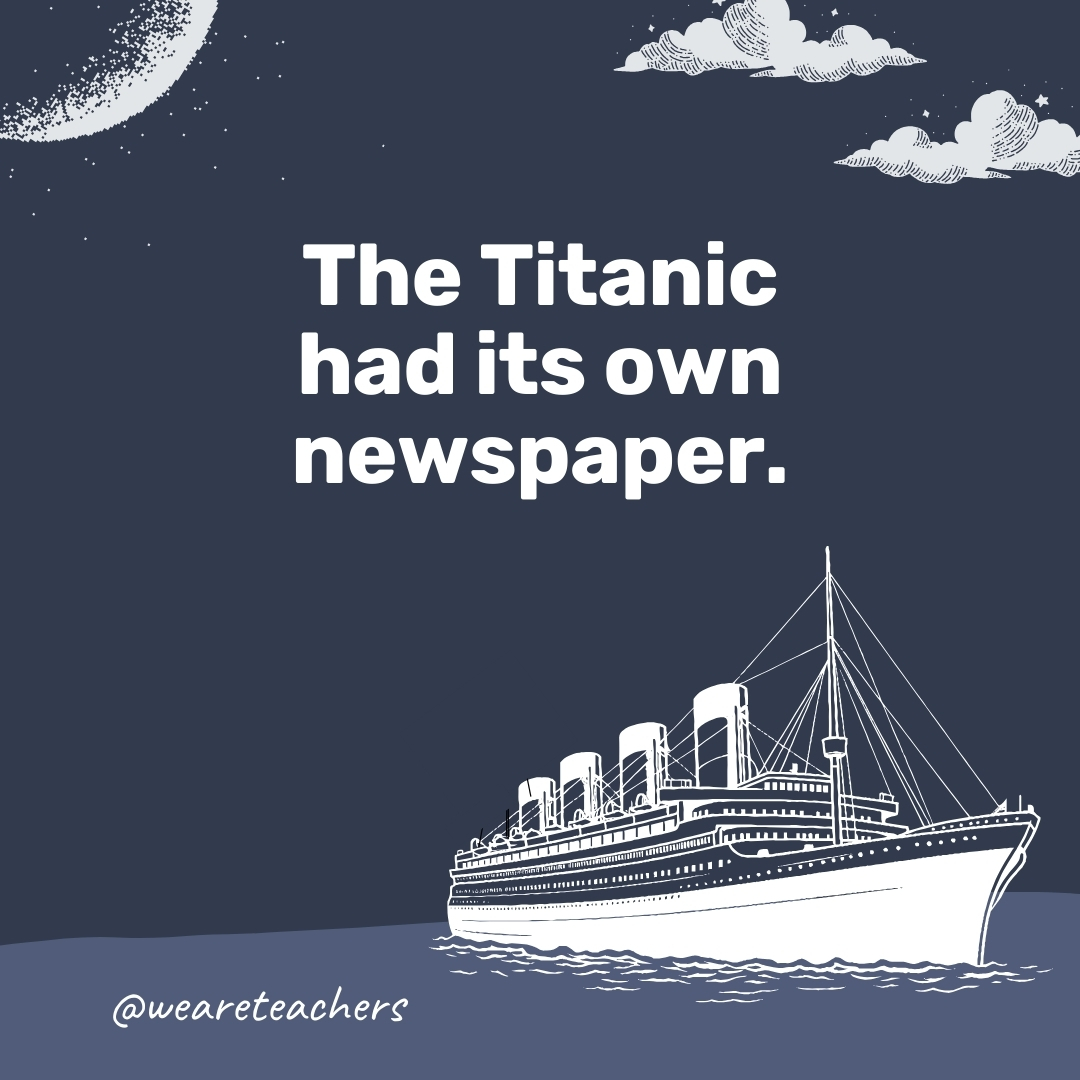
The Atlantic Daily Bulletin was published on board.
12. Dogs in first class had their own kennel aboard the Titanic.
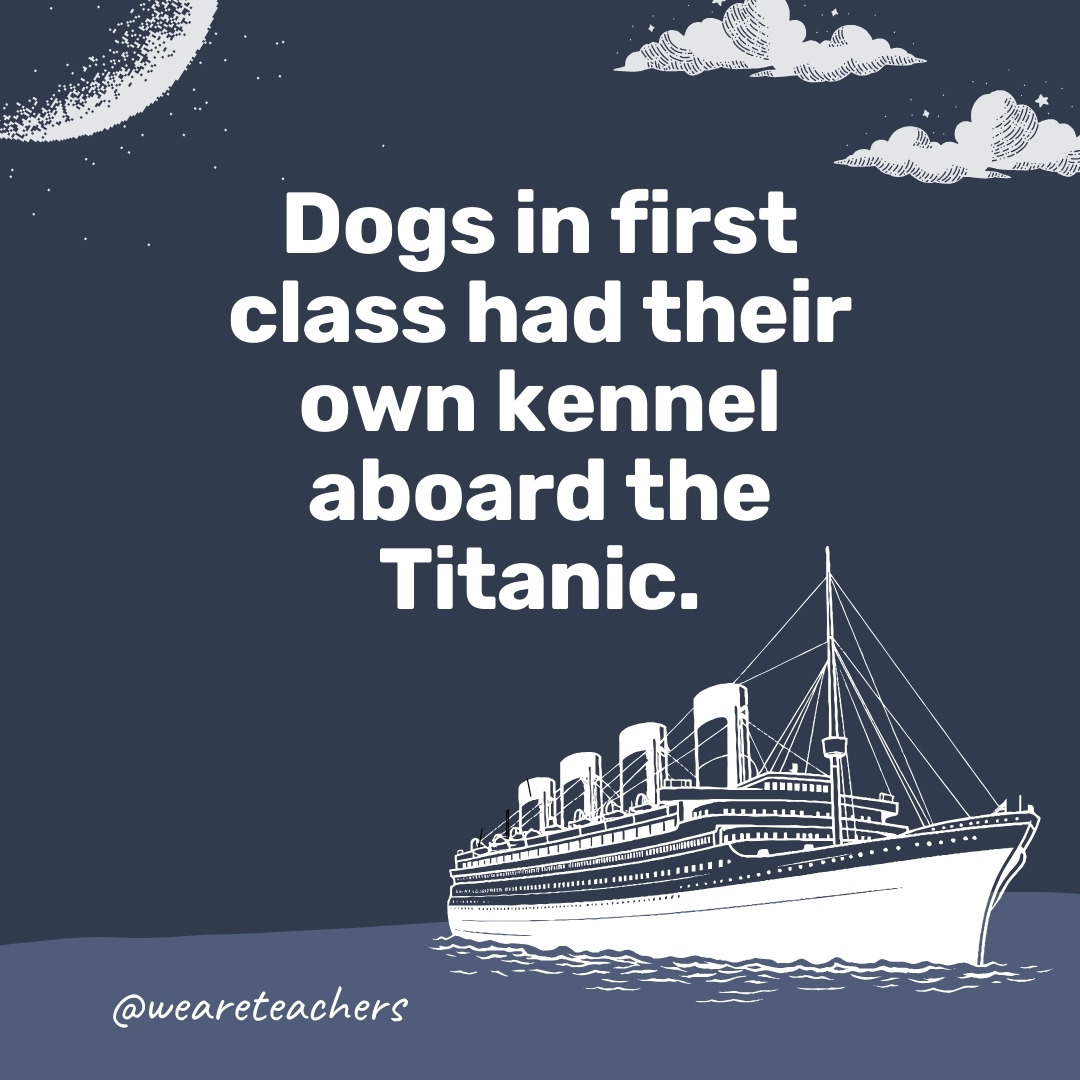
Did we mention that first-class life was posh on the Titanic, even for pets?
13. The Grand Staircase of the Titanic descended 7 of the 10 decks.
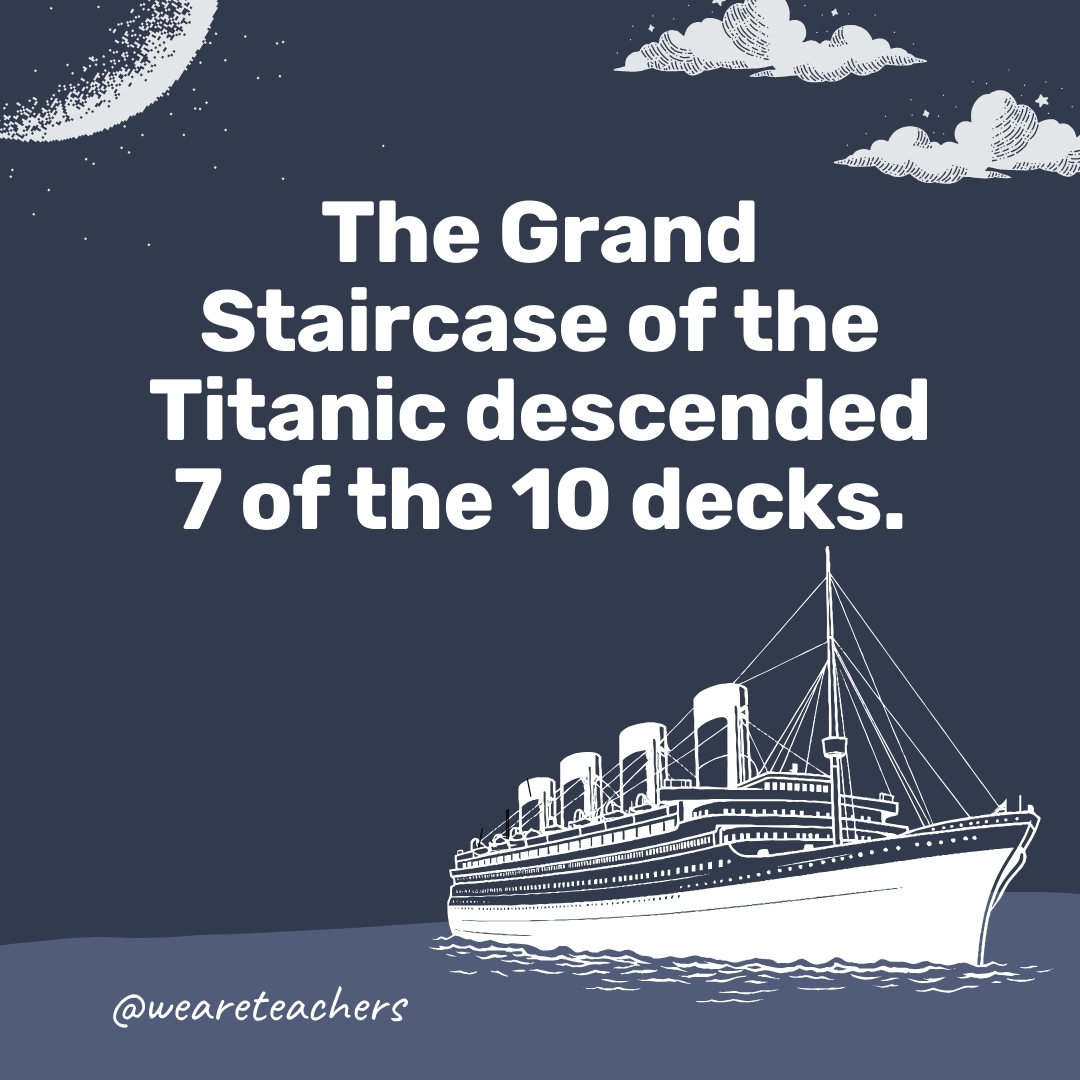
It was made with oak paneling and bronze cherubs and paintings.
14. Two people died while building the Titanic.
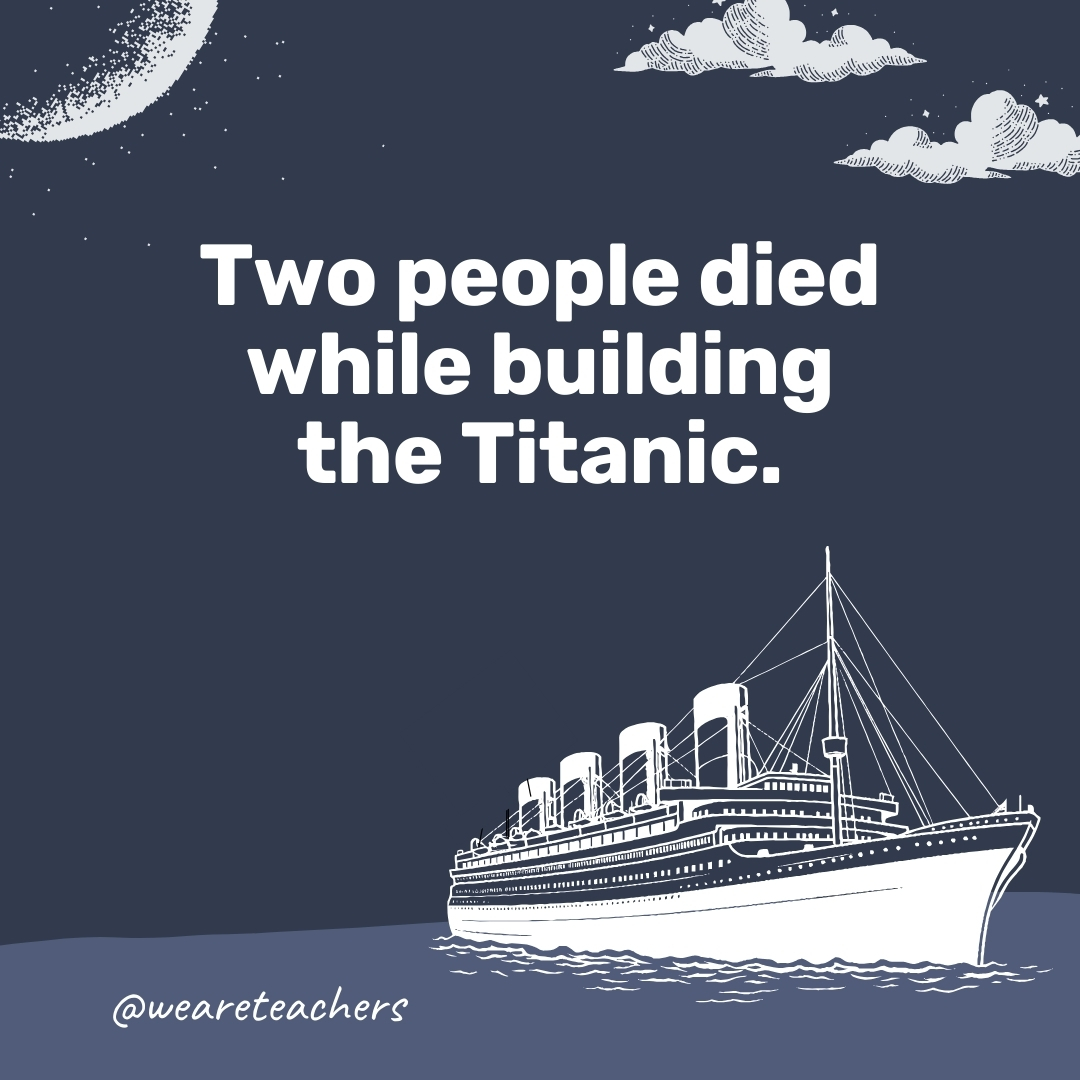
That’s in addition to 246 injuries in the 26 months it took to build the ship.

15. It took 20 horses to carry the Titanic’s anchor.
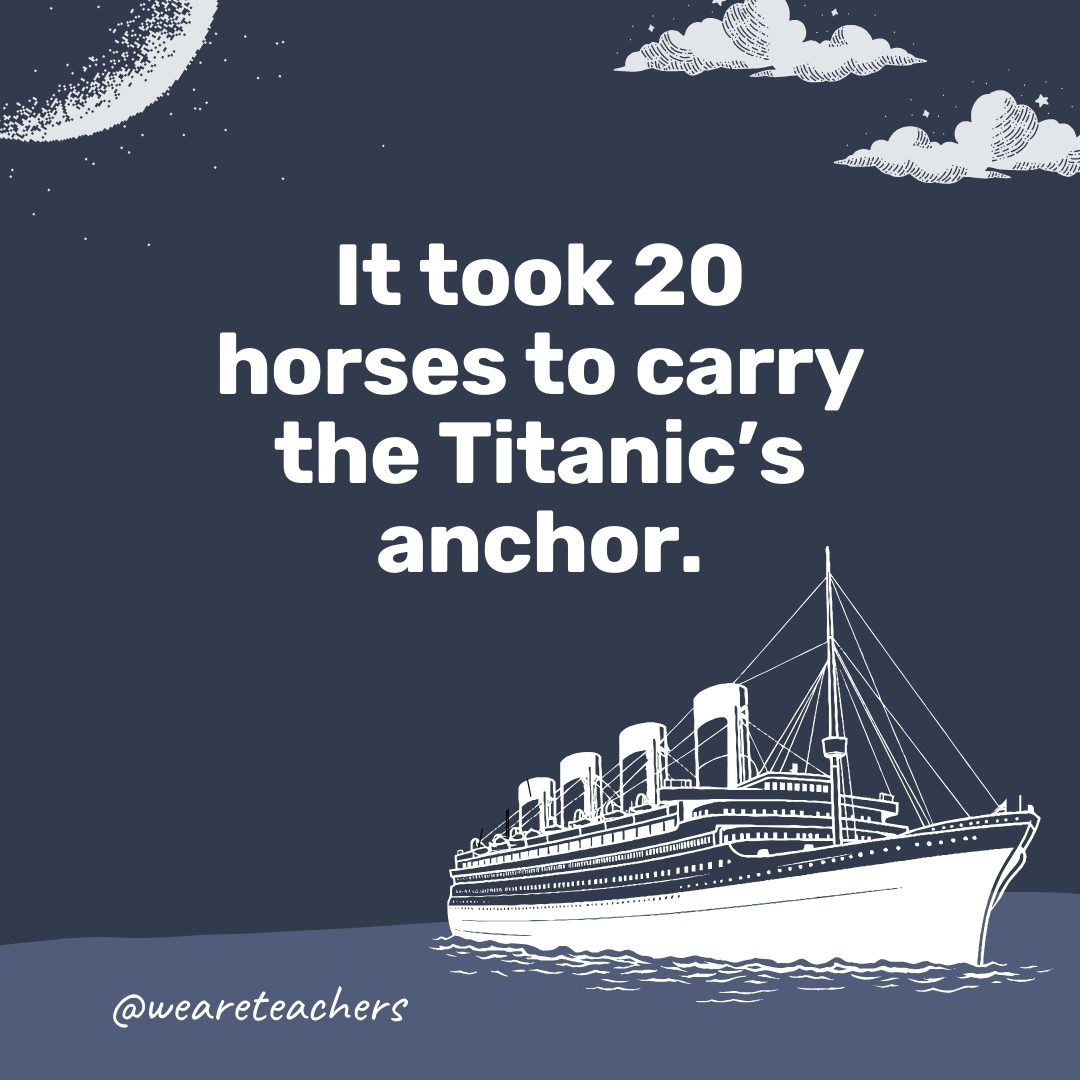
That was just to carry the main anchor .
16. The Titanic cost more than $215 million to build.

That’s in today’s dollars. At the time , it cost $1.9 million British pounds to build.
17. It took three years to build the Titanic.
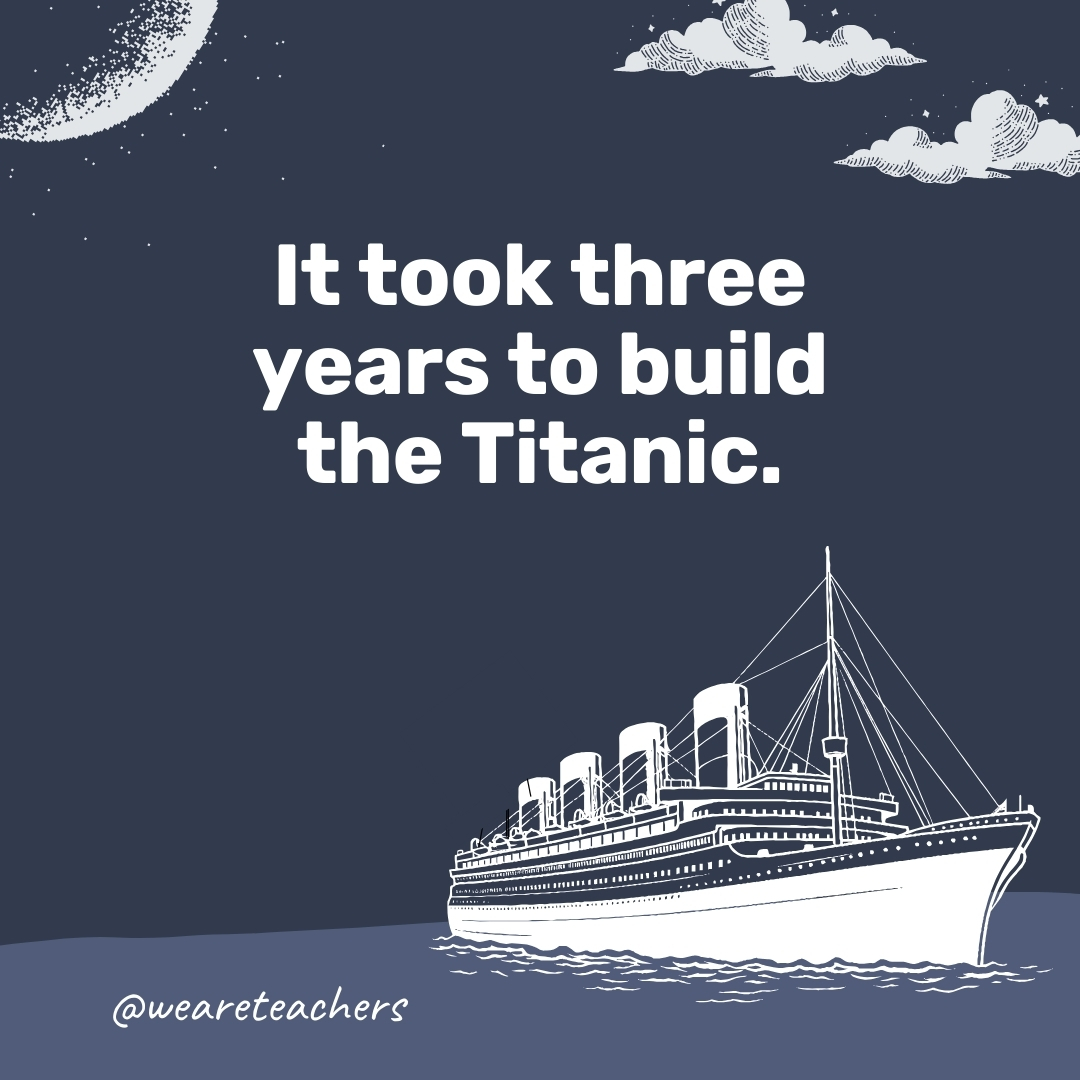
The ship was built in Belfast, Ireland.
Titanic Facts About the Voyage
18. the titanic burned over 600 tons of coal a day..
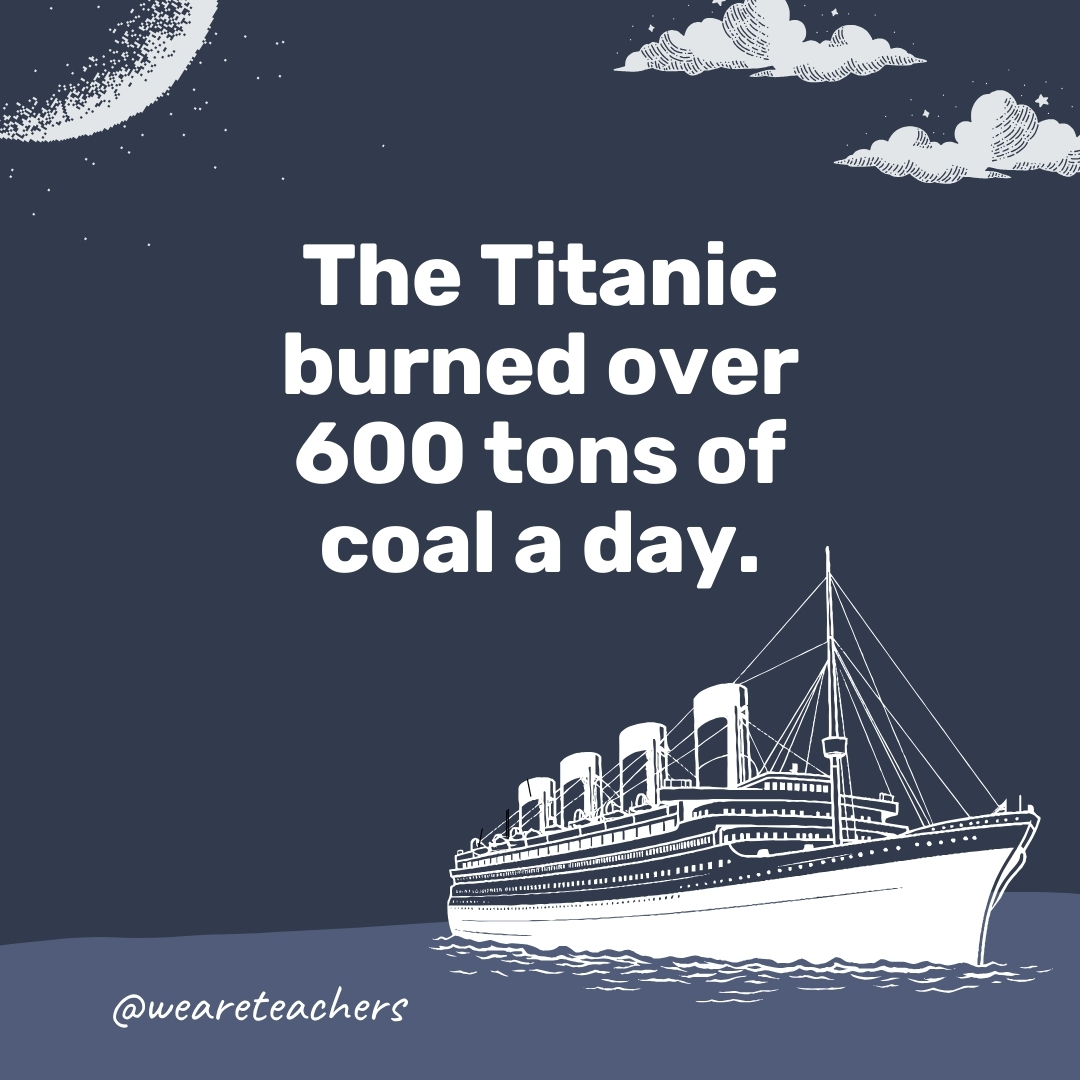
One hundred seventy-six men shoveled coal into furnaces each day, and the ship produced over 100 tons of ash each day.
19. The Titanic’s maiden voyage was nicknamed the “Millionaire’s Special.”
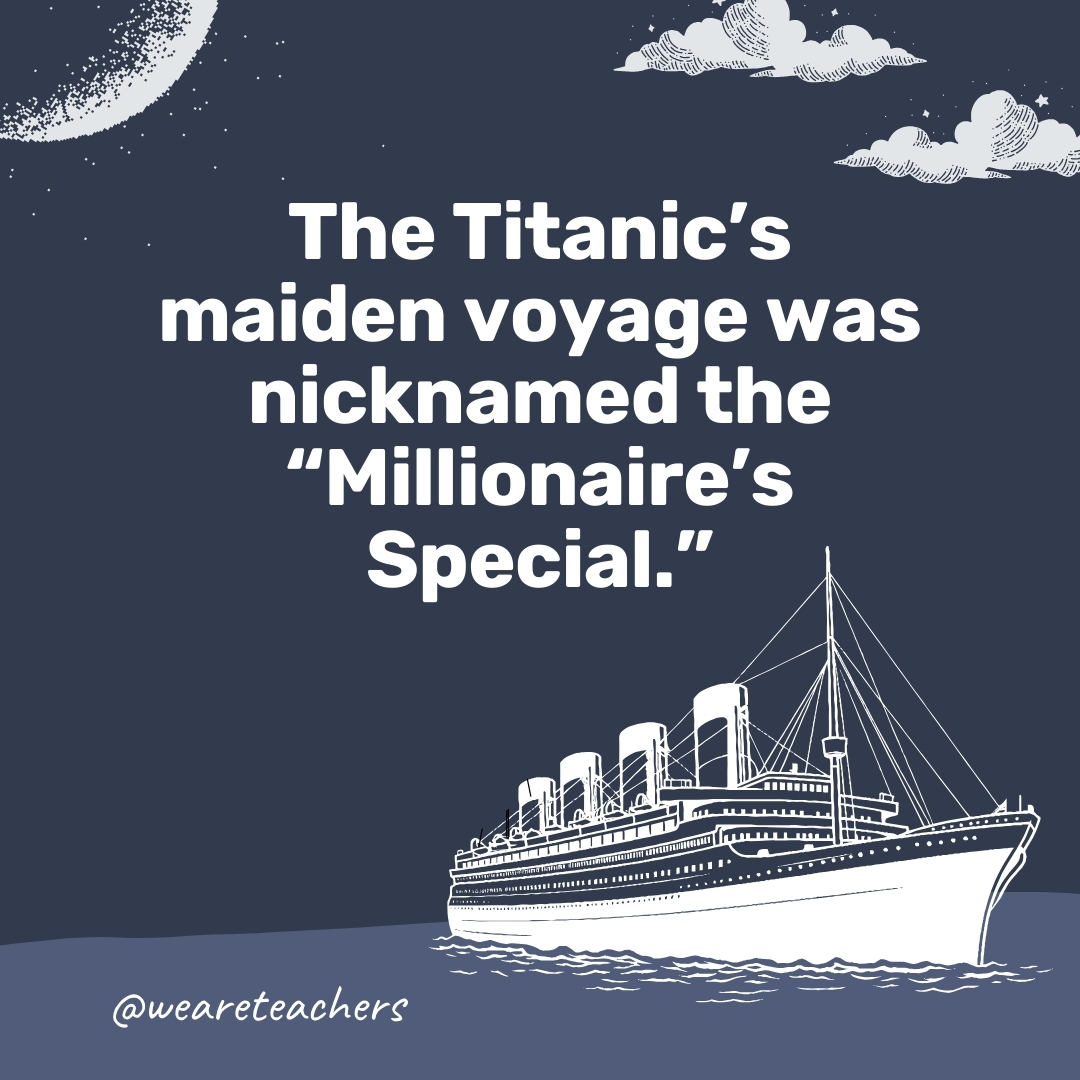
On board were many prominent people including businessmen, journalists, and other wealthy patrons.
20. The Titanic was captained by the “Millionaire Captain.”
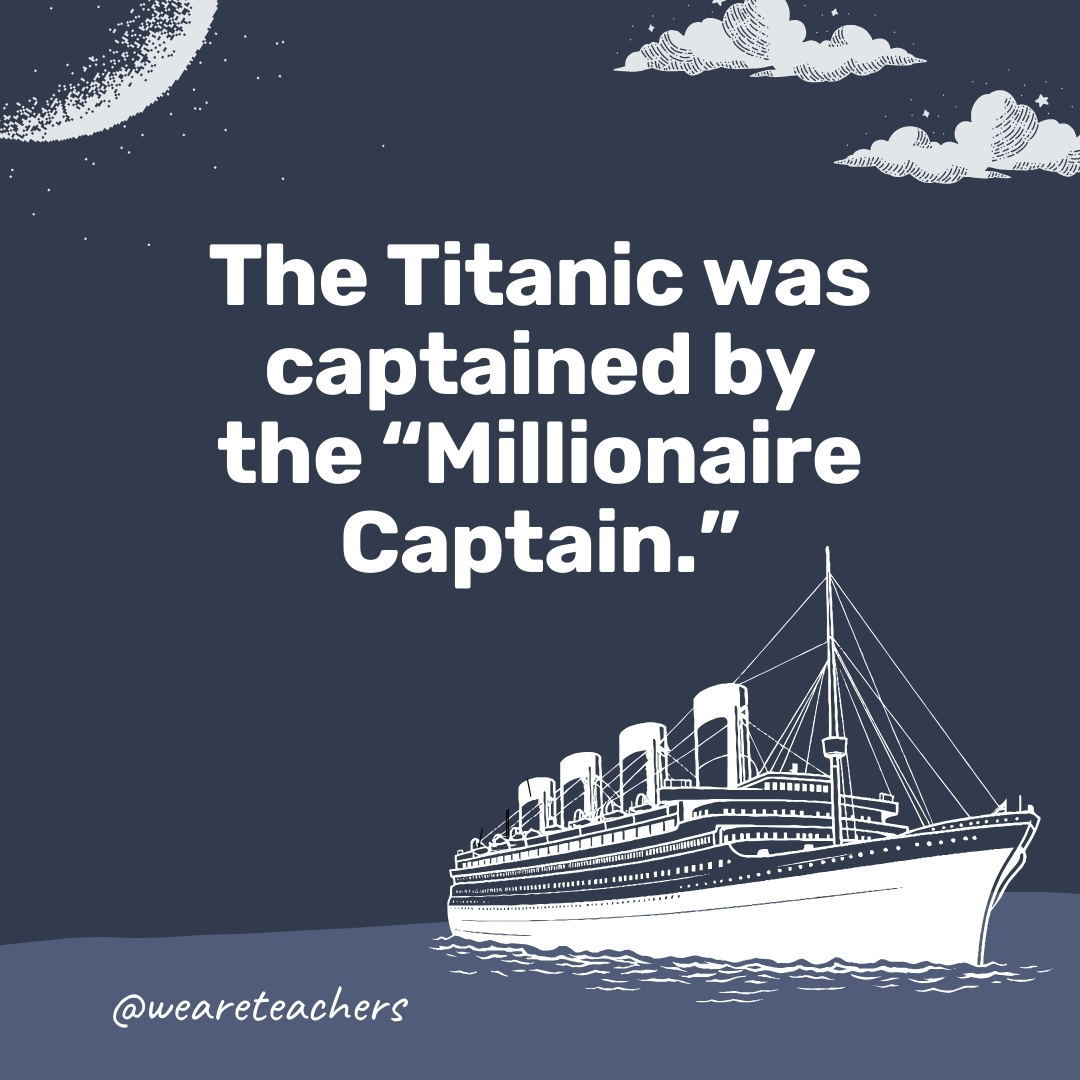
Edward J. Smith, the captain, was nicknamed the “Millionaire’s Captain” because he was so popular with wealthy passengers .
21. The Titanic almost got into a collision in the harbor.
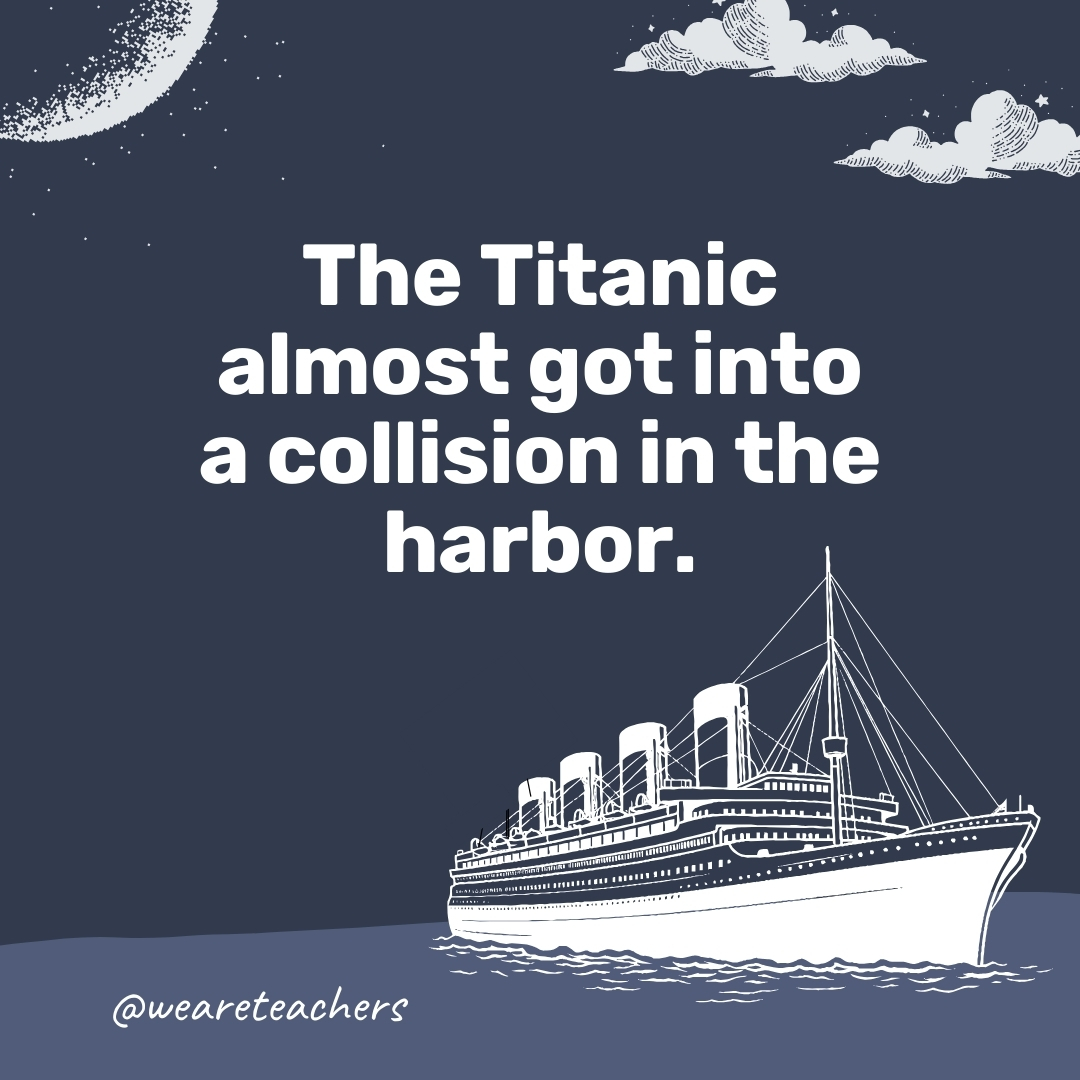
Before it departed from England, the Titanic almost crashed into the New York, another ship.
22. The Titanic operators received iceberg warnings for much of the trip.
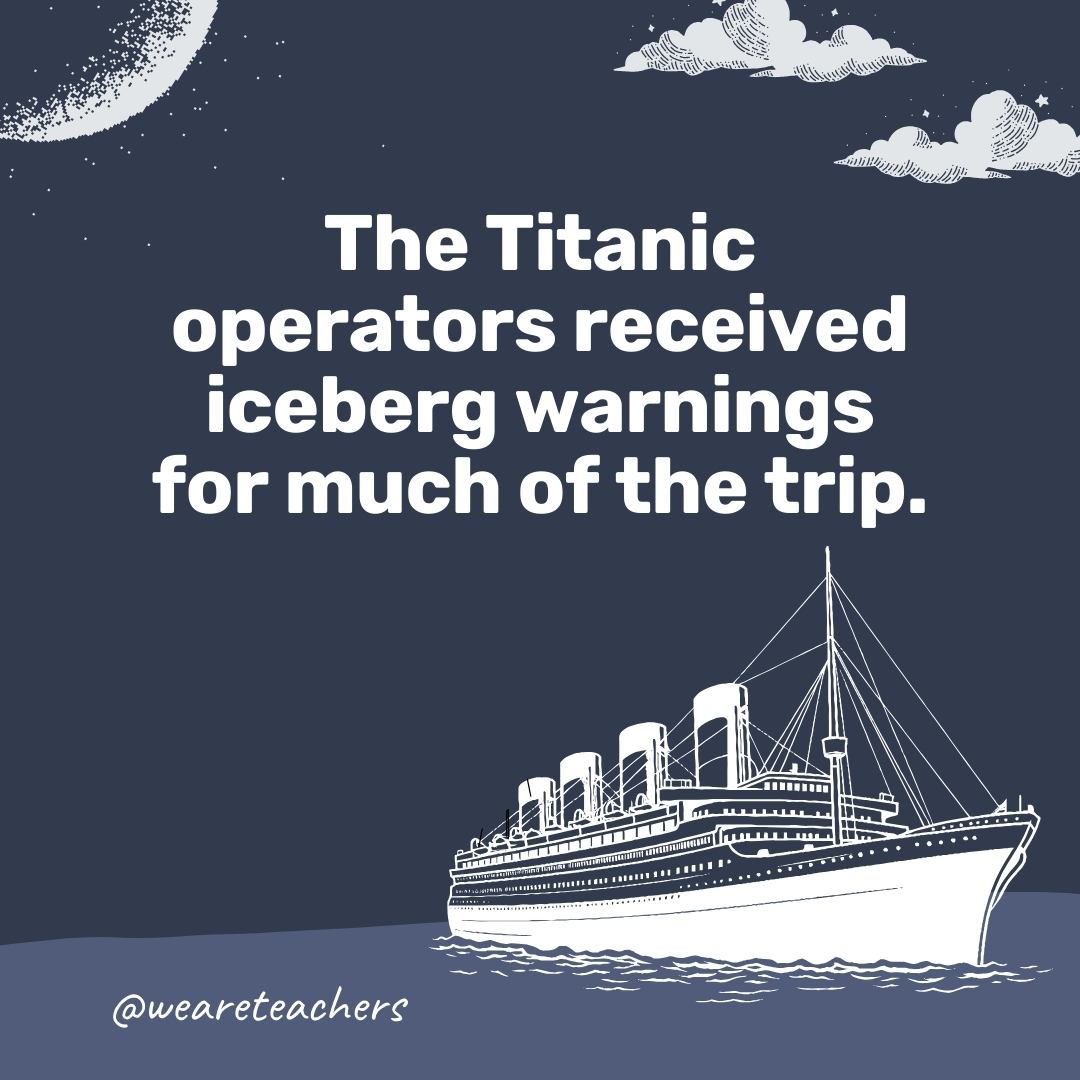
The warnings came through the wireless radio and were passed to the bridge.
23. A huge crowd turned out to see the Titanic launch.
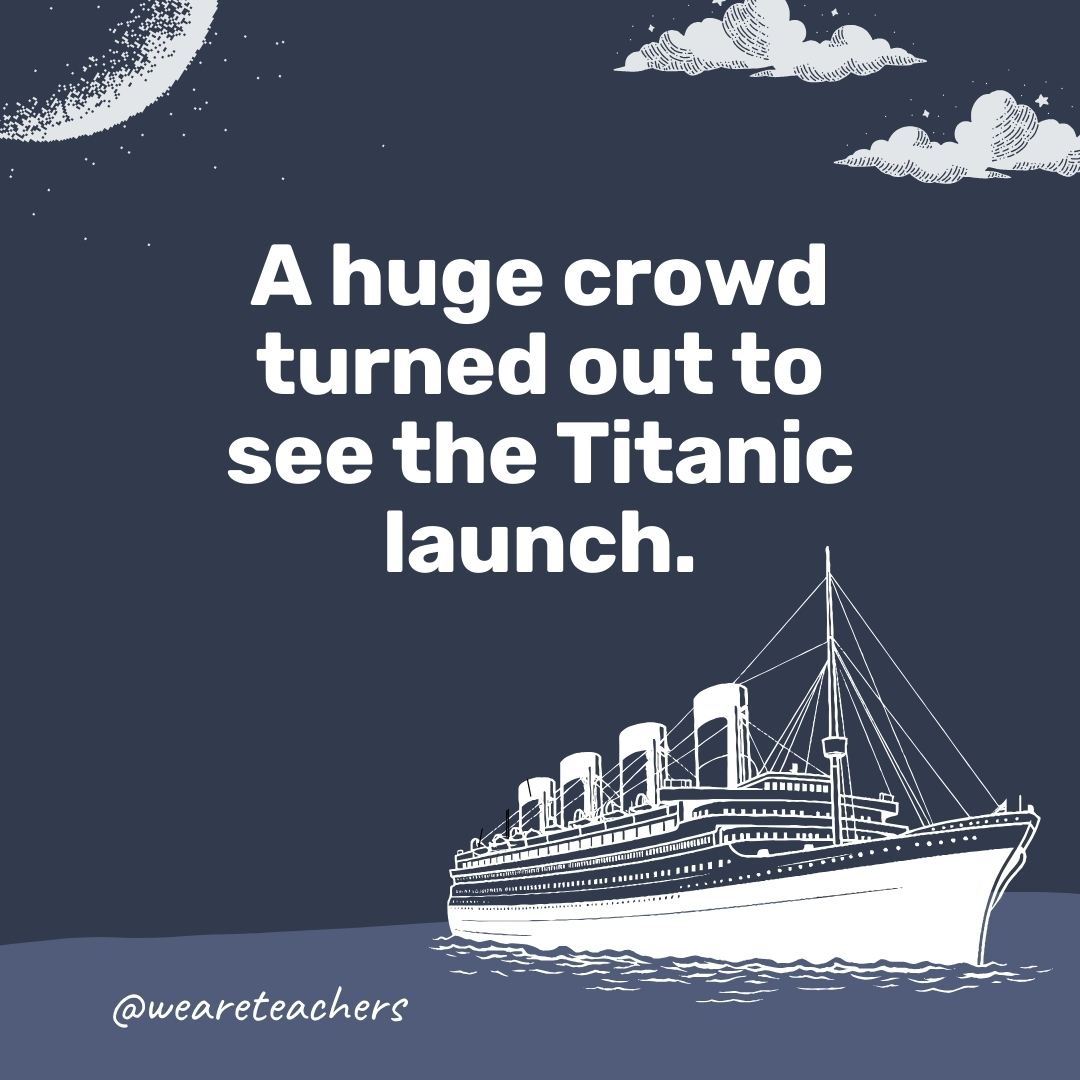
One hundred thousand people came to see the ship leave on May 31, 1911.
24. Soap and fat were used to help the Titanic get into the River Lagan.
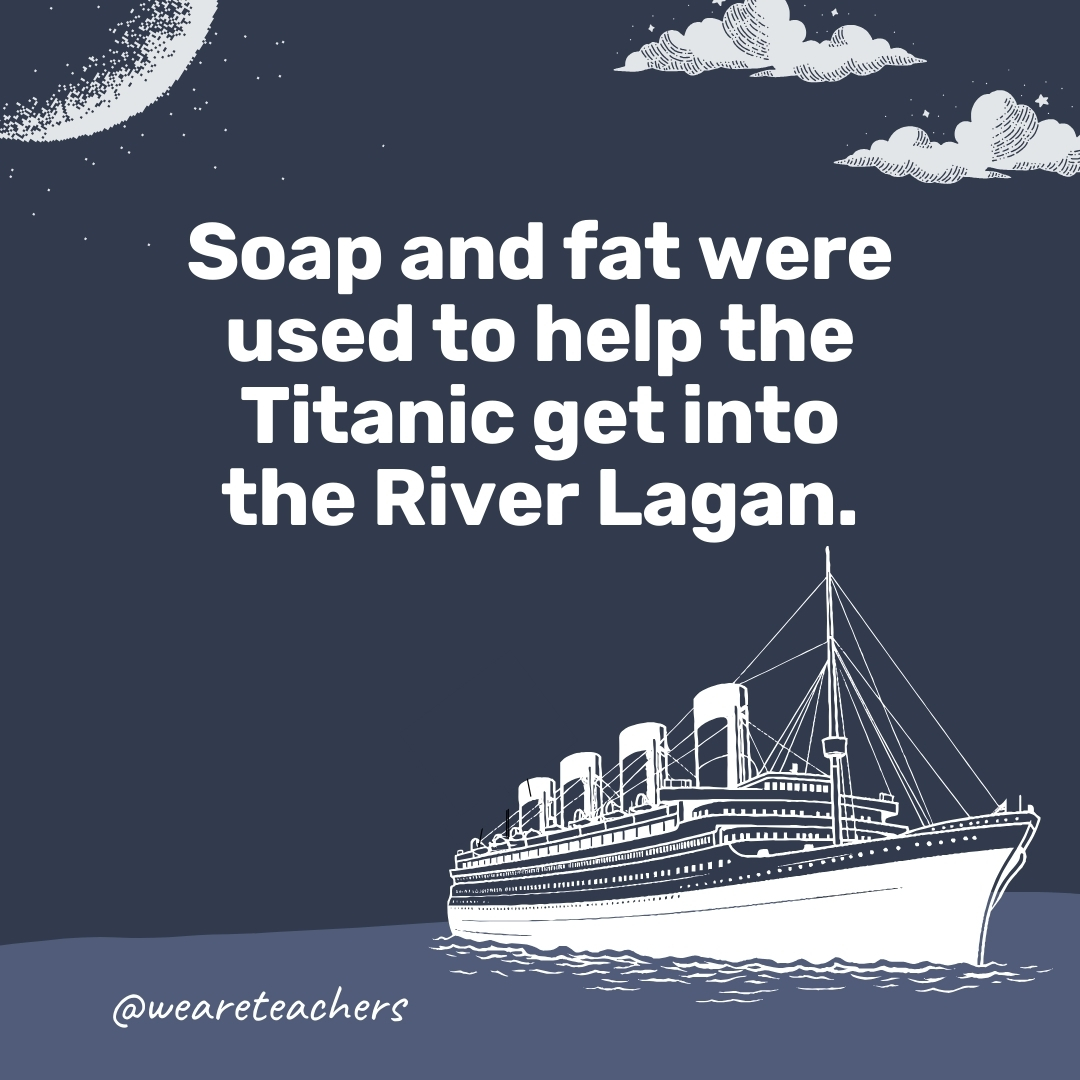
Twenty-two tons of soap and tallow (rendered fat) were smeared on the slipway to help it get through the more narrow part of the journey.
25. The Titanic made two stops in Europe.
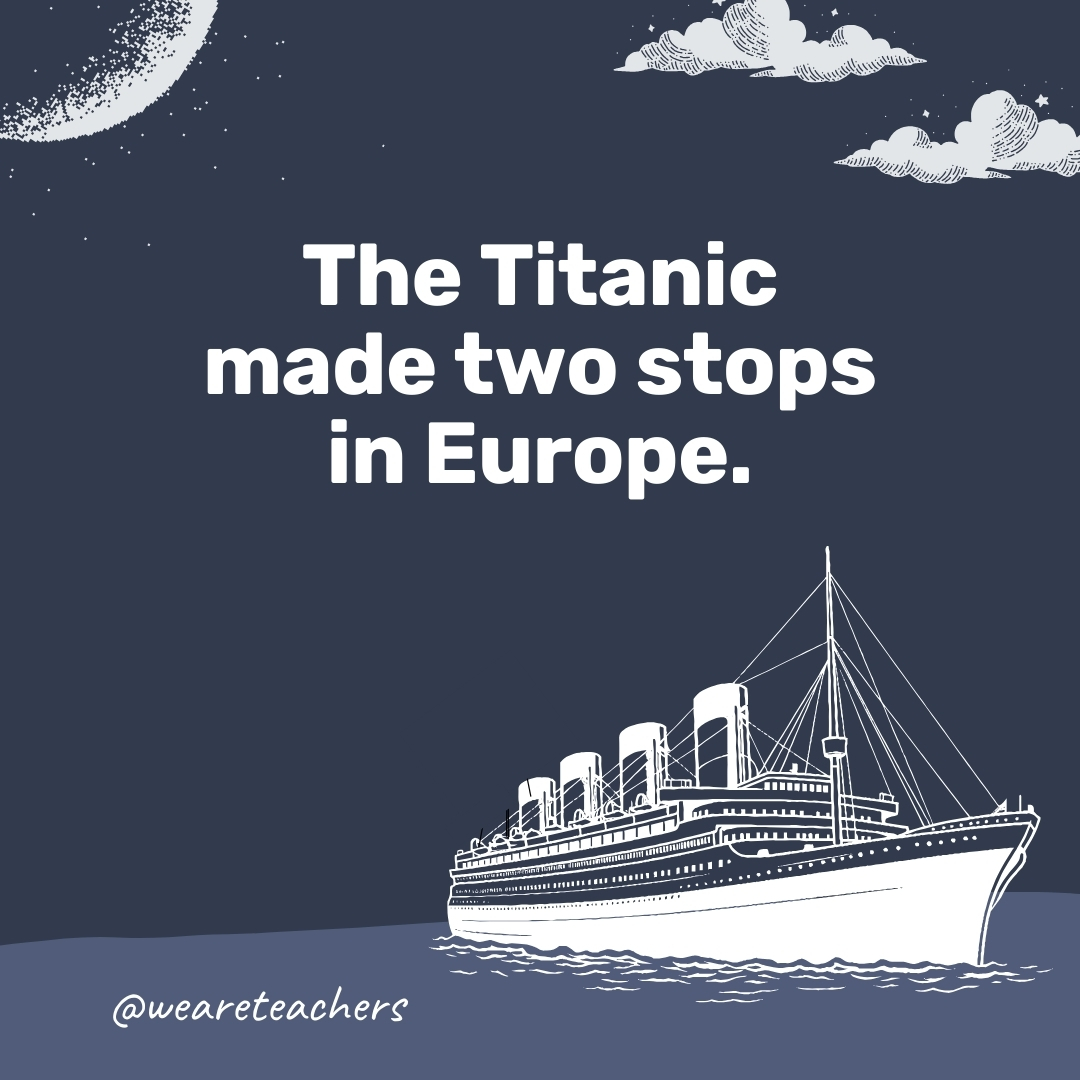
It stopped in Cherbourg in France and Cobh in Ireland to pick up more passengers .
26. Only 23 Titanic crew members were female.
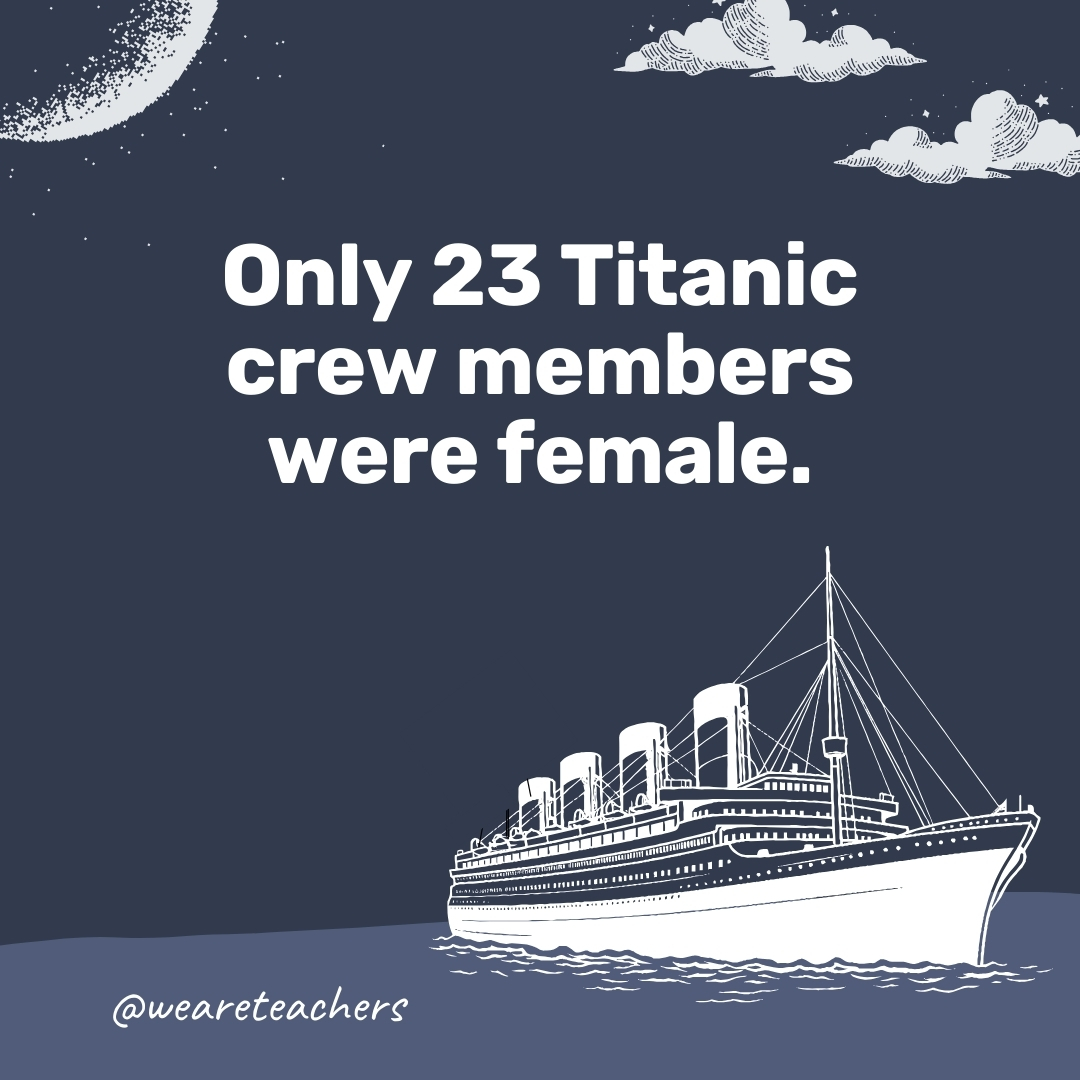
It’s a small percentage , as there were 885 crew on board.
27. The last supper in first class on the Titanic was an 11-course meal.
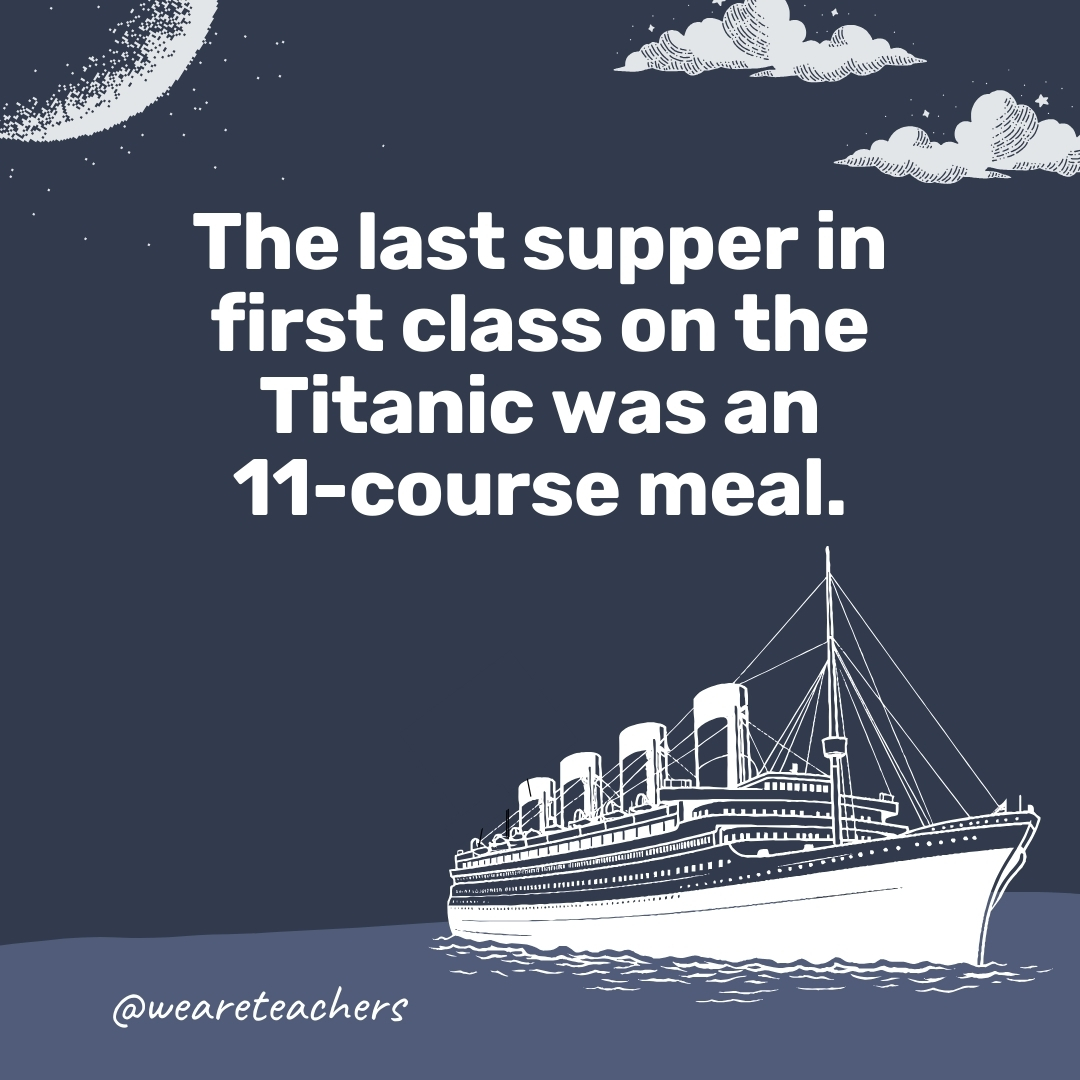
The meal included oysters, filet mignon, poached salmon, foie gras, roasted pigeon, lamb, and palate cleansers.
28. The richest person on the Titanic was worth $85 million.

John Jacob Astor IV was worth what would be $2 billion today. He went down with the ship. There is a legend that says that after the ship hit the iceberg, he joked, “I asked for ice, but this is ridiculous.” But that’s never been proven.
29. Milton S. Hershey, of Hershey chocolate fame, had a ticket for the Titanic.
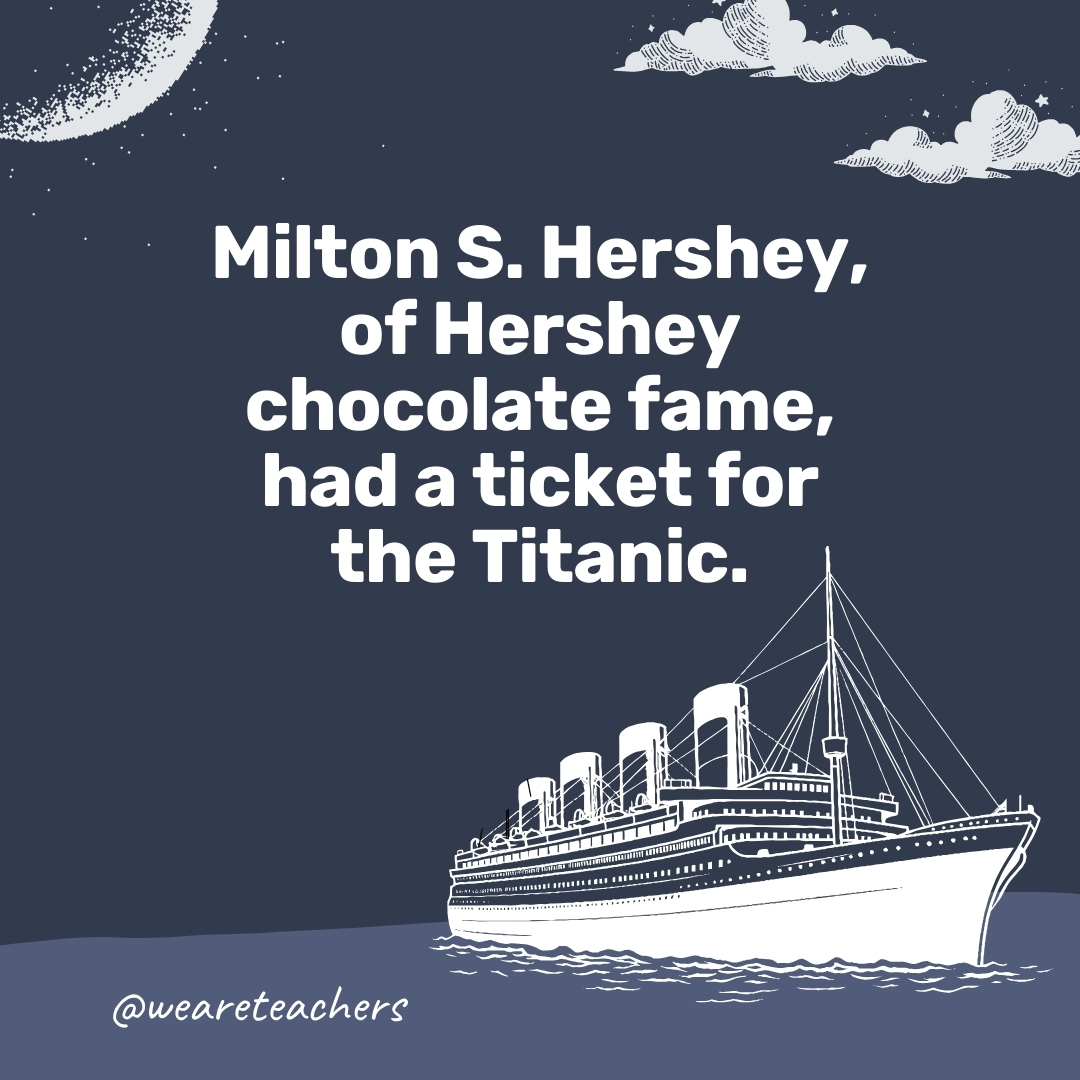
He didn’t board the boat, along with other people who had tickets but decided not to ride. The last remaining Titanic survivor died in 2009.
30. Some passengers honeymooned on the Titanic.
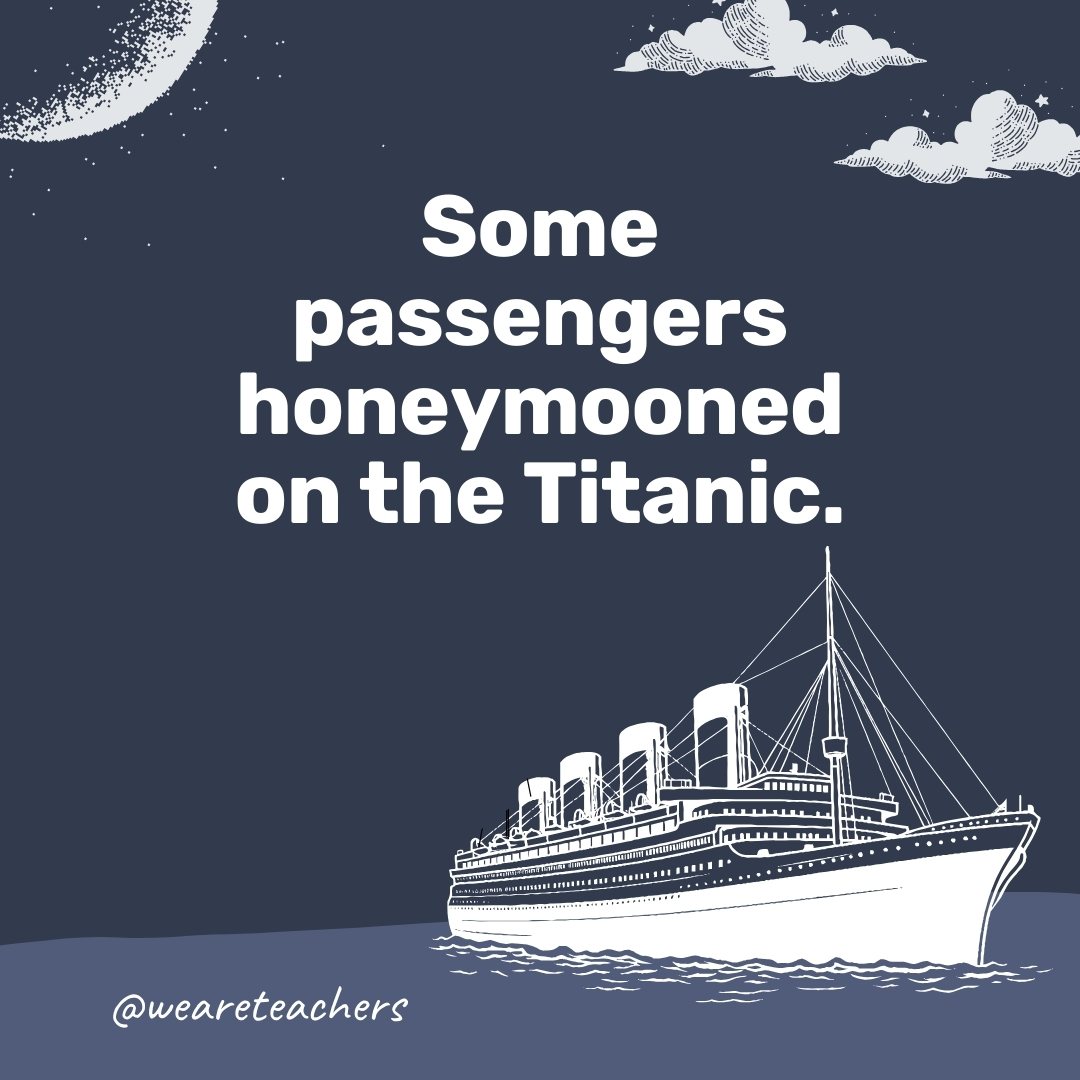
Thirteen of the couples on board the Titanic were honeymooners.
31. Tickets for the Titanic were expensive.
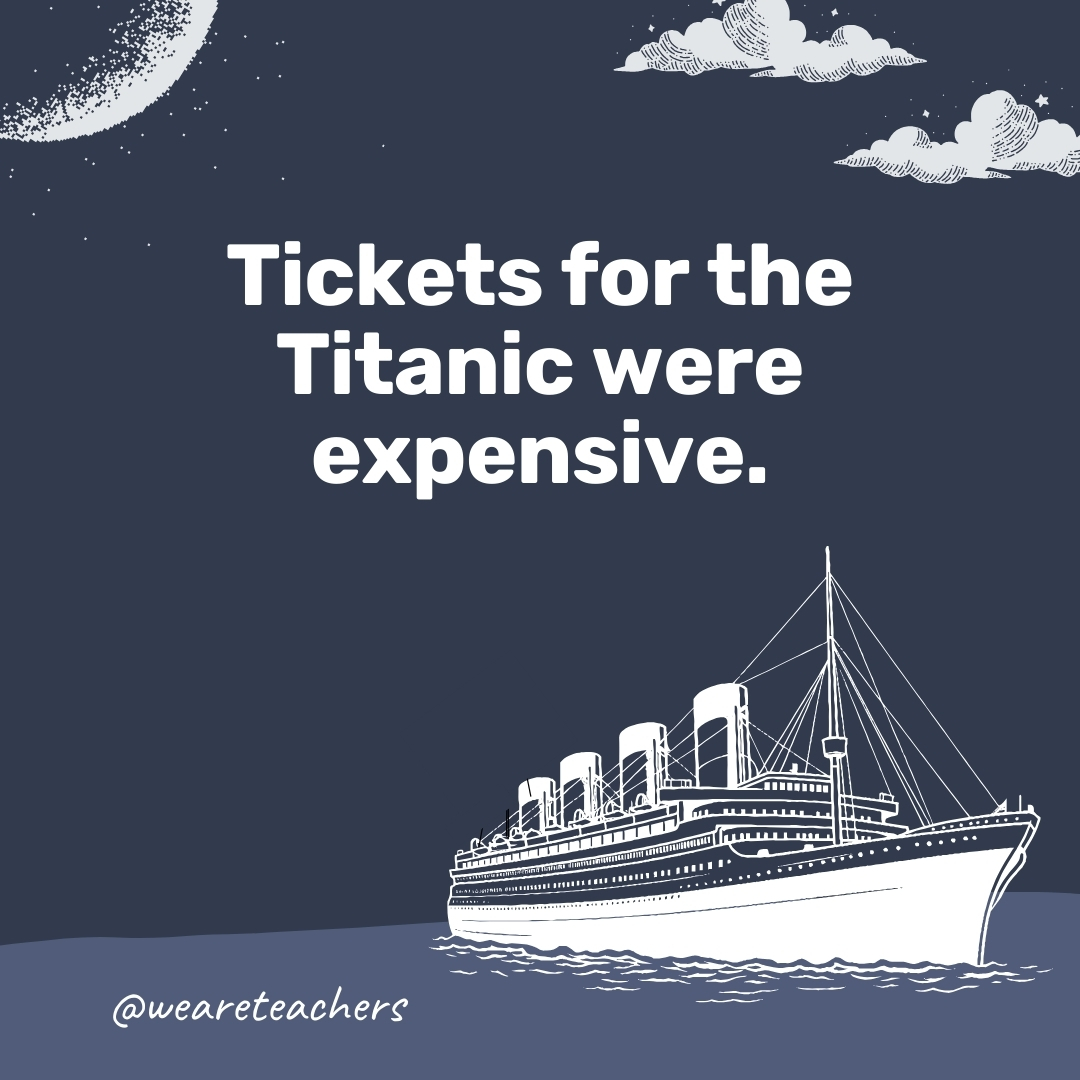
A first-class ticket was $2,500, the equivalent of $57,000 today. A third-class ticket was $40, equivalent to $900 today.
Titanic Facts About Its Sinking
32. there weren’t enough lifeboats for everyone on board the titanic..
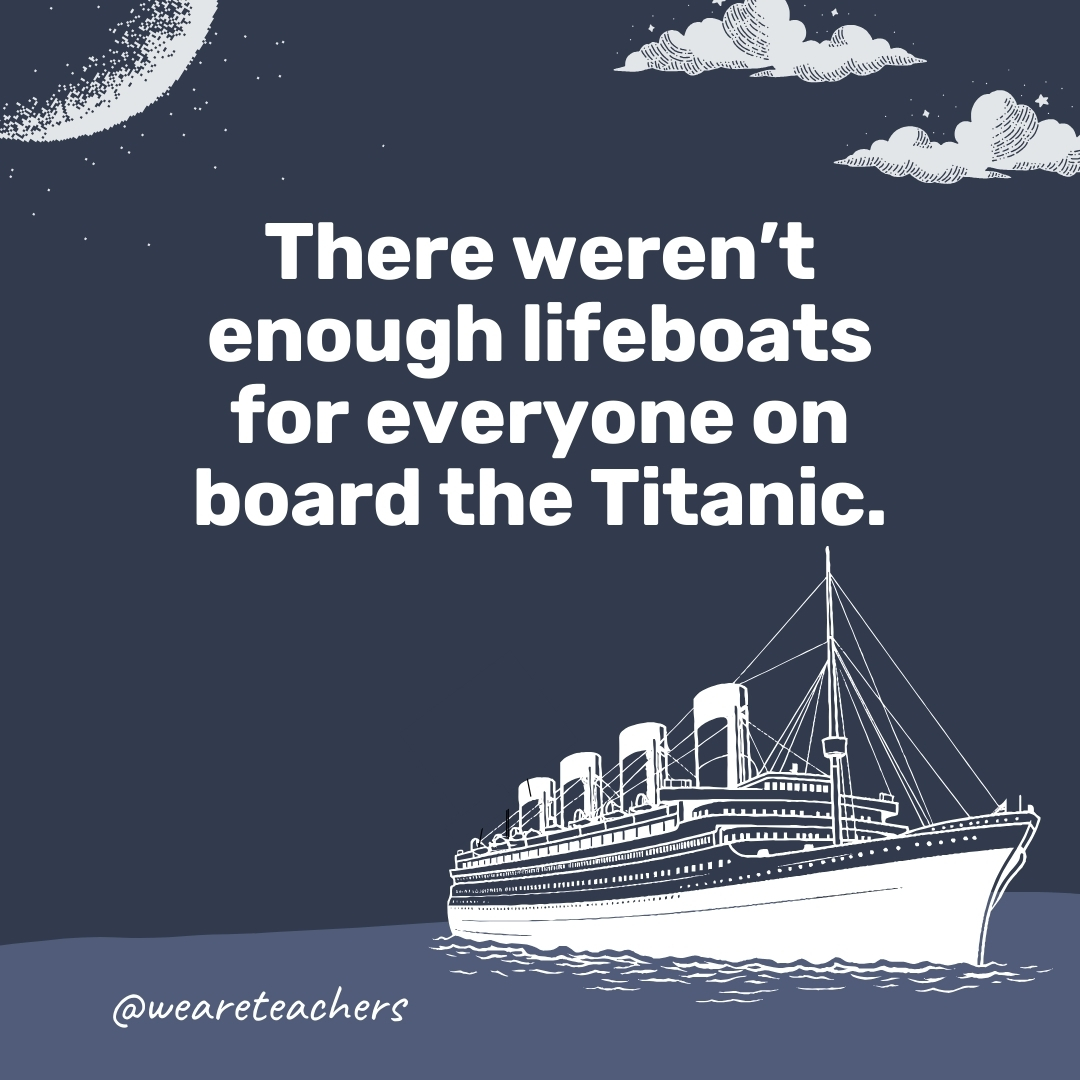
There were only 20 lifeboats on board, enough for 1,178 out of the 3,320 people the ship could hold.
33. The Titanic was traveling at 20.5 knots when it hit the iceberg.
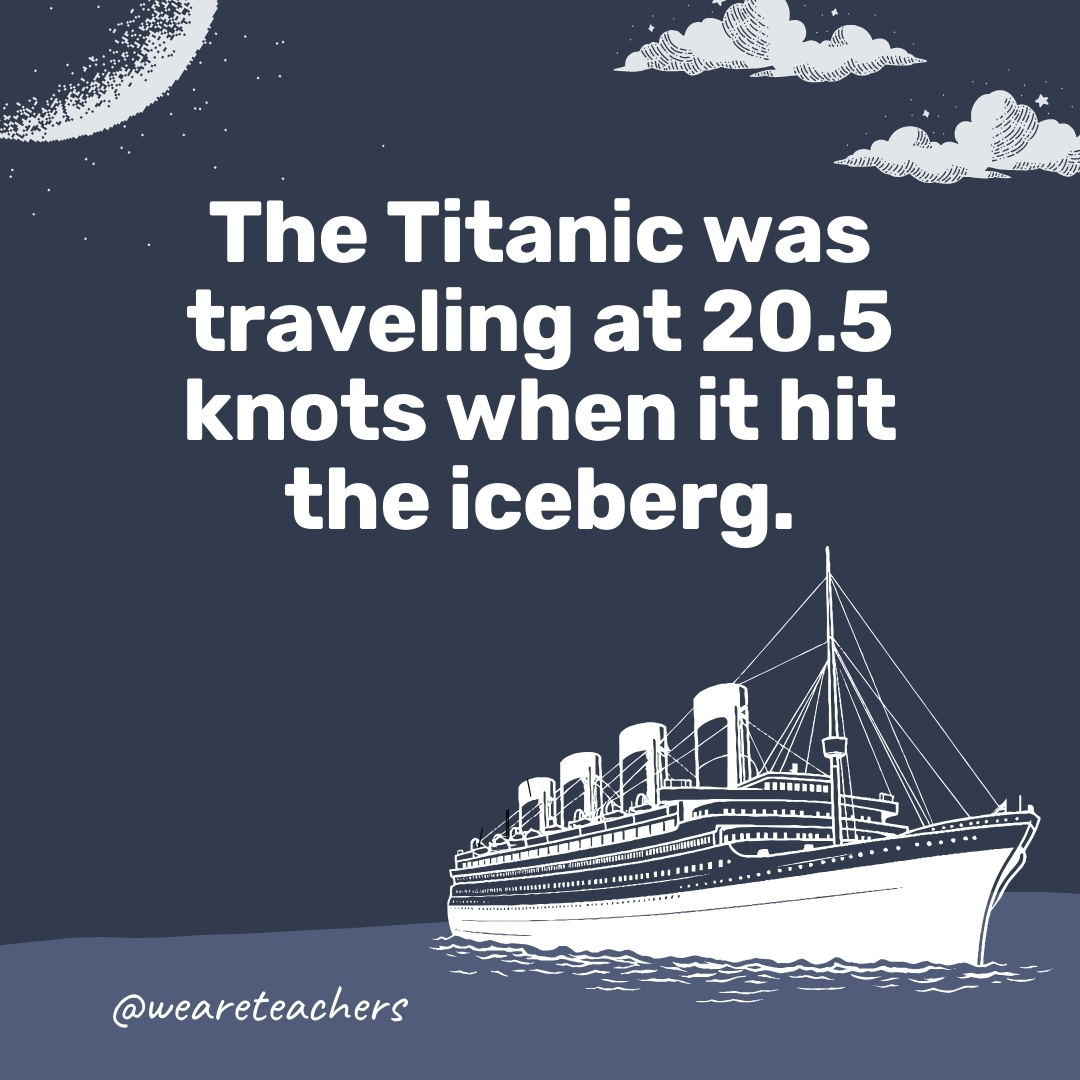
That’s about 23.6 miles per hour , an average speed for a ship.
34. A warning about icebergs never reached the captain of the Titanic.
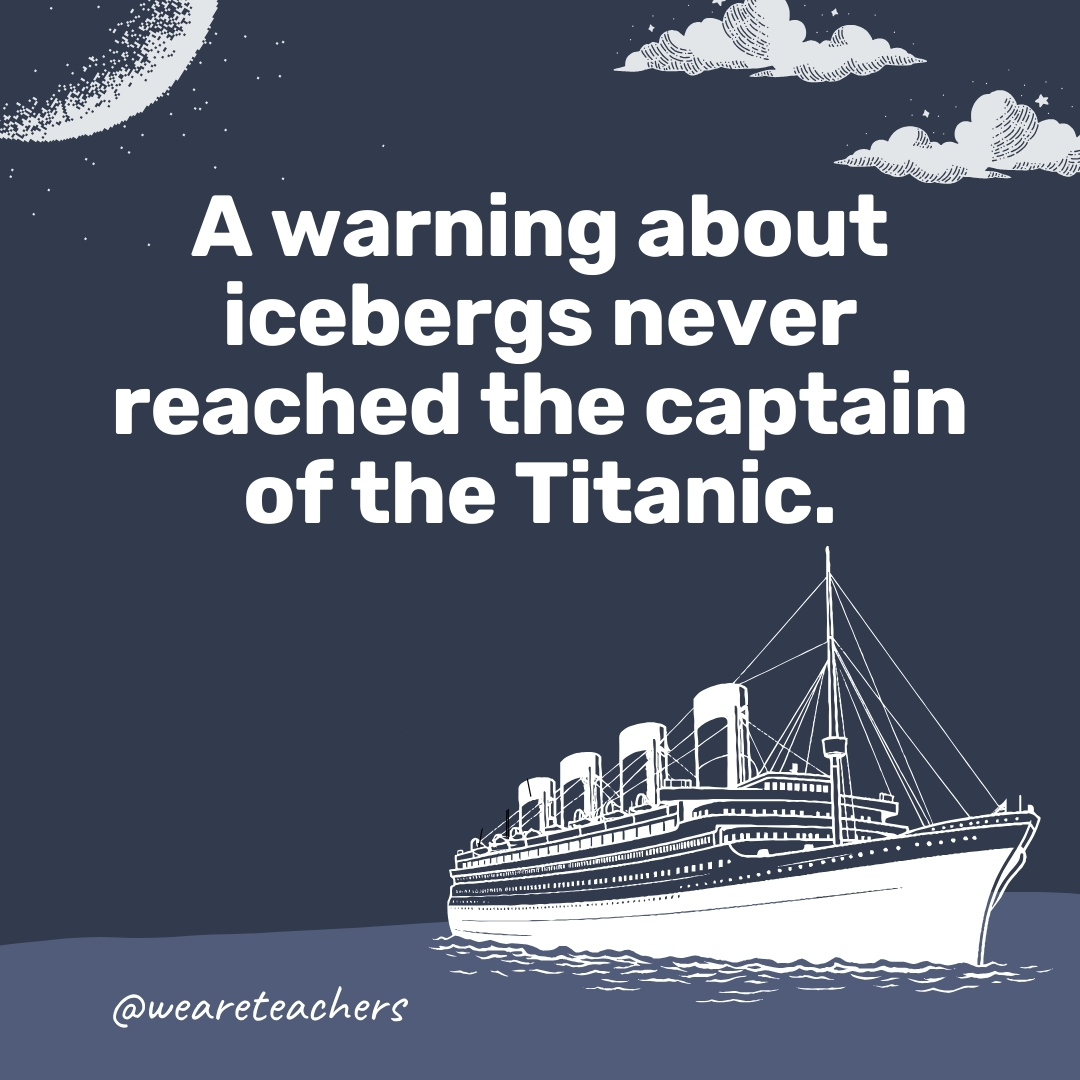
At 9:40 p.m. on April 14, 1912, another ship, the Mesaba, sent a warning about an ice field, but the message never got from the wireless radio operators to the bridge. Another warning about icebergs from the Californian wasn’t passed along either.
35. The ocean was calm when the Titanic crashed.
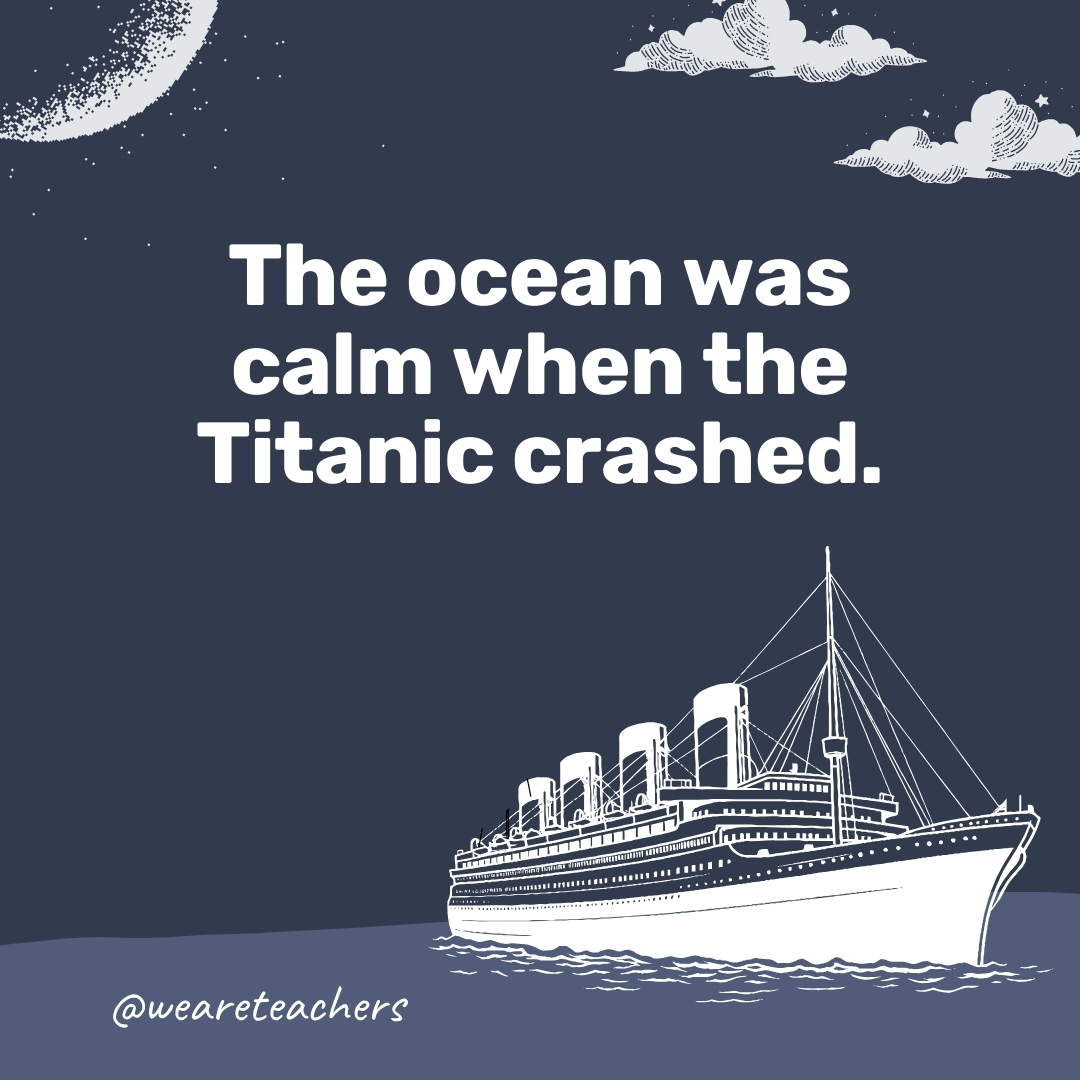
The calm water made it even harder to see the iceberg because there was no water crashing against it.
36. There were no binoculars in the crow’s nest of the Titanic.
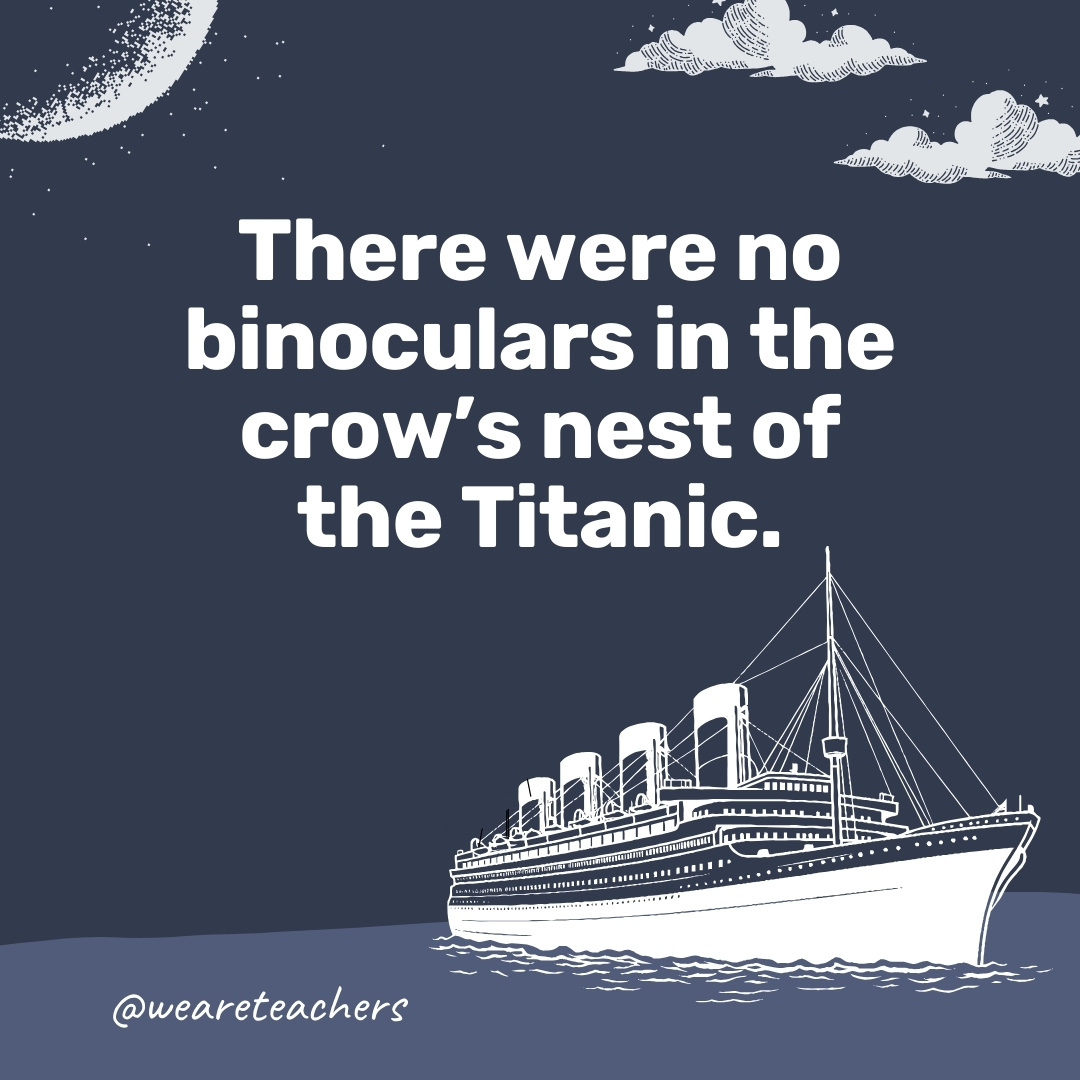
The binoculars were missing from the crow’s nest, making it even more difficult to see the iceberg. They were locked in a cabinet and no one had the key.
37. The lookouts on the Titanic saw the iceberg at 11:40 p.m.
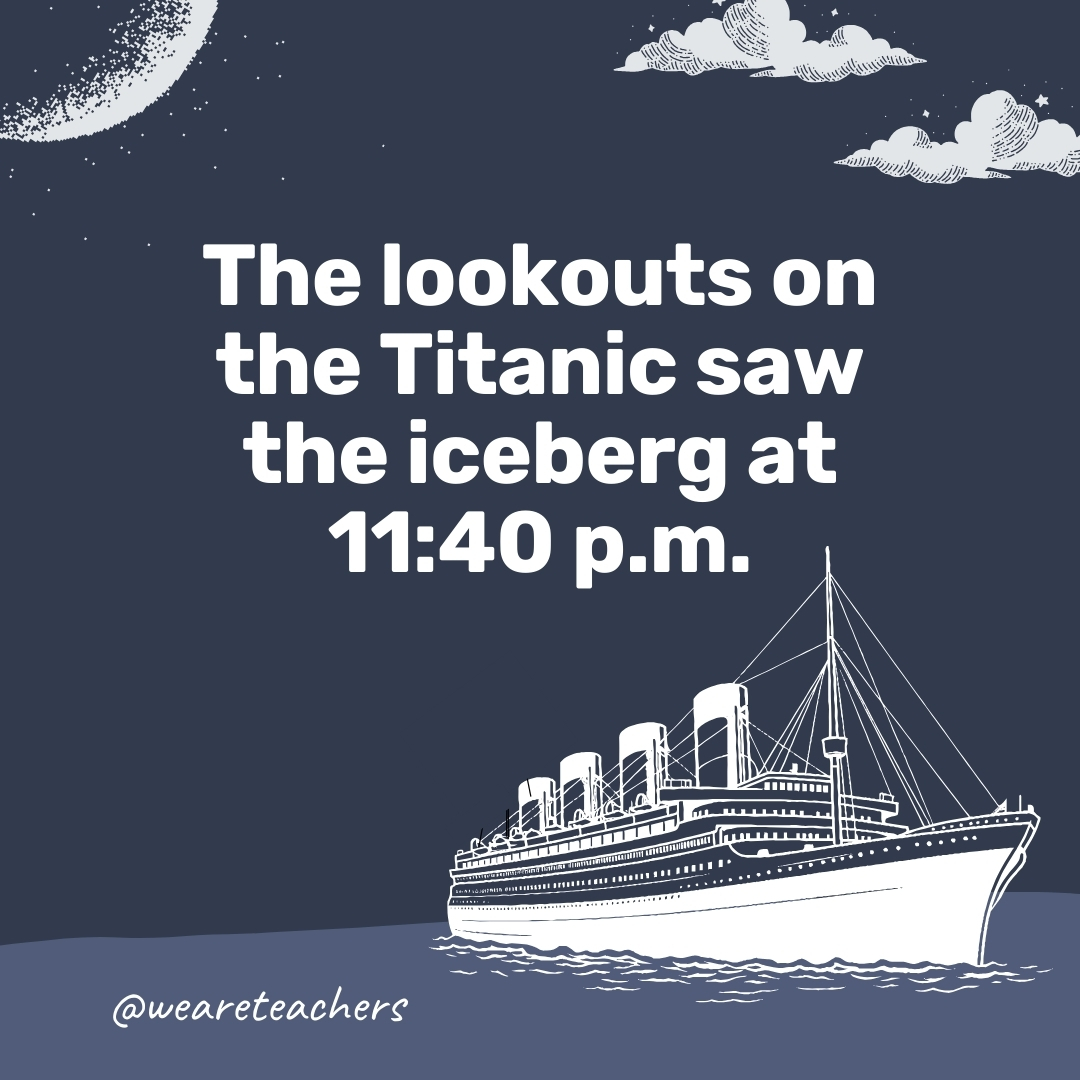
That’s an hour after the last warning about icebergs had come in through the radio.
38. The starboard side of the Titanic hit the iceberg.
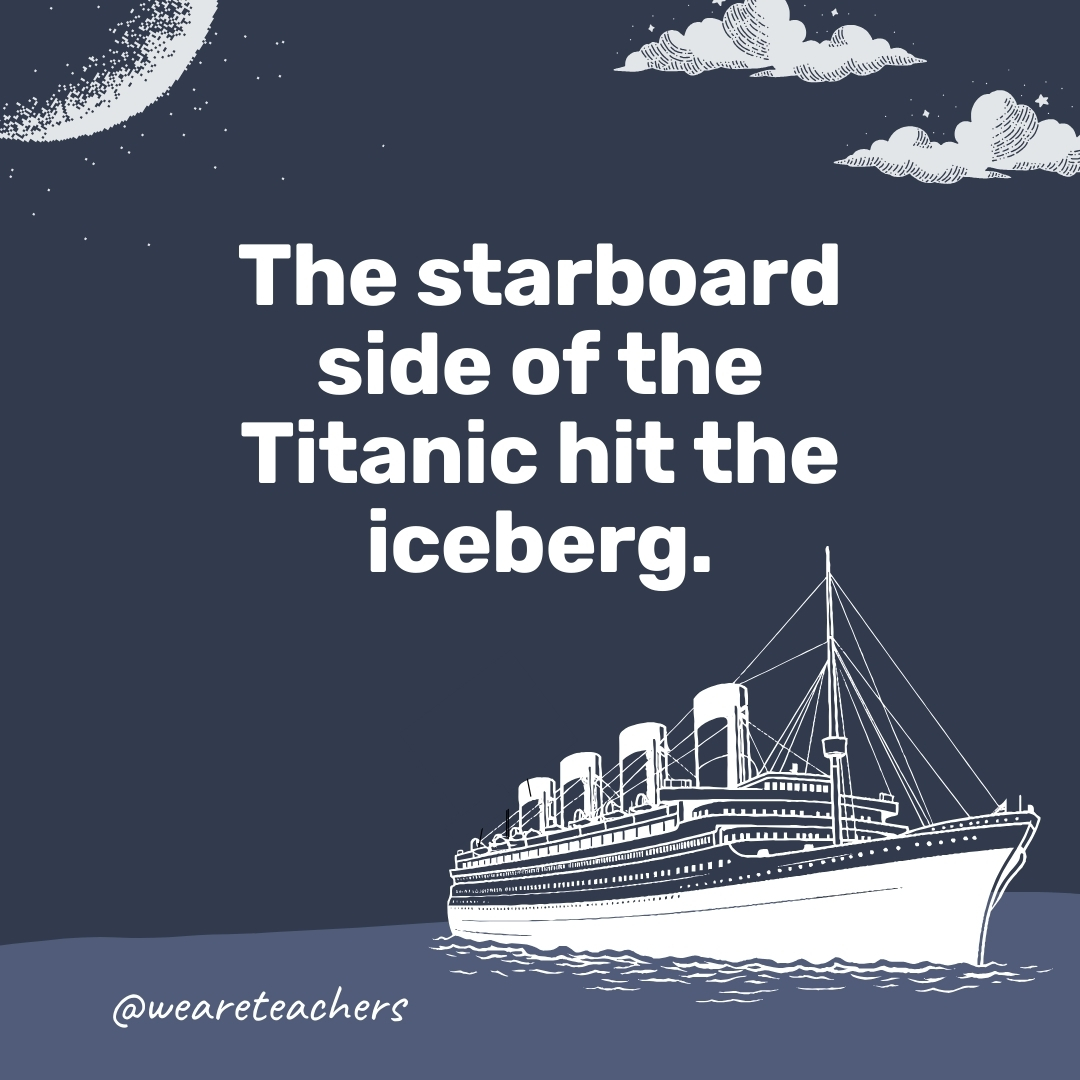
The iceberg scraped the side and broke the forward compartments.
39. The Titanic might not have sunk if it had hit the iceberg head on.
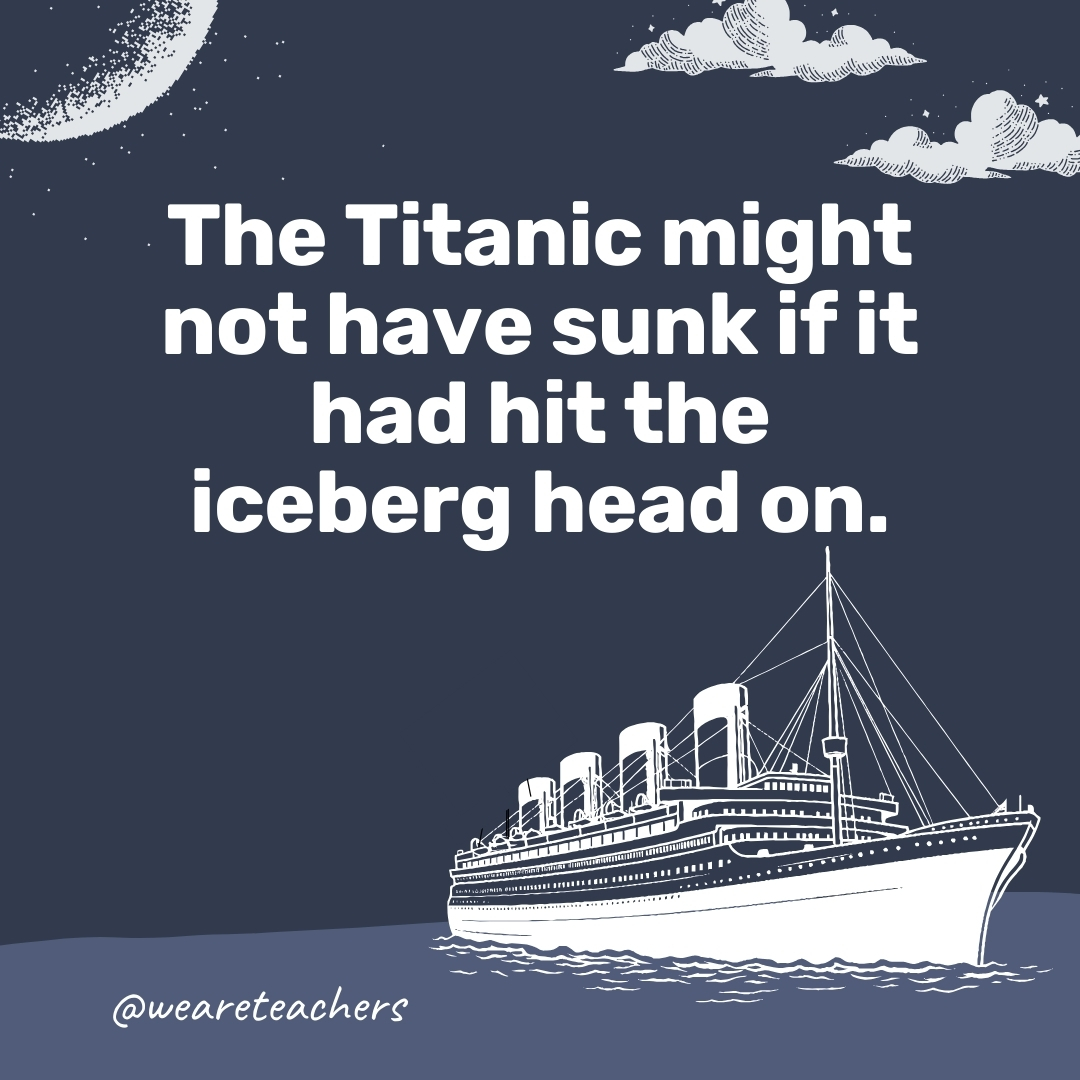
Many experts agree that if the captain had not turned the ship, it would not have broken the compartments and would not have sunk .
40. A lifeboat drill on the Titanic was canceled earlier in the day.
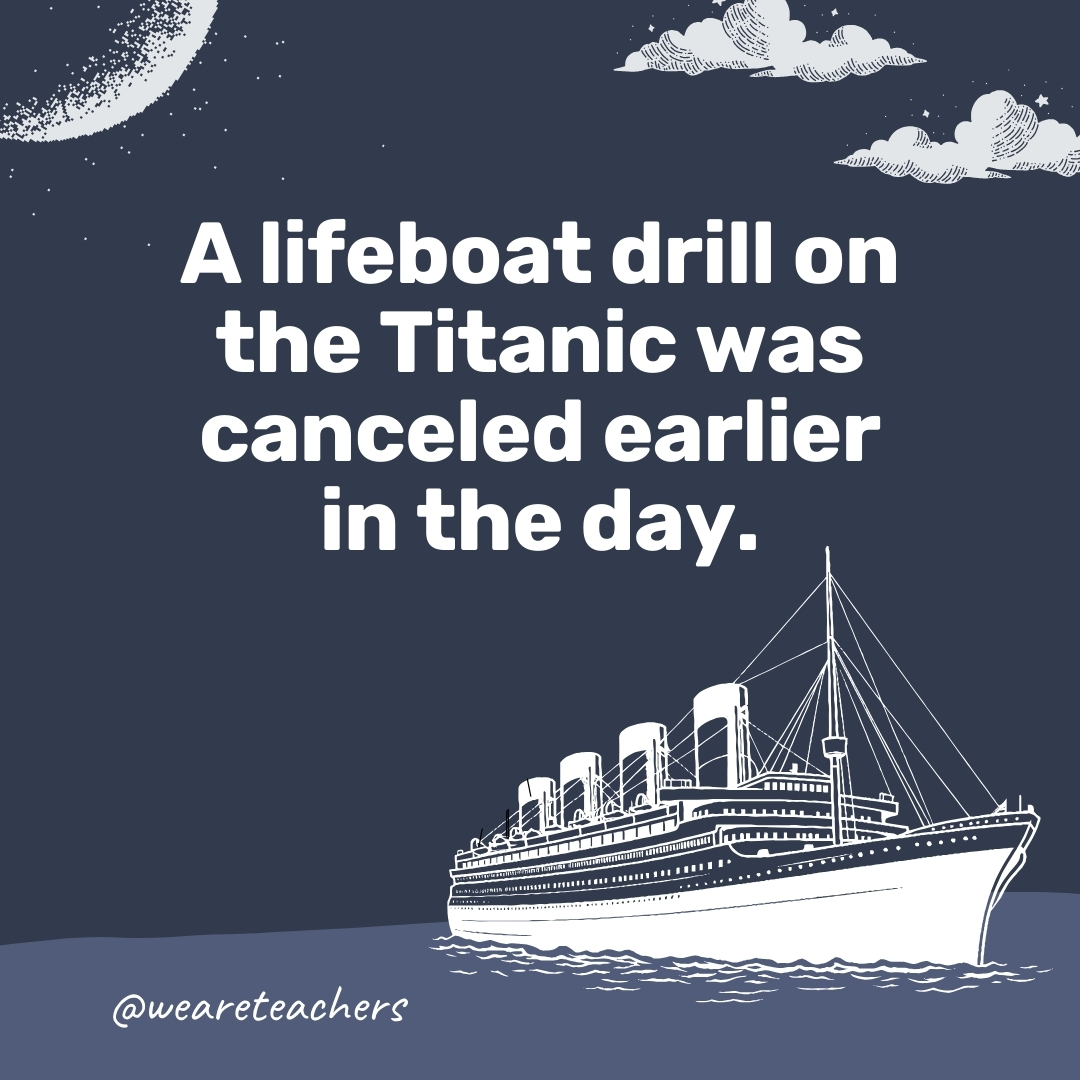
Because of this, the boats were not loaded to full capacity and even fewer passengers were saved.
41. Only 705 of the 2,240 Titanic passengers were rescued in lifeboats.
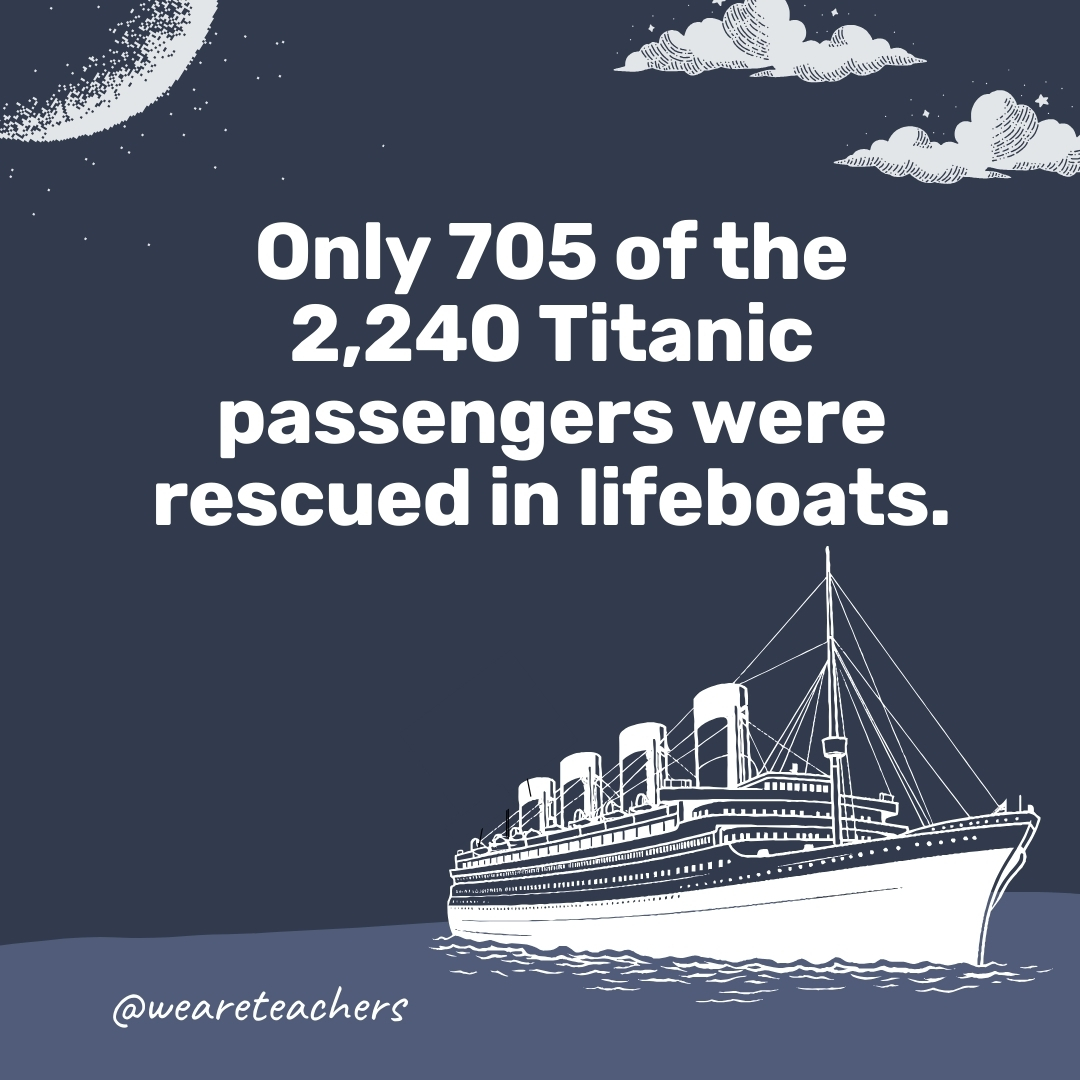
The ship had enough space for more than 1,100 people in lifeboats.
42. Lifeboat number 7 was the first to leave the Titanic.
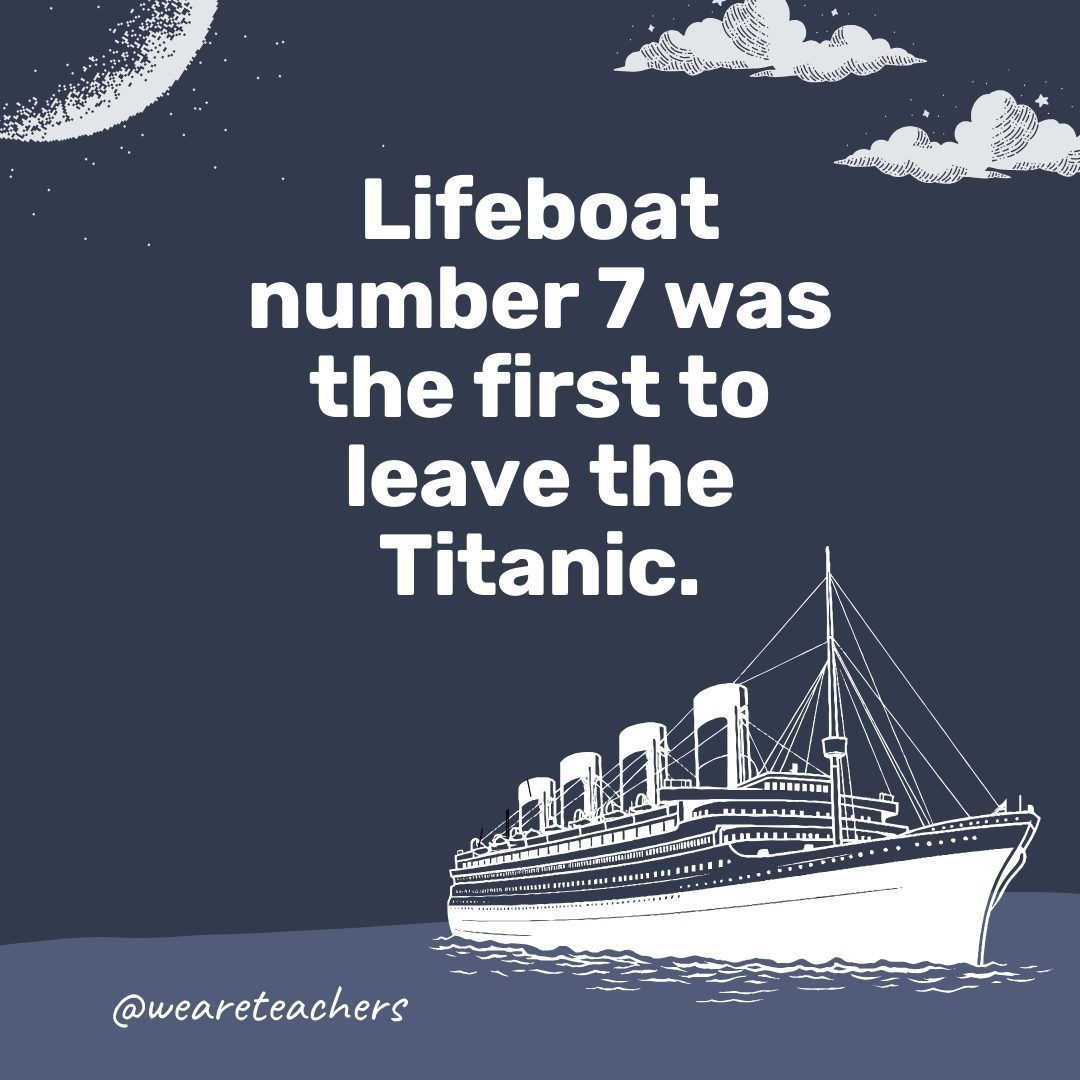
It held 27 people out of its 65-person max capacity.
43. The ship’s musicians played until the Titanic sank.
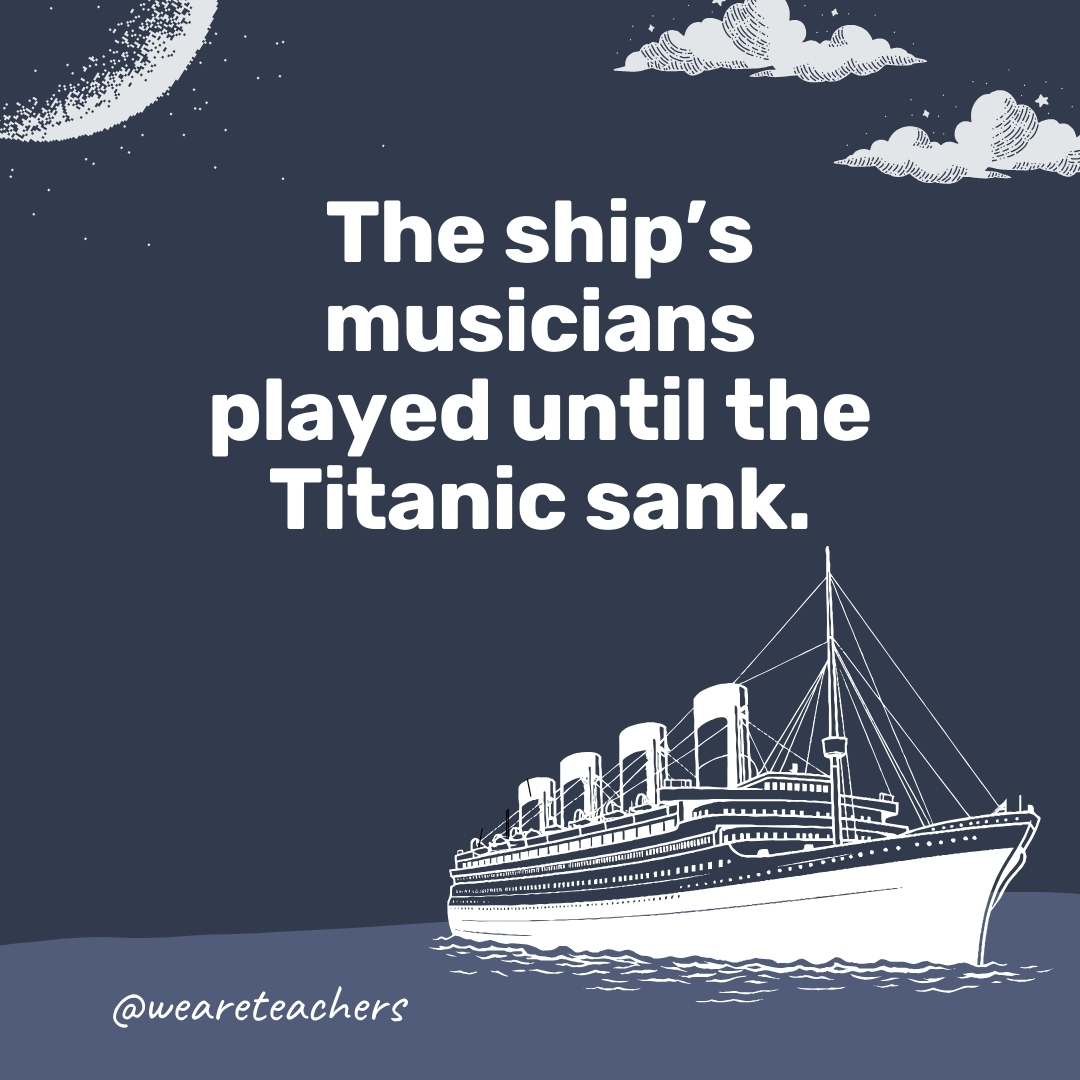
They played a full set in the first-class lounge and then moved to the deck.
44. Socialite Molly Brown earned the nickname “The Unsinkable Molly Brown” for the bravery she showed while the Titanic sank.
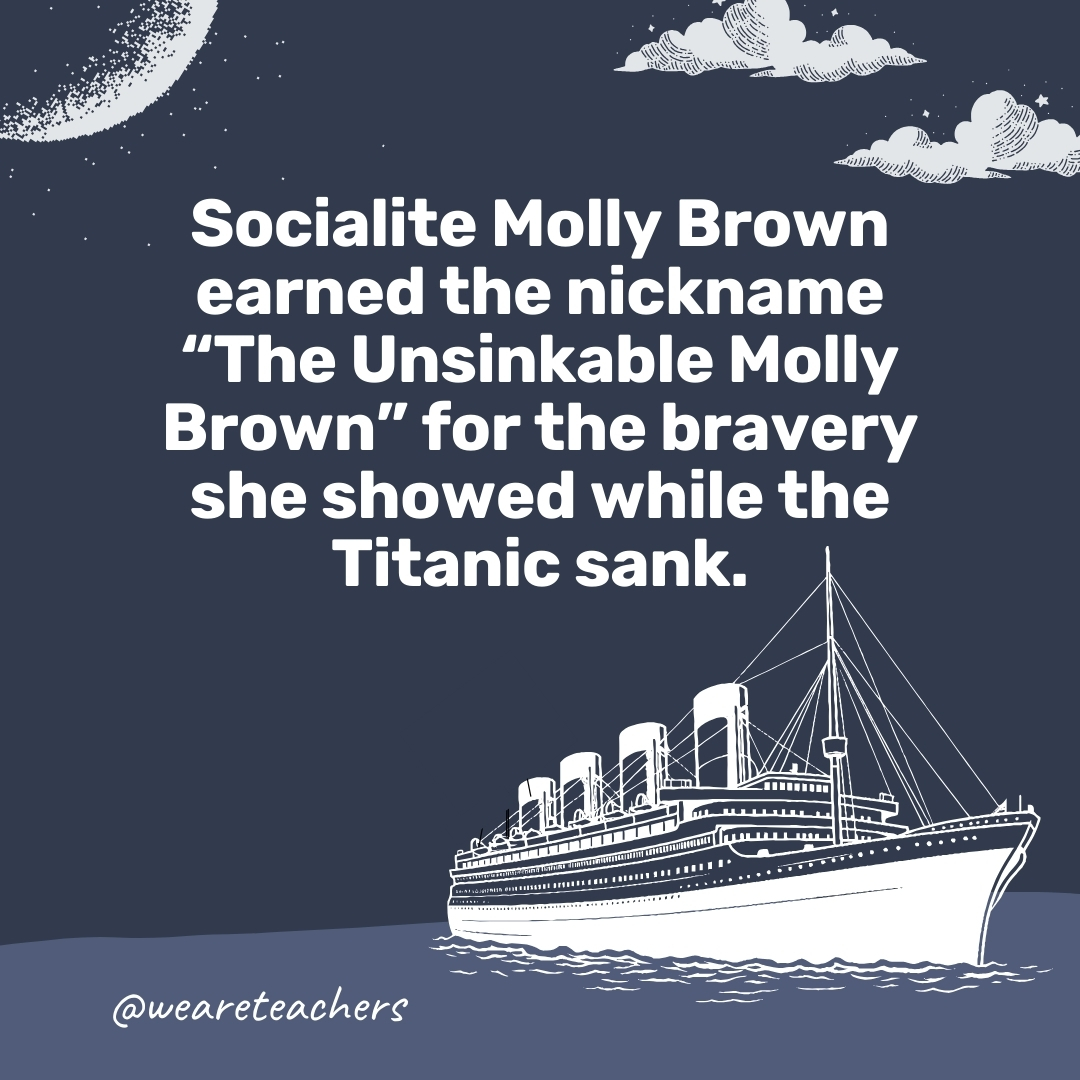
Brown survived the disaster and reportedly helped other survivors get into lifeboats .
45. At 2 a.m., the Titanic captain released the crew.
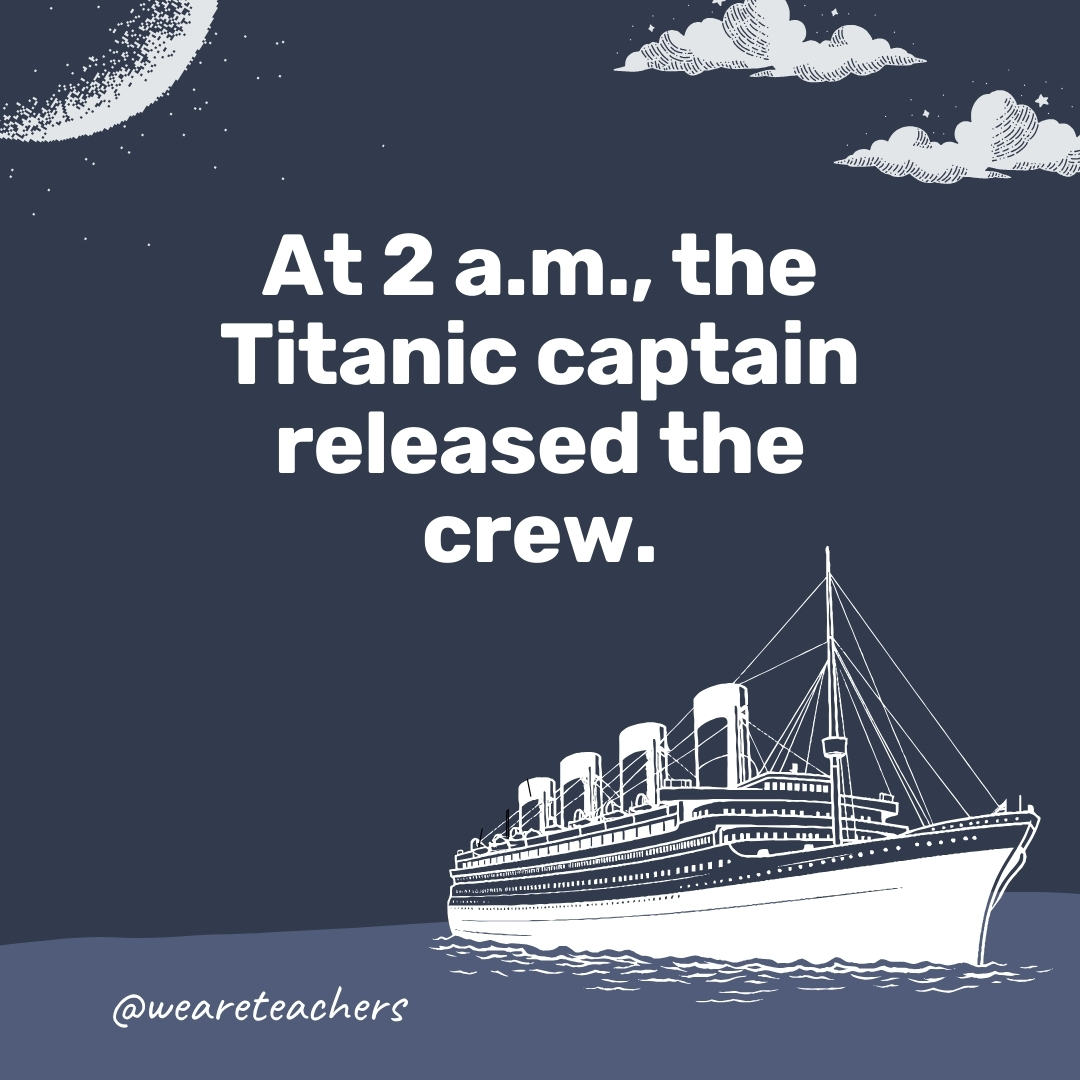
The stern was rising out of the water and the propellers were visible when the captain told the crew that it was “every man for himself.”
46. The Titanic captain’s body was never found.
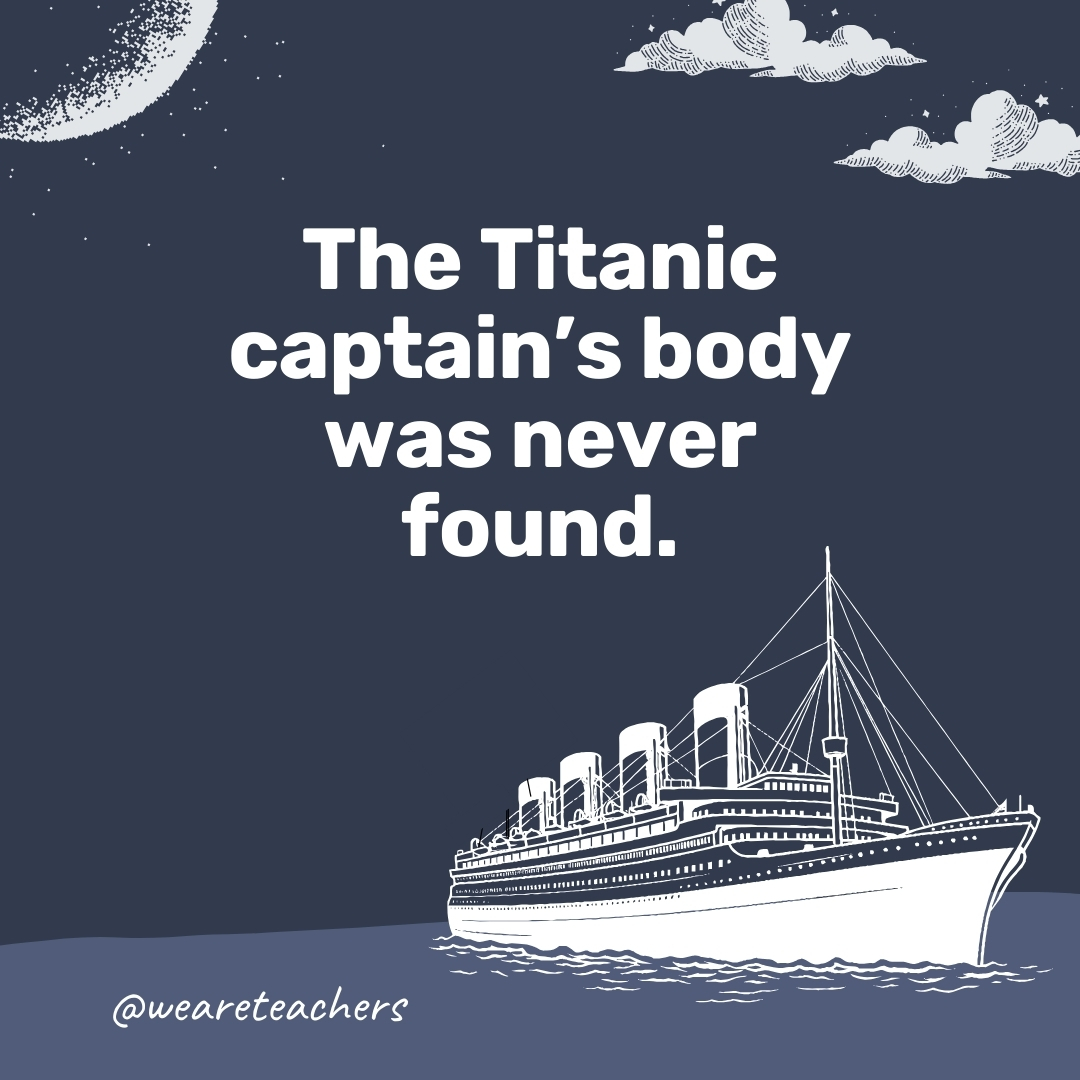
The last time he was seen he was on the bridge .
47. The lights on the Titanic went out at 2:18 a.m.
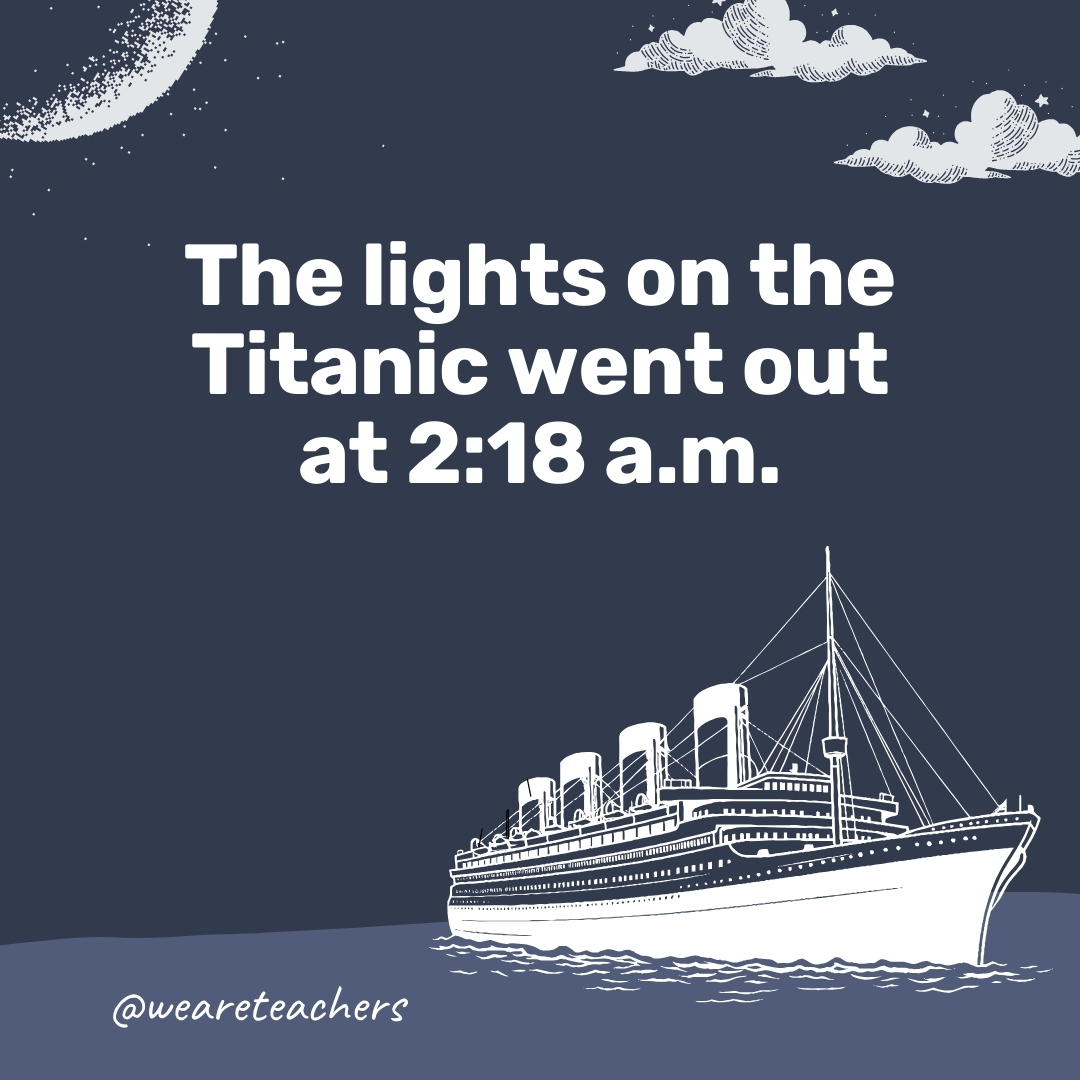
That’s when the ship broke in two . The bow went underwater.
48. The bow of the Titanic took 6 minutes to get to the ocean floor.
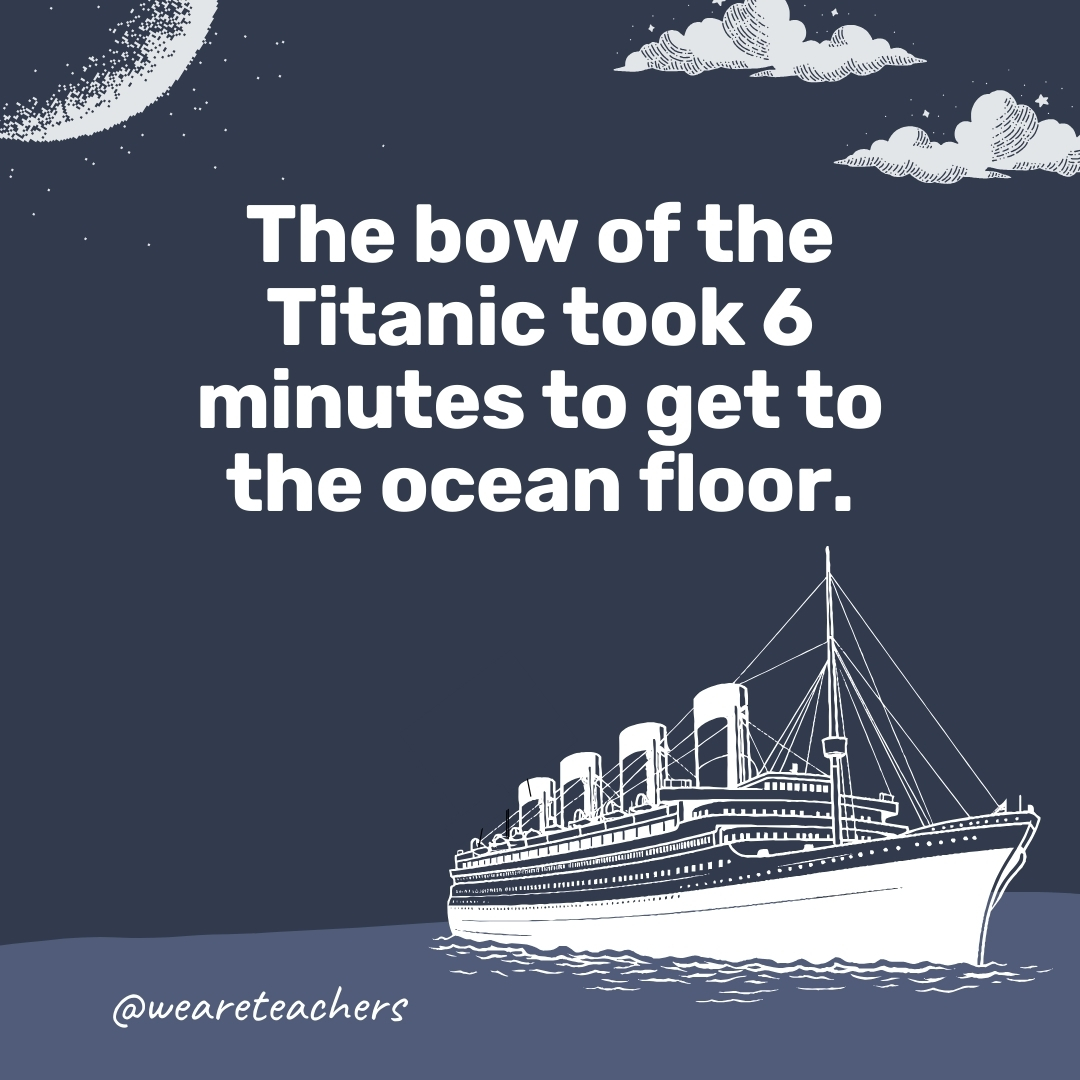
It’s estimated to have been traveling about 30 miles per hour .
49. By 2:20 a.m., the Titanic was completely sunk.
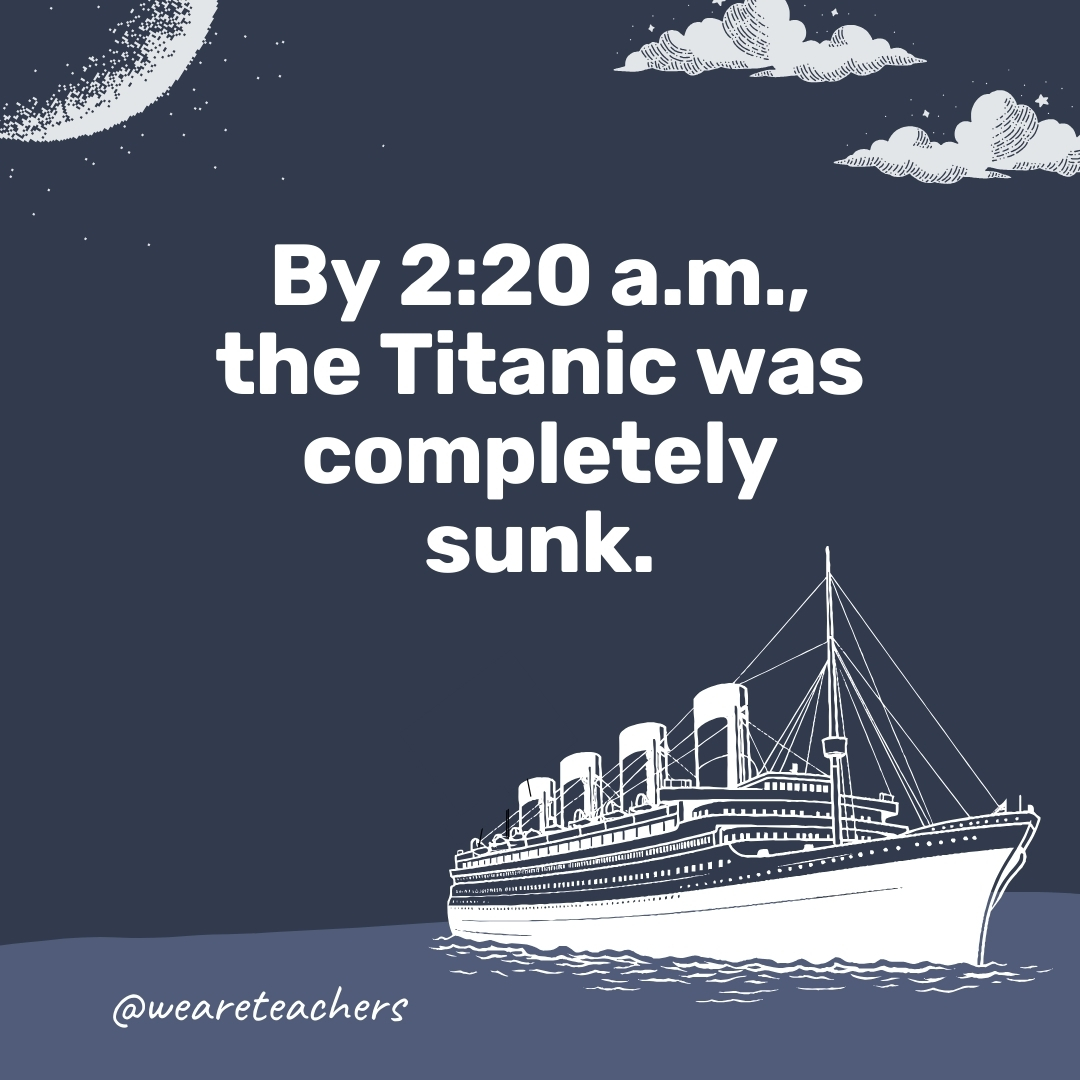
The stern sank after the bow and reportedly imploded as it sank due to water pressure.
50. Some passengers sat on the deck while the Titanic sank.
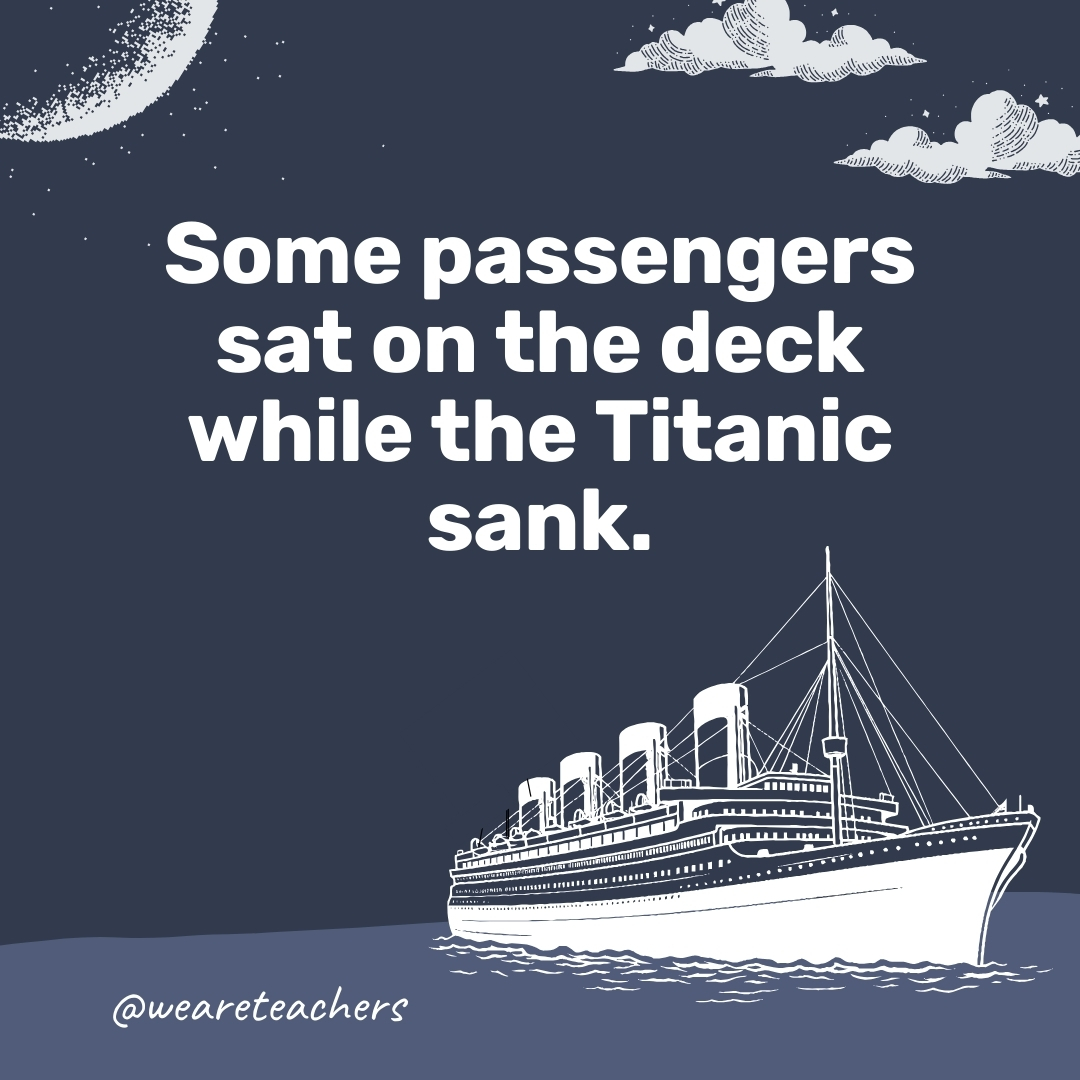
Benjamin Guggenheim, a famous American businessman , is reported to have dressed up and sat with his valet on the deck while the ship went down.
51. Two dogs survived the Titanic sinking.
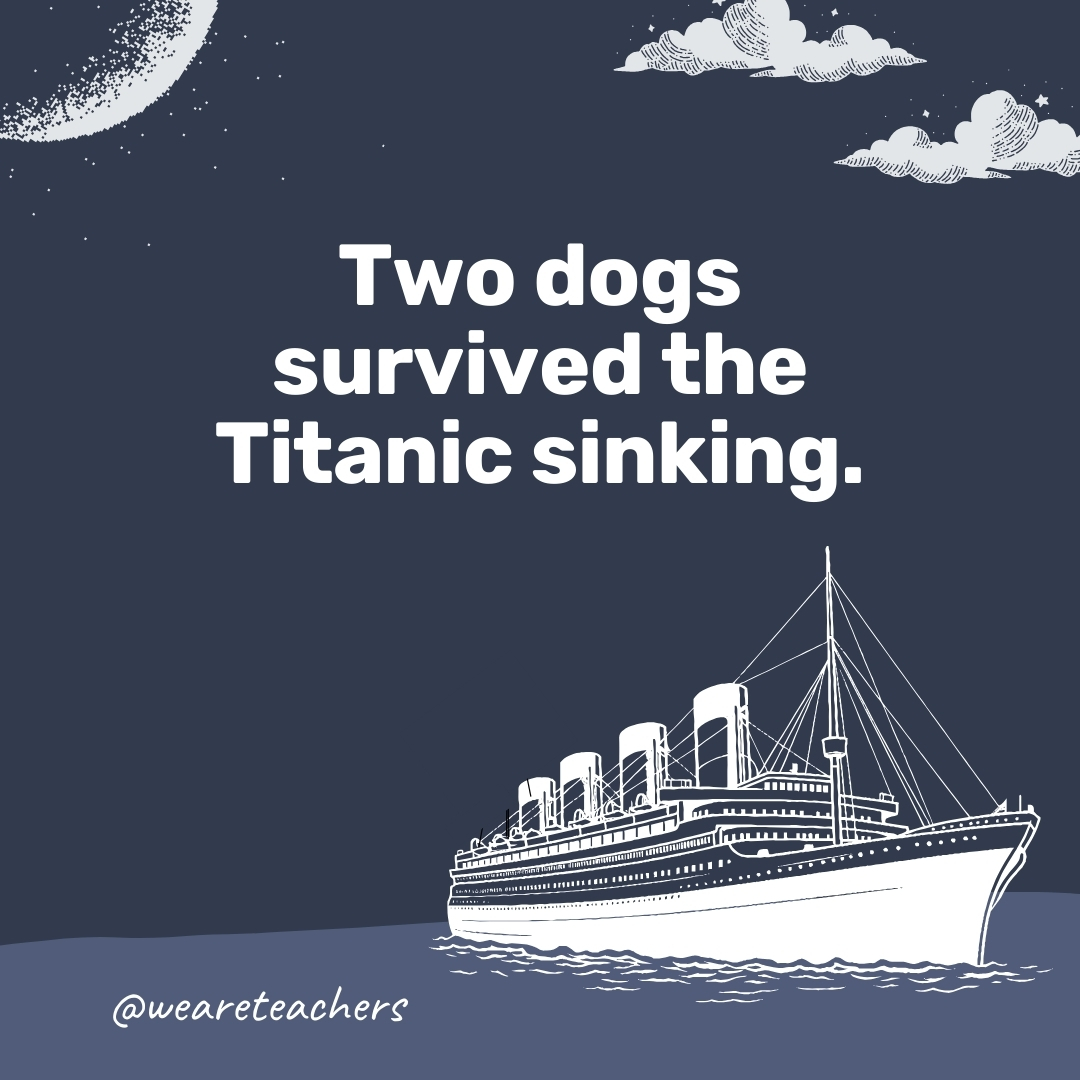
A Pomeranian and Pekinese were on their owners’ laps in lifeboats. They were two of nine dogs on board.
52. The iceberg that the Titanic struck was 100 feet tall.
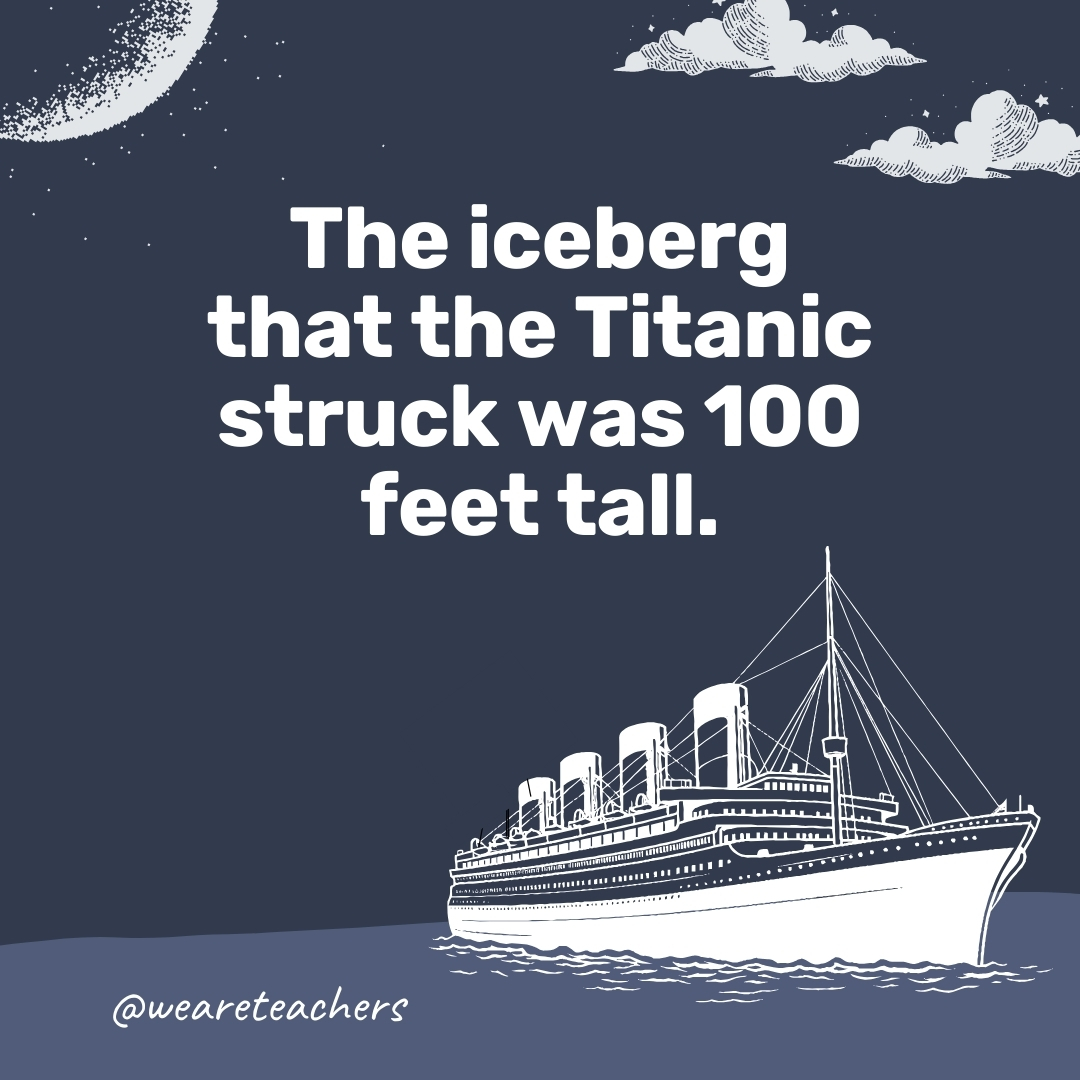
It had broken off of a glacier in Greenland.
53. Only 37 seconds passed between noticing the iceberg and the Titanic hitting it.
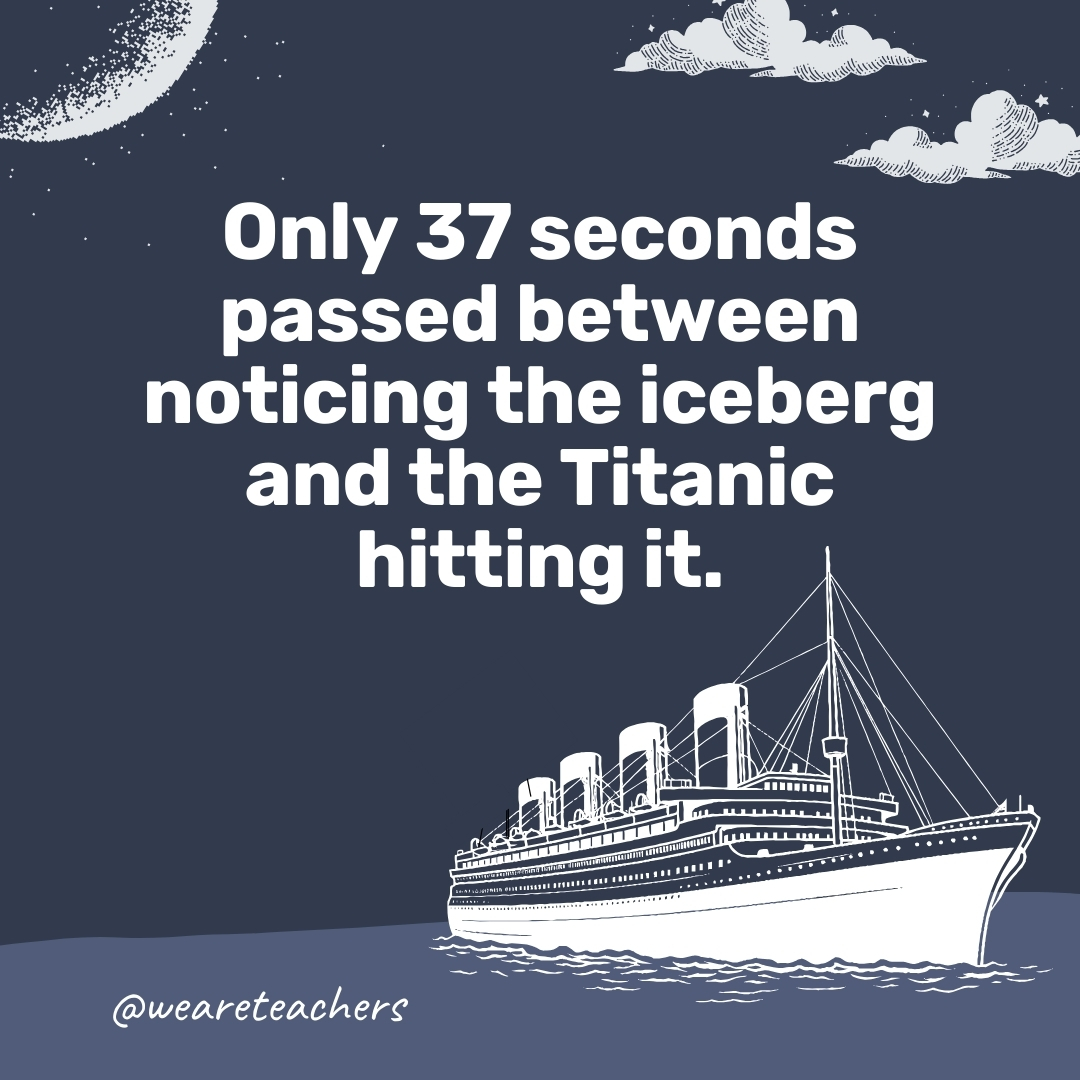
That’s less than a minute to turn the biggest moving object in the world.
54. The water was 28 degrees Fahrenheit on the night the Titanic sank.
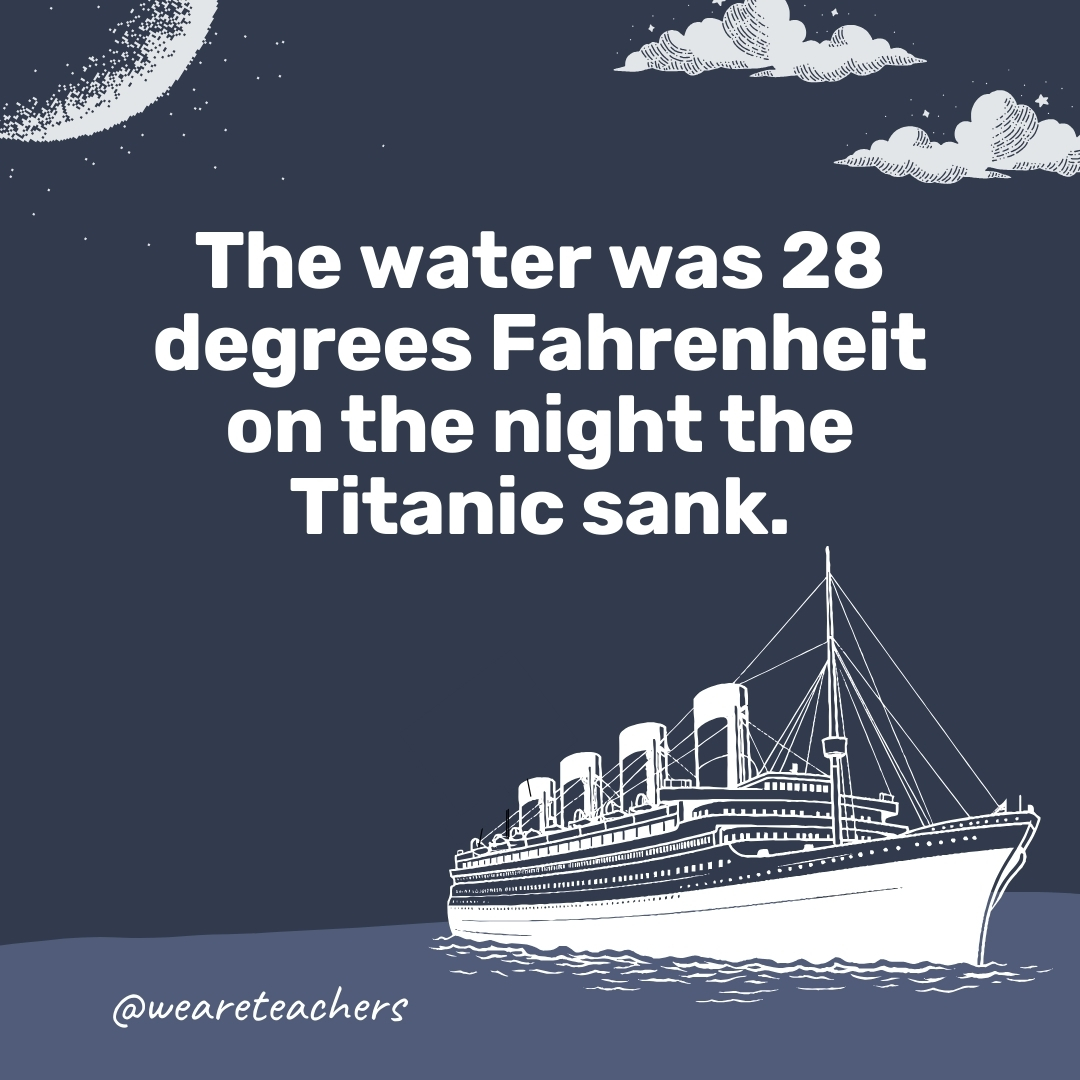
That’s -2 degrees Celsius . Suffice it to say, that’s very cold.
55. A greater percentage of women passengers on the Titanic survived.
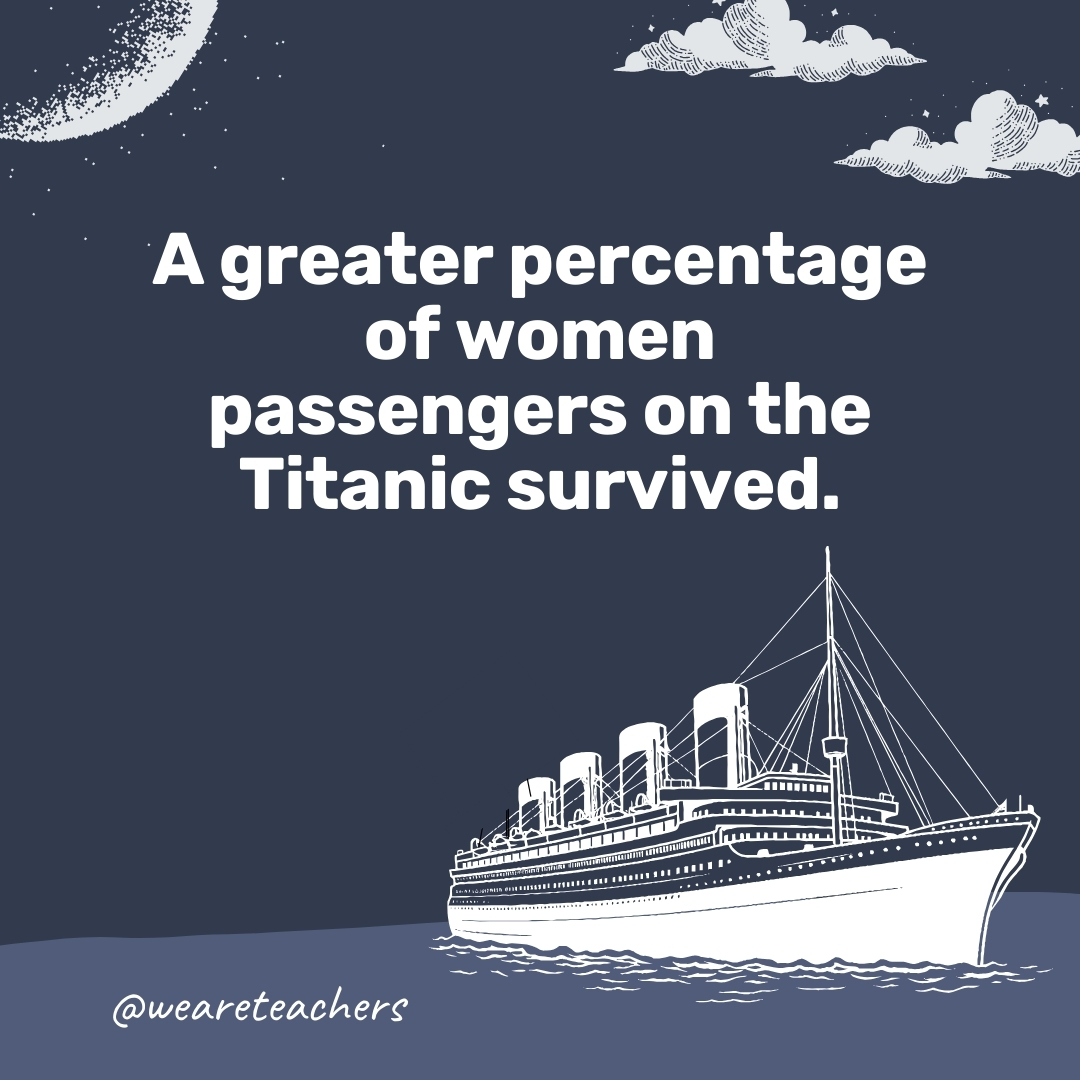
Ninety-seven percent of first-class women passengers survived, compared to 33% of first-class men. And 46% of third-class women survived compared to 16% of third-class men.
Titanic Facts About After the Ship Sank
56. the carpathia was the first ship to arrive after the titanic sank..
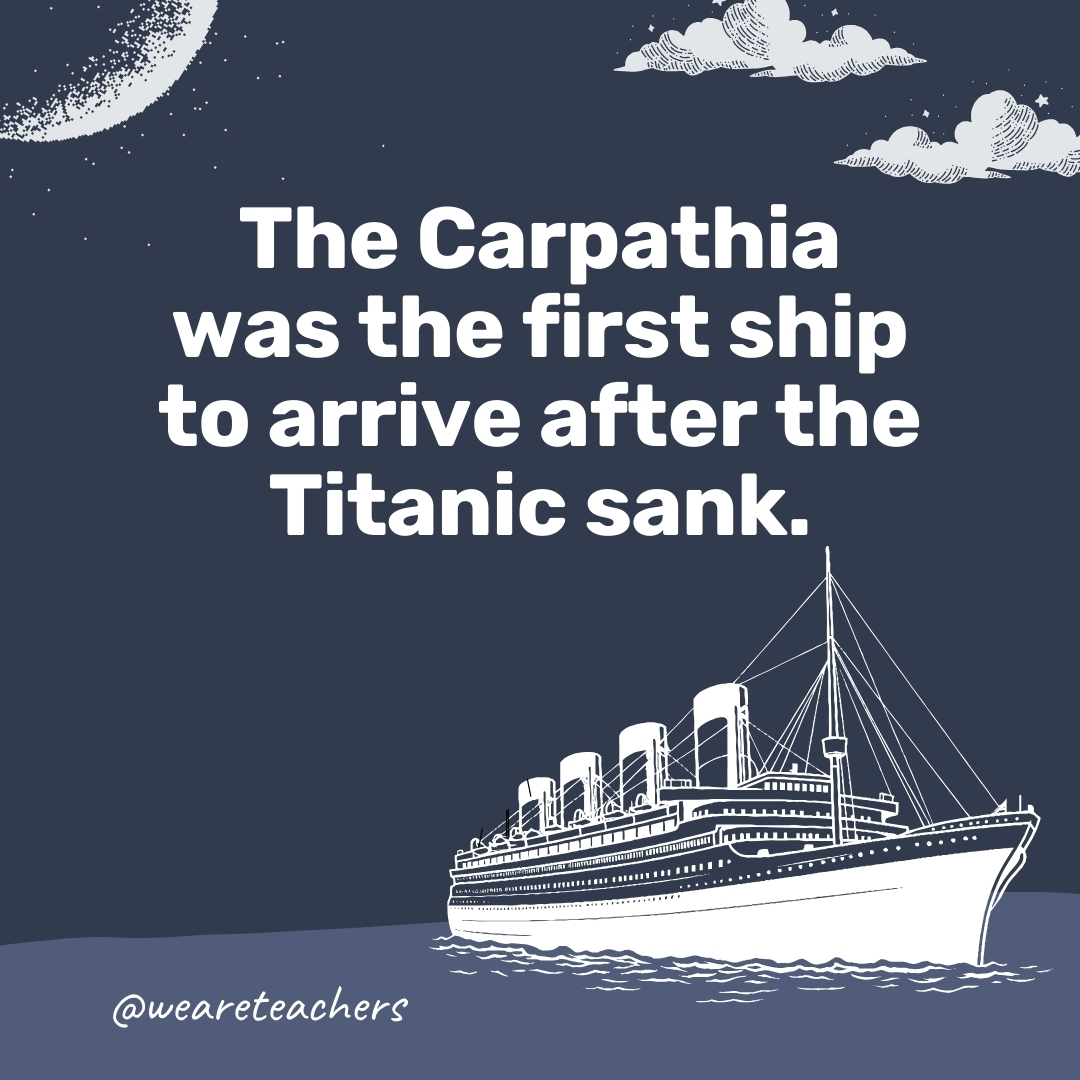
It got to the site at 3:30 a.m., more than an hour after the Titanic sank. Carpathia picked up all the survivors.
57. The bow of the Titanic is 12,500 feet under the sea.
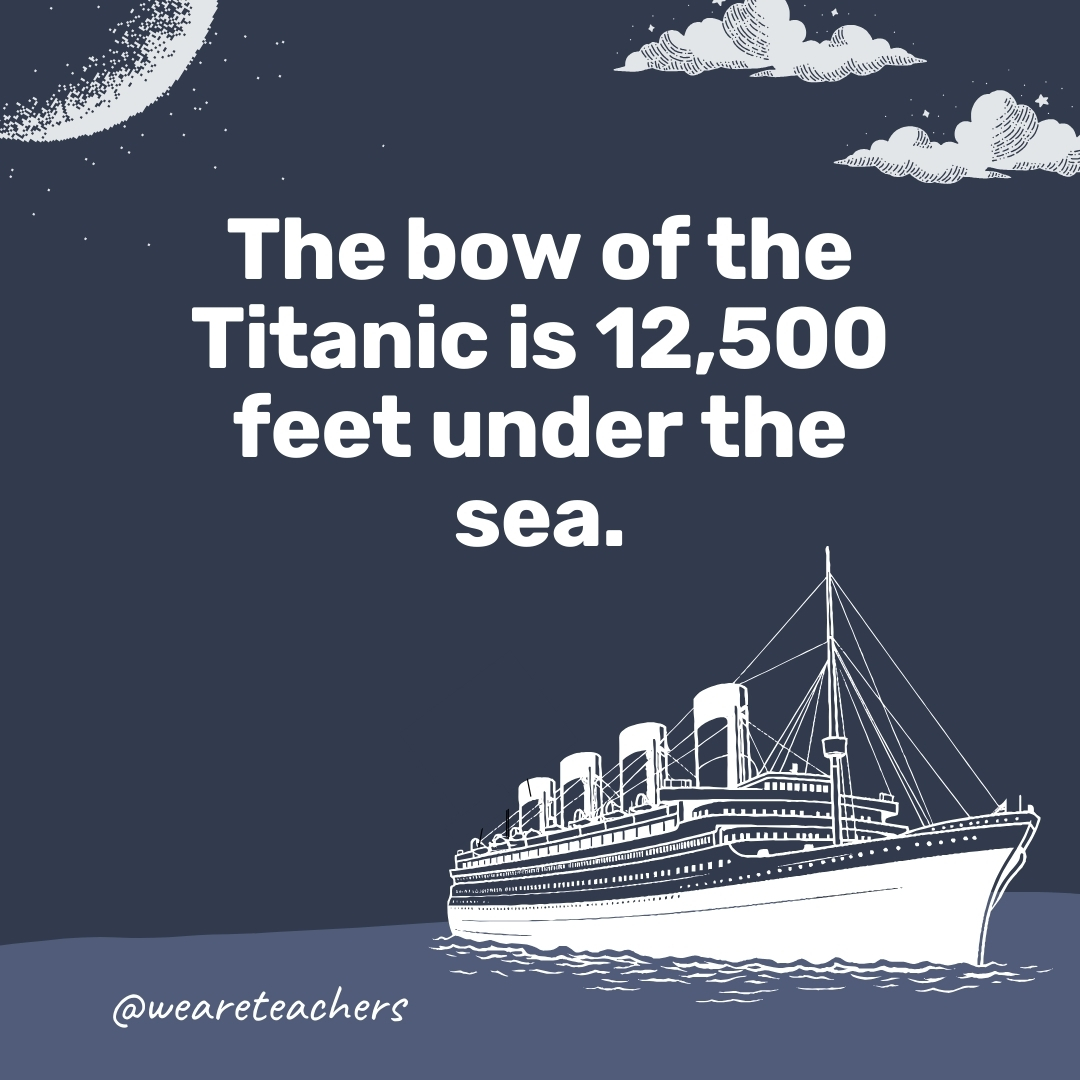
It was photographed by the Hercules in 2004.
58. The last survivor of the Titanic died in 2009.
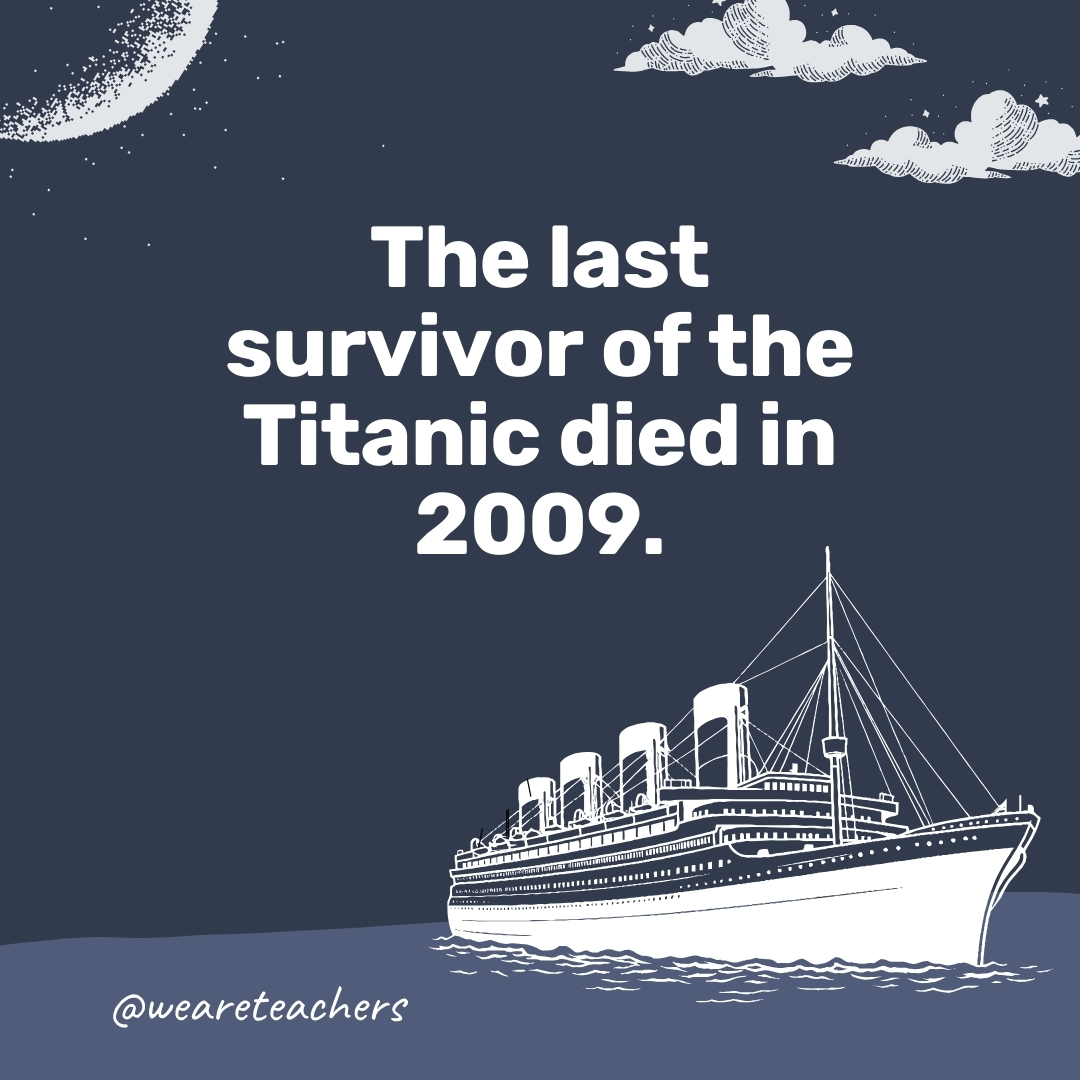
Millvina Dean was 2 months old when she was on the Titanic. She died May 31, 2009, at age 97.
59. One Titanic passenger trod water for two hours before being rescued.
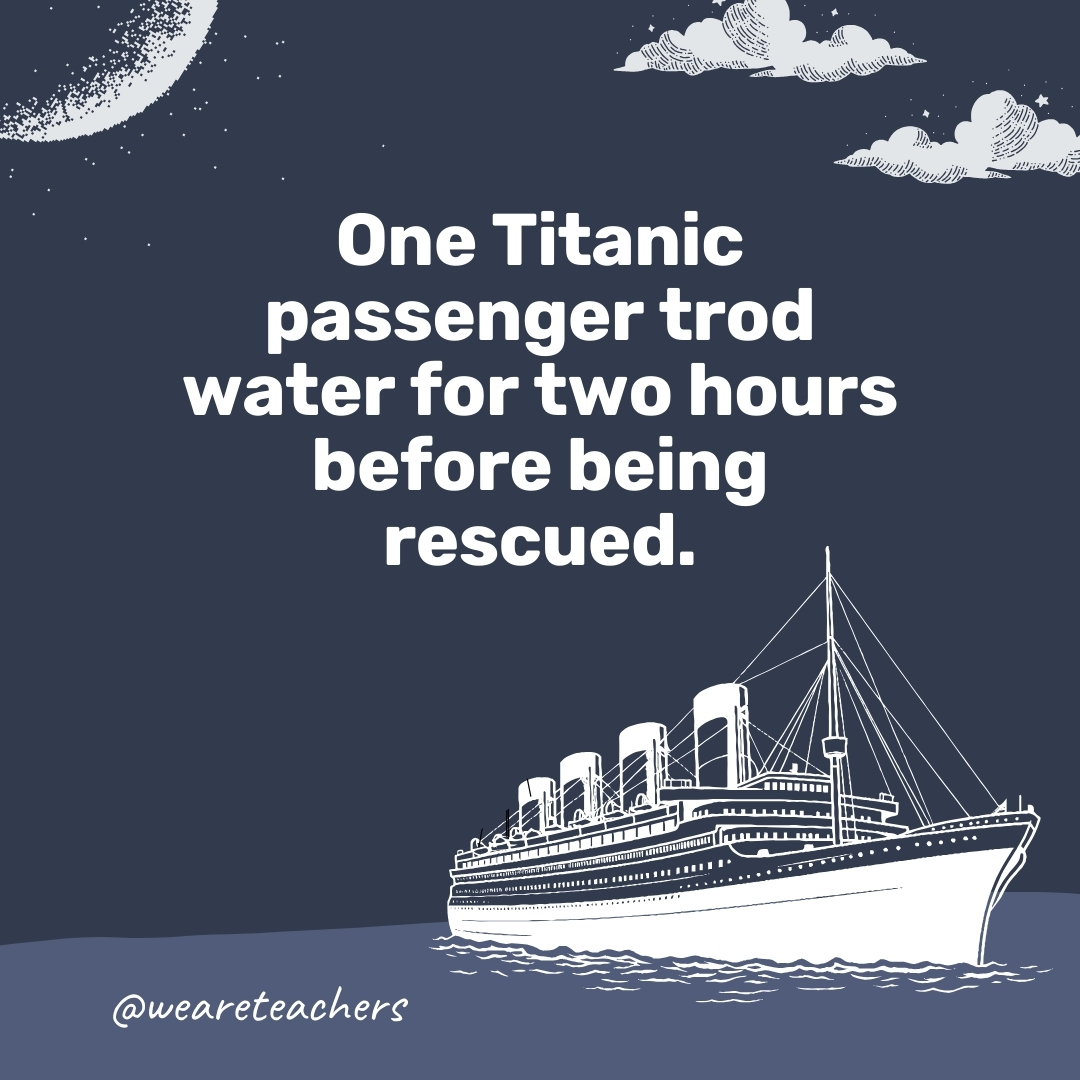
Charles Joughin , the ship’s baker, was in the water for two hours but didn’t become sick or succumb to hypothermia.
60. Forty thousand people greeted the survivors of the Titanic.
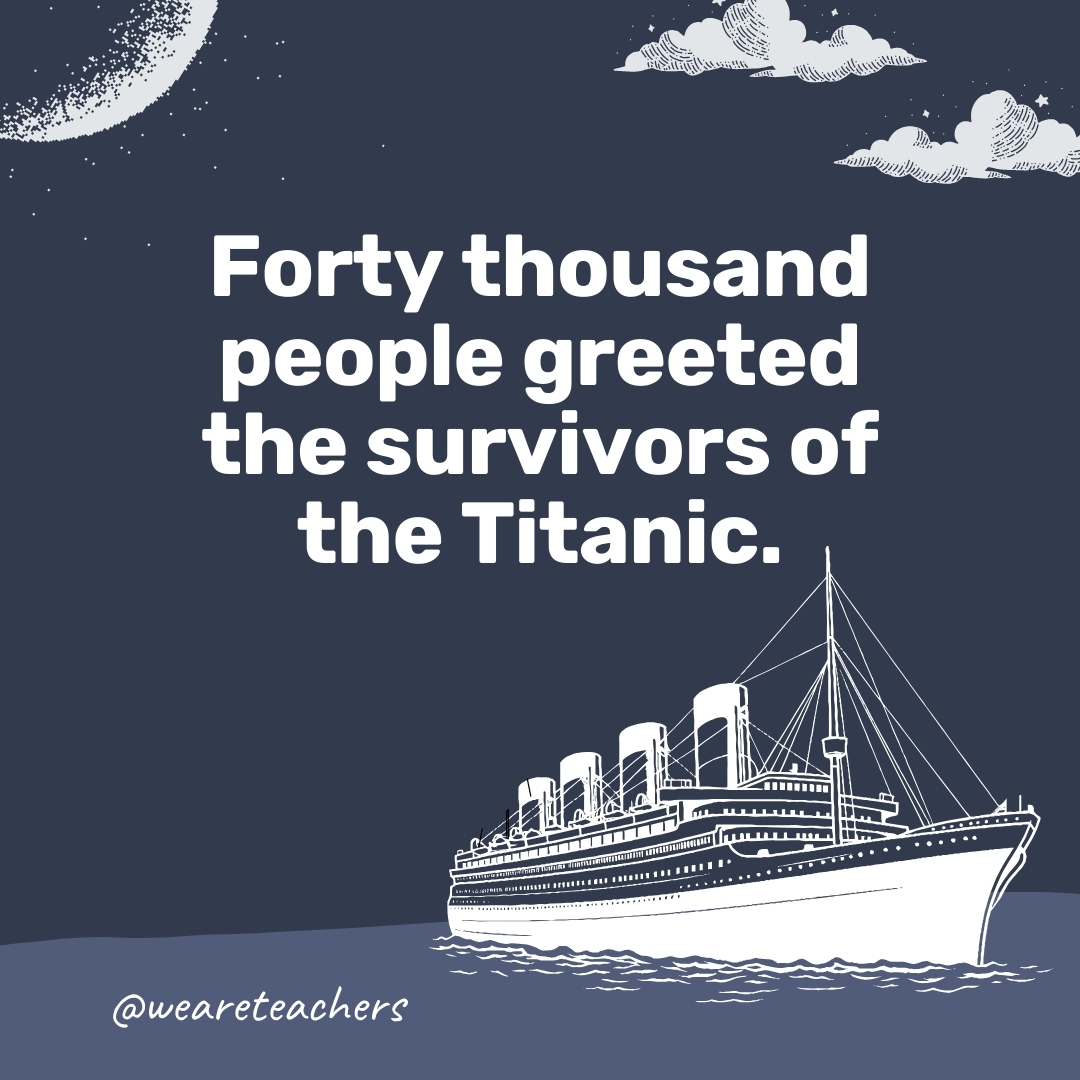
When they arrived at Pier 54 in New York on the RMS Carpathia, people were already aware and interested in this story.
61. About 5,500 Titanic artifacts have been saved from the wreck.
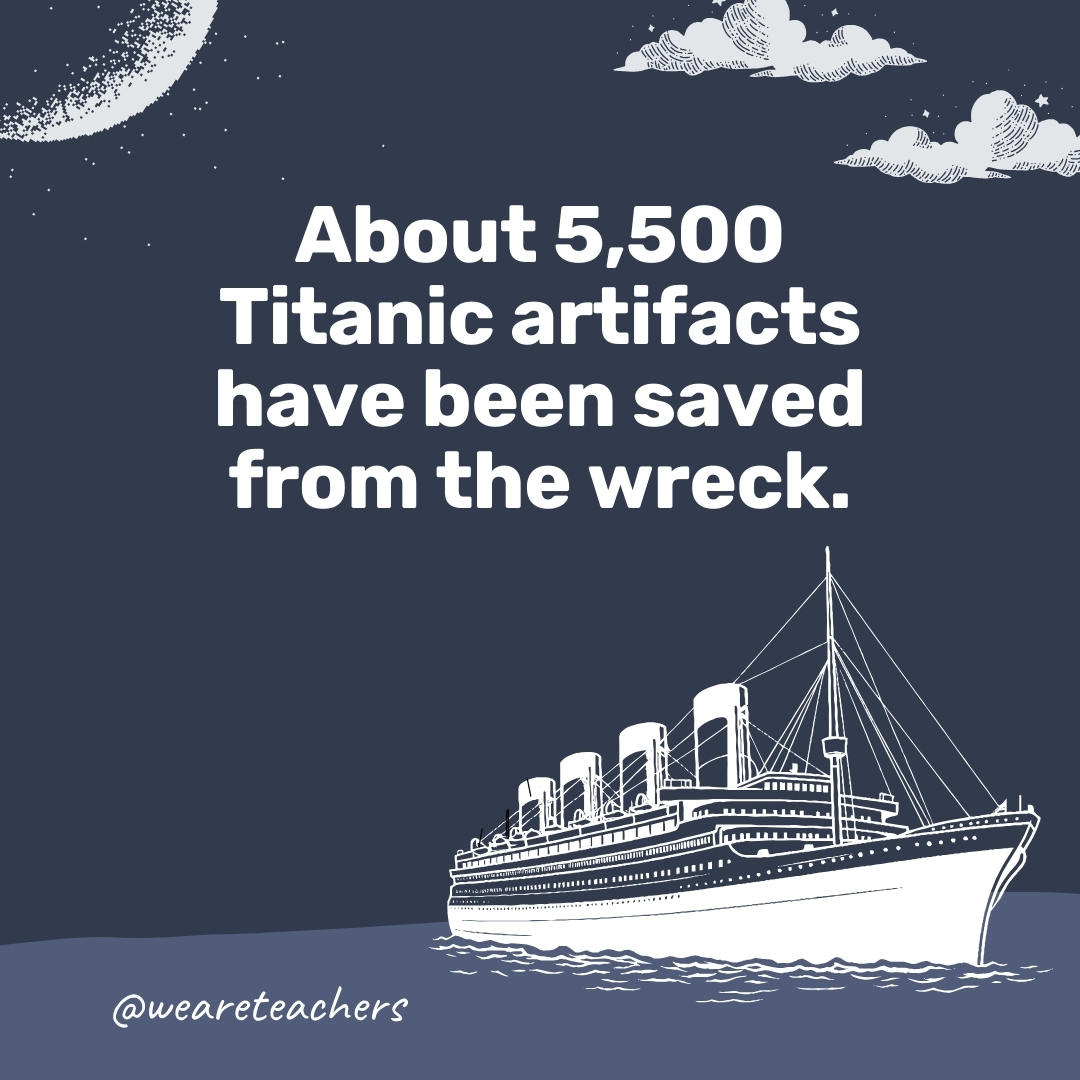
They’re displayed in museums around the world and 25 million people have viewed them.
62. The first film about the Titanic was released one month after it sank.
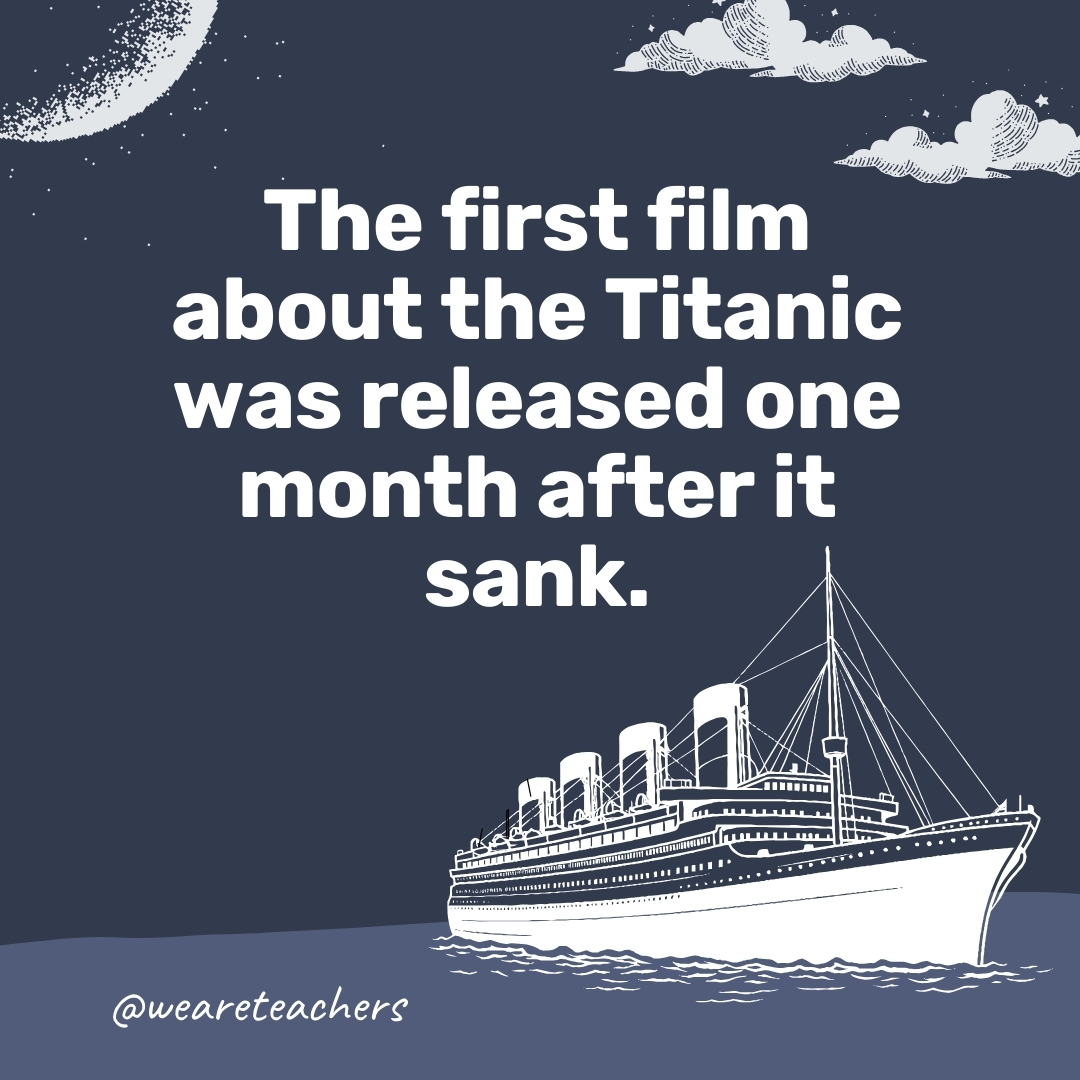
“Saved From the Titanic” was a silent movie and starred one of the survivors.
Titanic Facts for Today
63. the titanic wreck is a unesco heritage site..
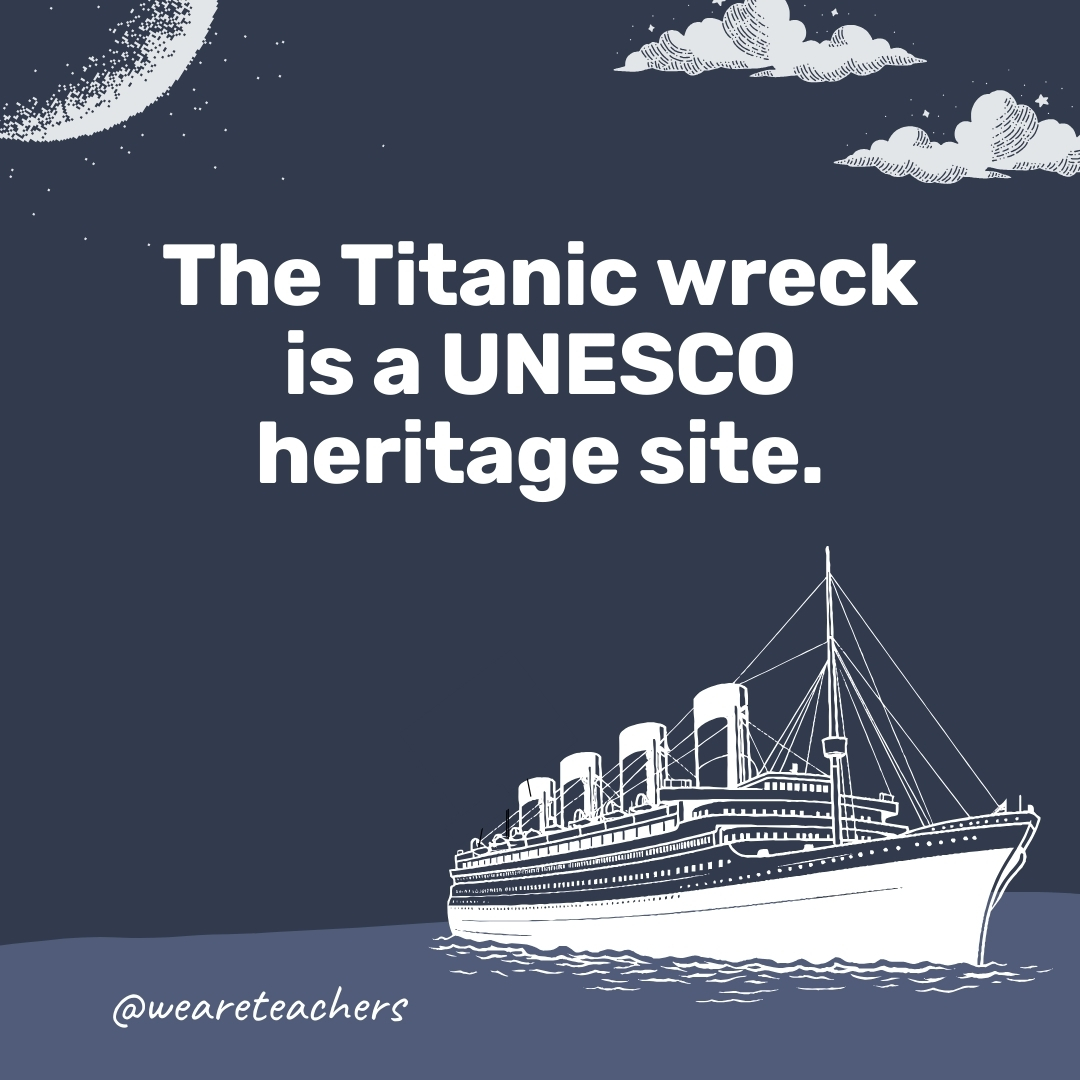
In 2012, the wreck became a cultural heritage site .
64. The Titanic wreck was not found until 1985.
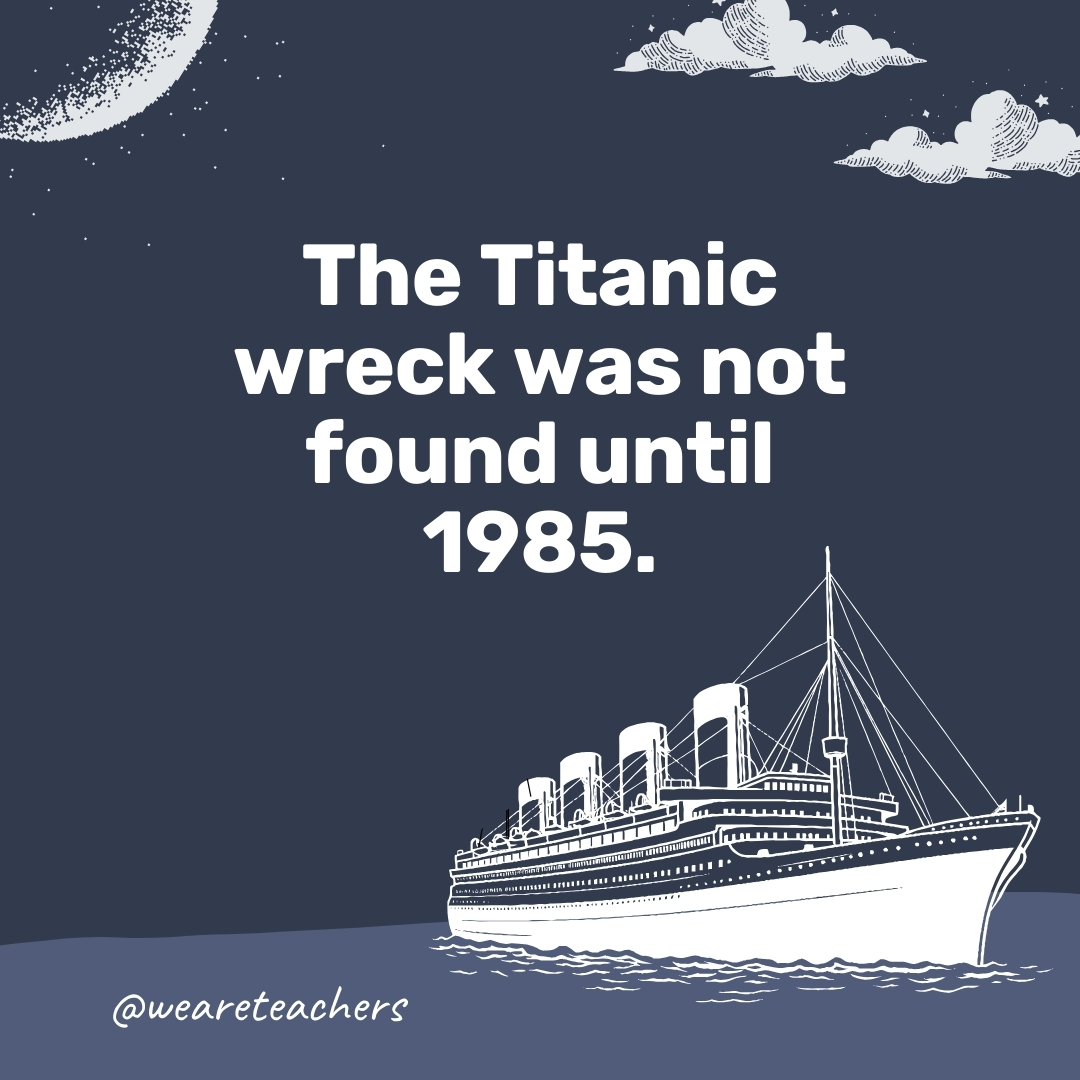
Dr. Robert Ballard found the wreck during an expedition in a robot submarine.
65. Scientists estimate that the Titanic wreck will be gone soon.
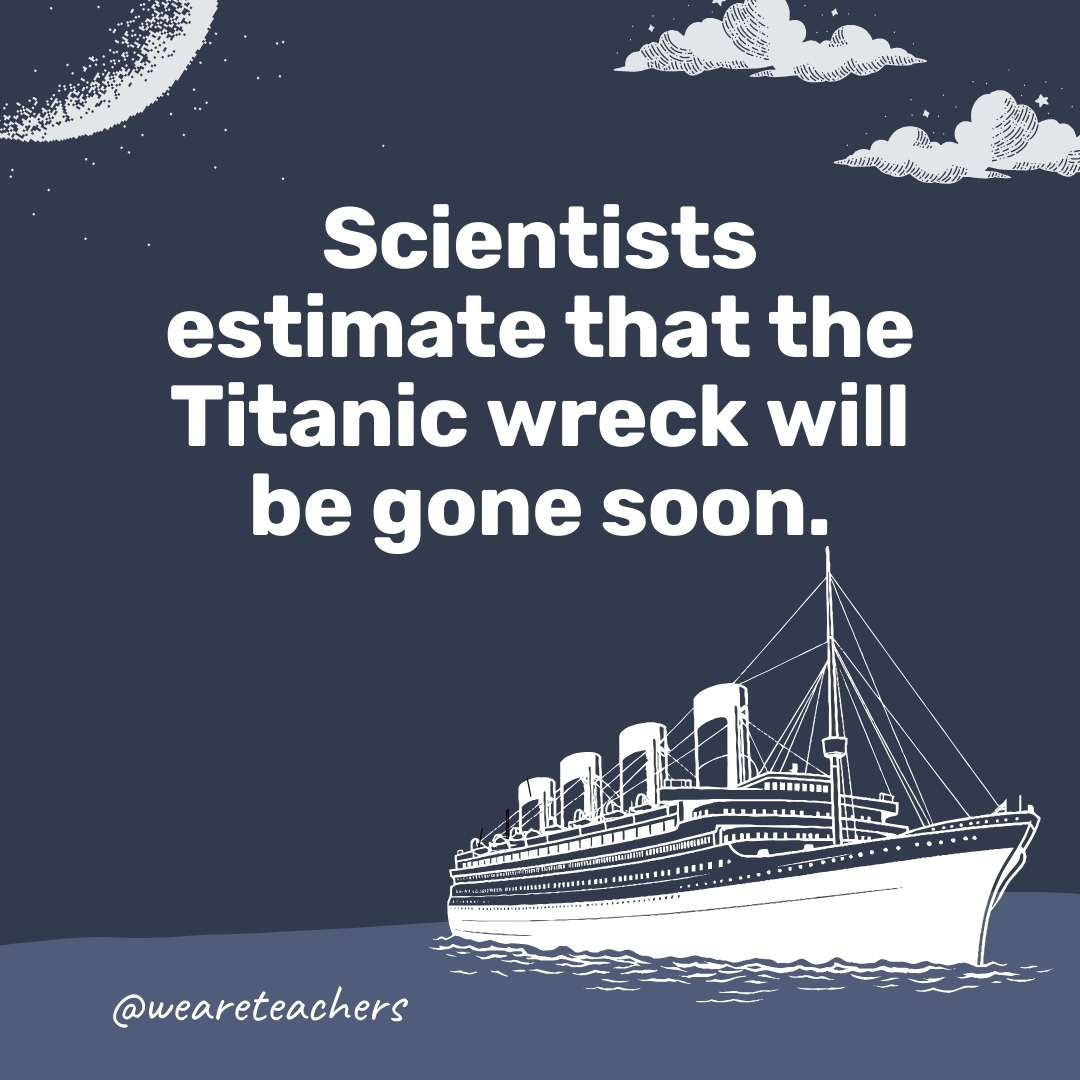
Scientists estimated that the wreck will fully deteriorate in the next 30 years due to iron-eating bacteria and general decay. It may be gone as soon as 2030.
66. The Titanic movie grossed $2 billion.

James Cameron’s film version, Titanic , was the most successful Titanic movie . It won 11 Oscars and made $2 billion.
67. You may be able to tour a life-size Titanic re-creation soon.
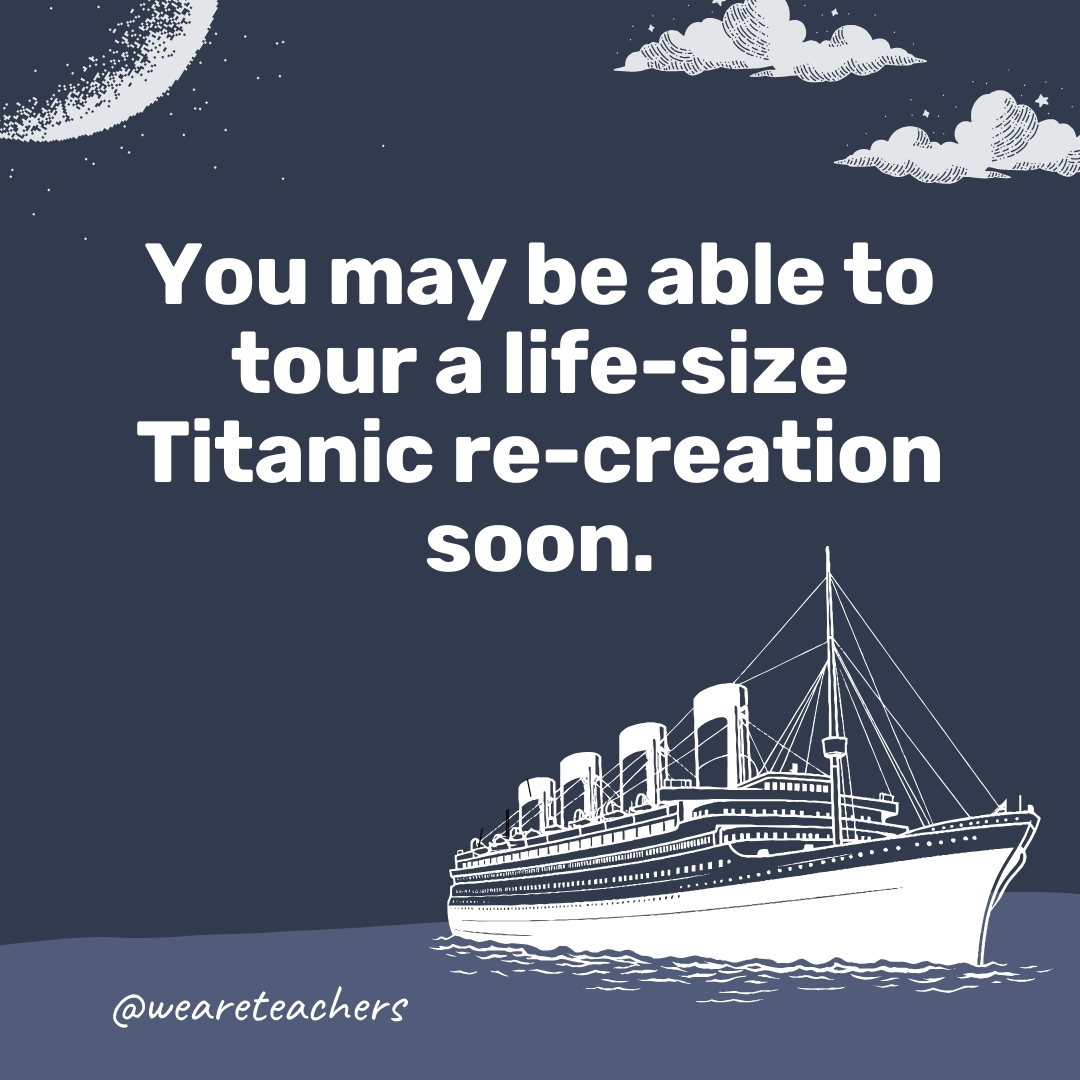
Another Titanic is being constructed in China. It will be an amusement park.
If you liked these Titanic facts, check out more history facts to amaze your students.
Want more articles like this be sure to subscribe to our newsletters .
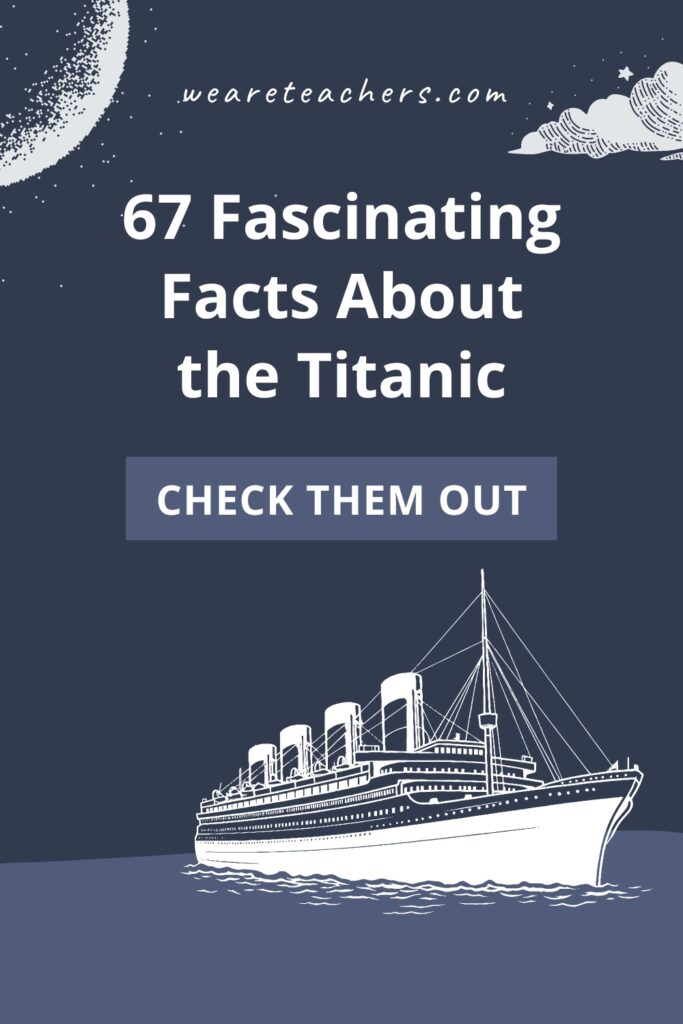
You Might Also Like

How This High School English Teacher Facilitated a Powerful Collaborative Lesson With Ukrainian Students
He created an experience his students won't forget. Continue Reading
Copyright © 2024. All rights reserved. 5335 Gate Parkway, Jacksonville, FL 32256
World History Edu
- Titanic Sinking
Titanic: History and Facts
by World History Edu · February 26, 2019
The RMS (Royal Mail Steamer) Titanic, popularly known as the Titanic, was a luxury British steamship that gained its legendary status as one of the greatest ships of its time. The story behind the sinking of the Titanic is really a heartbreaking one as it resulted in the loss of over 1,500 lives.
Here on this page, we shall focus on the history and most important facts of the Titanic. We shall also delve into some of the reasons that led to the tragic sinking of a ship once dubbed unsinkable.
Construction of the Titanic

The RMS Titanic was constructed at Belfast in Ireland.
The birth of the Titanic was a result of an intense competition that existed between the White Star Line and Cunard. These two Liverpool-based giant shipping line companies challenged each other for dominance in their industry.
Cunard’s two masterpiece ships – the Lusitania and the Mauretania, launched in 1907 – were one of the fastest ocean liners at that time.
As for White Star Line, their bid to be superior to their arch-rivals, Cunard, saw their chief executive officer J. Bruce Ismay meet with William J., the chairman of Harland and Wolff (a renowned shipbuilding company). The two discussed the construction of three Olympic-class huge ships.
The RMS Titanic was the second of the three huge ships to be constructed. The other two sister ships were HMHS Britannic and RMS Olympic .
The construction of the Titanic began in March 1909 at the shipyard of Harland and Wolf shipbuilding Company. The RMS Olympic, one of the other three big ships, was constructed almost the same time as the Titanic. However, the Olympic began quite earlier than the Titanic as its keel was started in December 1908. The construction works took place at Queen’s Island, Belfast in Ireland. Queen’s Island therefore became known as the Titanic Quarters.
It took about 15,000 workers from the Harland and Wolff Building Company to construct the Titanic. As you will expect, injuries and deaths were inevitable owing to the size of the ship and also some of the poor safety working conditions at that time. It is believed that about 28 workers were severely injured. All in all, 9 workers died during the building of the Titanic.
Launching of the Titanic
After about two years of hard work, the Titanic was partially completed. Its partly completed structure was launched on the 31st of May 1911, with over 100,000 people in attendance. After its launch, it took about 22 tons of soap to enable the Titanic’s passage into the River Lagan .
Between 1911 and 1912, after it had been introduced to the public, the gargantuan ship was installed with its engines, interior, and other superstructures. There were also other little changes that were made to the original structure design; however, they were not major alterations.
Famous facilities on the Titanic Ship
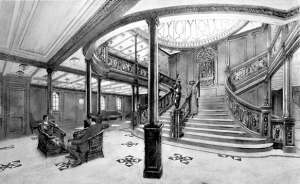
The Curvy Grand staircase of the luxurious HMS Titanic.
The Titanic was fitted with several luxurious facilities that were the highest of standards during its time. In fact, the brain behind the Titanic, particularly, its first-class compartments, were to give passengers a feeling similar to that of a floating high-class hotel. It is no surprise that its interior designs were inspired by the Ritz Hotel in London.
The Titanic’s opulence included: a first-class gymnasium, a 7ft deep swimming pool, a squash court, a Turkish bath, library, and a restaurant. The most outstanding facility on the Titanic was her Grand Staircase, which was constructed in a curvy first-class manner. The Grand staircase linked several of the ship’s decks together.
Sea testing of the Titanic
After the Titanic’s major structures were fully installed, engineers were ready to put the ship to rigorous testing. On 2nd April 1912, the ship was en route for her first testing. Trials began at around 6 o’clock in the morning, with quite a few representatives of different companies, 41 crew members, some firemen, and 78 stokers aboard the ship. After sea trials, which lasted approximately 12 hours, the Titanic was declared seaworthy.
Why the Titanic was considered unsinkable
Before its saddening fate, the luxurious ship liner was referred to as the unsinkable ship. Why? Because it was designed with many advanced safety features, which included waterproof compartments and doors. Its doors were also remote controlled, providing some level of comfort as well as extra safety.
Passengers and crew Members on Titanic’s maiden voyage
On her maiden voyage, the Titanic had aboard her crew members, British and other European emigrants who were seeking for greener pastures in the USA. Aboard the Titanic were also some of the world’s wealthiest people (predominantly accommodated on the liner’s luxurious first-class compartments).
Read More: 15 Famous Survivors from the Titanic Disaster
Crew members aboard the Titanic
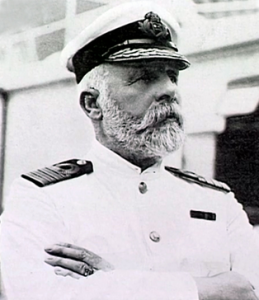
Edward John Smith was the Captain of the Titanic ship.
The Titanic had 885 crew members, with the majority of them being hired on a casual basis purposely for the trip. Captain Edward John Smith was appointed as Titanic’s captain. He was a senior captain of the White Star Line and previously worked as a captain on the RMS Olympic liner.
The crew aboard the ship was grouped into three major sections: the victualling section had the majority, with 494 crew members, the engine section had 325 members, whereas the deck had only 66 crew members.
Out of the 885 crew members, only 23 of them were female. They worked mainly as stewardesses, attending to passengers on the ship. The rest of the crew were male and worked in a variety of positions, such as laundrymen, cleaners, fishmongers, chefs, bakers, stewards, dishwashers, bed-makers, gymnasium instructors, and butchers.
Passengers aboard the Titanic
The Titanic was designed to accommodate a total number of 2453 passengers on board- 1006 3rd-class passengers; 614 passengers on the 2nd-class compartment; and 833 1st-class passengers. However, due to a national coal strike in the UK (which ended a few days prior to Titanic’s voyage), the gigantic ship found itself acutely under capacity.
As a result, lots of potential passengers postponed their traveling plans until the strike was over. The ship carried only a total of 1317 passengers on board, with 709 third-class passengers, 284 second-class passengers, and 324 first-class passengers.
Did you know…?
Out of a total of 1317 passengers onboard the ship, 869 of them were male whereas 447 were female. 107 of the 1317 passengers were children.
Prominent people on the Titanic
Among the 1314 passengers on the ship’s first voyage were high-profile names, including:
- John Jacob Astor IV along with his spouse Madeleine Force Astor. Jacob was famous for being the wealthiest man on the Titanic. He was also renowned for marrying his wife, Madeline who was only 18 years young at the time of their wedding. Jacob was 29 years older than his wife. Jacob did not survive the disaster, but his wife Madeleine did. Madeline would later die in 1940.
- Macy’s proprietor Isidor Straus and his wife Ida. The couple died on the night of the Titanic’s ill-fated blow.
- Edward Austine Kent, a renowned architect, who lost his life in the disaster.
- Margret “Molly” Brown played an instrumental role in ensuring calm during the evacuation of passengers. After the disaster, she was nicknamed “The Unsinkable Molly Brown”. She survived but passed on in 1932.
- Tennis player Karl Behr. He survived the tragedy.
- Dorothy Gibson who was a film actress, singer, and model. She would go on to star in the first-ever movie about the Titanic’s misfortune but died in 1946.
- J Bruce Ismay was the executive director of White Star Line. He was one of the fortunate persons to survive the tragedy.
- Thomas Andrews, the man who designed the Titanic, which went ahead to claim his life. He died in 1912 on the ship he designed.
- Benjamin Guggenheim together with his mistress Leontine Aubart (she was a French singer). Benjamin was the heir to the Guggenheim mining wealth. He died in 1912 in the tragedy. His famous quote “We’re dressed in our best and prepared to go down like gentlemen” made him even more famous after the adversity.
- Captain Edward John Smith, the seasoned White Star Line ship Captain. He was also known as “The Millionaire’s Captain” and popular for commanding the most luxurious ocean liners of the White Star Line.
- Lady Duff Gordon was a renowned British fashion designer who became the first designer from Britain to achieve international recognition.
- Major Archibald Butt was an astonishing military officer and presidential aide to President Theodore Roosevelt in the year 1908 and President William Howard Taft (in 1909) of the USA. He perished on the night of the disaster.
- William Thomas Stead, a seasoned writer, and journalist. Stead was famous for writing fiction stories. He did not survive the Titanic disaster.
- John B. Thayer was a famous businessman and executive of the Pennsylvania Railroad. He boarded the ship in Cherbourg, France, but could not survive the calamity of 1912.
- Thomas Byles, a priest of the Catholic church who was ordained in 1902. He boarded the Titanic en route to America to officiate his younger sibling’s wedding. He prayed and blessed passengers during the final hours of the sinking ship. Father Byles did not survive the incident.
- Washington Augustus Roebling II . He was a young passionate engineer who designed race cars. His uncle, whom he was named after, was one of the constructors of Brooklyn Bridge. On his return from a tour in Europe, Augustus met his untimely death that unfortunate night the ship sank.
- Charles Melville Hays; a wealthy and extremely successful businessman. He was The Grand Trunk Pacific Railway President and was on board the ship with his wife and daughter. Though he did not survive the catastrophe, he ensured that his wife and daughter were safe that night.
J.P Morgan who was the financier and owner of the International Mercantile Marine Co., which was the parent Company of White Star Line. Morgan was initially scheduled to be aboard the ship. However, his trip was canceled at the last minute due to some delayed business matters.
Read More: Tragic Facts about the Sinking of the Titanic
When did the Titanic set sail?
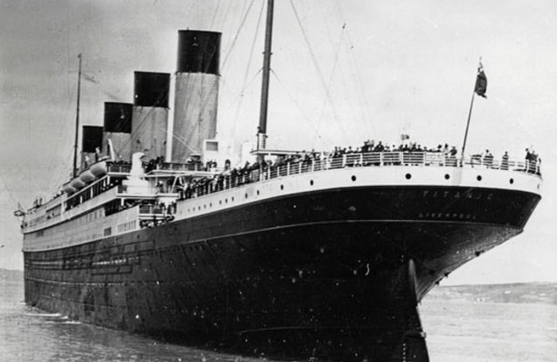
The Titanic’s maiden voyage was from Southampton to New York City.
This legendary ocean liner’s first voyage was on Wednesday, the 10th of April 1912. From Southampton, in England, it headed off to New York City in the USA. Majority of the passengers arrived at around 9:30 in the morning. The third-class ticket holders were the first passengers to board the ship. This was due to their relatively huge numbers compared to the other classes of passengers. First and second class passengers followed up, with Captain Smith personally greeting the first-class passengers upon their arrival aboard.
A total of 920 passengers boarded the ship at Southampton and they comprised 494 passengers on a third-class ticket, 247 passengers on a second-class ticket, and 179 passengers on a first-class ticket.
There were two notable Incidents that occurred on the Titanic before it finally departed the Southampton Dock. The first incident was the discovery of coal fire on one of her coal bunkers. However, the fire was quickly brought under control, though it continued to burn for several more days. Well, even though this was not a strange happening on many steamships, some experts believe that this incident might have led to the Titanic’s unfortunate fate.
Just a few minutes after leaving the Southampton dock en route to her destination in New York; the Titanic almost collided with the relatively smaller S.S City of New York, an American ocean liner. Many concluding that it was the worst possible type of omen that could befall a ship on her maiden voyage.
The Titanic sailed from Southampton to Cherbourg in France, where it picked up more passengers. From Cherbourg, it continued on its way, stopping at Queenstown in Ireland to pick up additional passengers.
The Titanic collides with an Iceberg
Titanic’s voyage continued despite the initial happenings after it departed the Southampton dock. There were also some initial cautions from other ships (precisely, the SS Californian) to the Titanic, informing its officials of floating ice around the area close to Newfoundland. However, the giant ship continued to sail, with Jack Phillips, the senior wireless operator of the Titanic ignoring the warning calls.
On the 14th of April, at around 11:40 in the night, Frederick Fleet, a lookout on the ship spotted an iceberg ahead of the ship and raised alarms. Well, the distance between the ship and the iceberg was too close such that it was impossible for any ship, especially one as big as the Titanic to avoid a collision. The engines were stopped in order to slow down the ship and steer it away from the danger ahead. Any attempt to avoid or mitigate the impact of the collision was rather too late – the ship’s starboard side, below the ship’s waterline, collided with the iceberg.
Well, prior to the Titanic’s sinking, it was believed that ice caused little threat to big ships. The Titanic was one of the biggest in history (at that time) and therefore did not need to be alarmed.
Water Gushes into the Titanic-Disaster Happens
The Titanic’s sudden end had begun. Sensing that their ship had avoided a severe collision with the iceberg, onlookers seemed to be relieved at that moment. However, they were oblivious to the fact that even though the iceberg did not puncture the hull of the ship, it had caused the hulls’ seems to crumble and detach.
This resulted in water flooding five of the ship’s watertight compartments. Doom set in at this moment because the Titanic could not survive four of its compartments being flooded. With water gushing out of one compartment to another, the giant ship began to sink gradually into the Atlantic.
Evacuation of Passengers

The Titanic’s lifeboats were insufficient to successfully convey all the passengers and crew aboard to safety.
Knowing that the situation was heading for the worst, the ship’s Captain Smith ordered for the loading of passengers on lifeboats. He estimated that it would take around 1 hour 30 minutes for the ship to finally sink (even though it eventually took about 3 hours).
The crew and passengers on board were really not prepared for such a disaster, especially considering the fact that they were onboard one of the biggest ships on the planet at the time.
There were several distress calls made but to no avail. The reason was that none of the responding ships were close enough to come to the help of the sinking Titanic.
However, there were some claims that the SS Californian (which at the time of the incident was the closest ship to the Titanic) had ignored the ship’s distress calls as well as the Titanic’s signal rockets.
Titanic’s Lifeboats
Compounding the Titanic’s problem was the fact that the Titanic had insufficient lifeboats to convey the majority of the passengers and crew members to safety. The ship had on board a total of only 20 (14 standard wooden boats, 4 canvas made collapsible boats, and 2 emergency cutters) lifeboats, which were only enough to carry up to 1178 persons.
During the evacuation process, which was done in a rather chaotic manner, some of the lifeboats were not fully loaded. The first lifeboat had the capacity to carry 65 persons but was only loaded with 28 people. This trend continued, with roughly 700 passengers and crew members seeking shelter on all available lifeboats, even though the total lifeboats on board had the capacity to carry at least half the number of persons on the ship.
In such occurrences, the sea laws required that women and children were the first to board the lifeboats. Men were only permitted to board lifeboats when there were no available women and children. This was reflected in the proportion number of lives lost, with a higher proportion of women and children being rescued.
The chaos intensified as the water level in the ship kept on rising, leaving it in a very dire state with little lifeboats left. This led to several heartbreaking occurrences, as well as some acts of bravery. Lots of families and loved ones were separated, with some men seeing off their wives and children as the situation became more and more helpless. Others gave up their seats on the lifeboat in order to allow the more vulnerable individuals to flee, whereas others opted to remain with their partners on the sinking ship.
The Titanic’s Final Minutes
The chief designer of the Titanic, Thomas Andrew bid his pregnant wife, Madeleine farewell as she departed for safety on one of few lifeboats left. He was last seen gazing at one of the paintings on the wall of the first-class smoking room.
Isidor Straus and his wife opted to remain on the sinking ship even though they were offered an opportunity to flee on one of the lifeboats.
During the final minutes of the sinking Titanic, Benjamin Guggenheim’s legendary statement- “We are dressed in our best and are prepared to go down like gentlemen” would go down as one of the most touching declarations made on the ship.
The Titanic Sinks
On April 15th around 2:20 at dawn, the Titanic, breaking into two halves, finally plunged and was no longer visible atop the surface of the ocean. The passengers and crew who still remained on the ship were all immersed into the icy ocean. With temperatures around -2 degrees Celsius, it is highly unlikely that many will survive such conditions. It is believed that the majority of the victims died from cardiac arrest or as a result of body reactions to the extremely cold sea. Only 13 of the victims were eventually rescued from the freezing sea onto the lifeboats. The Titanic’s chef was one of them.
The same day, at around 4:00 at dawn, the RMS Carpathia arrived at the site of the incident after responding to the Titanic’s earlier call for distress. A total of around 710 passengers and crew members were rescued onto the Carpathia and conveyed to New York.
Aftermath of the Sinking of the Titanic
After departing the scene of the incident, it took the Carpathia about 3 days to finally arrive at the New York’s Pier 54 with its passengers and the rescued victims from the Titanic. Upon hearing the news of the tragic incident, hundreds of thousands of people gathered at the New York’s Pier 54, awaiting the Carpathia’s arrival. The Carpathia finally arrived on the 18th of April and docked at around 9: 30 in the night.
Several inquiries and investigations were made into the unfortunate disaster that lead to the loss of thousands of lives and property. Thorough investigations were made, with several questions thrown at the surviving crew members and even at the initial construction of the ship. Maritime experts and other disaster experts were also consulted for their opinions. Surviving passengers and the Captain of the Carpathia also gave their own versions of the incident.
Movies and Songs about the Titanic Disaster
After the unfortunate disaster, which resulted in the loss of over 1500 lives, there have so far been multiple movies and songs about the ship’s tragedy. The first film that was released on the Titanic was titled – Saved from the Titanic . It featured Dorothy Gibson, one of the few survivors of the disaster. It was released barely 30 days after the incident.
A British film titled A Night to Remember , which was released in 1958, was also another very popular movie that portrays a very accurate episode of the Titanic’s tragedy.
So far, the most successful episode of the Titanic’s incident is the movie titled – Titanic . Released in 1997, the Titanic has won several Oscars, including the award for Best Picture. The film’s director James Cameron won an award for Best Director at the 70th Academy Awards.
One of the best songs released about the Titanic is “My Heart Will Go On”. It was recorded by Celine Dion and it was the theme song for the Titanic (1997) movie.
Discovery of the Titanic’s Wreckage
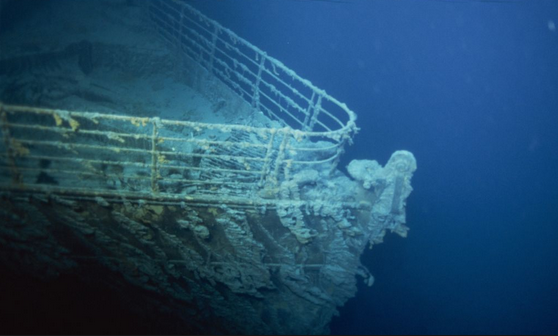
The wreckage of the Titanic was discovered in 1985.
The wreck of the Titanic ship was unearthed by explorers on the 1st of September 1985, which is about 74 years since it sank. The wreck lies over 12,000 ft below the surface of the Atlantic Ocean. The leader of the mission was Robert Ballard, who discovered that the Titanic actually ripped into two halves before making contact with the ocean floor of the Atlantic. The two halves of the ship lay approximately 0.6 km apart around the coast of Newfoundland.
A number of artifacts have been retrieved from the seabed where the Titanic’s wreck lays. Several of these artifacts have been on display in exhibitions in the USA and other touring exhibitions around the globe.
More Facts about the Titanic
- Route : Southampton, UK to New York City, USA.
- Port of Registration : Liverpool, United Kingdom.
- Length : 882ft, 9” (269.1m)
- Height : 175ft (53.3m)
- Weight : 52,310 tons
- Depth : 64ft, 6” (19.7m)
- Owner : White Star Line.
- Constructors : Harland and Wolff.
- Number of Decks : In addition to the officers’ quarters, located at the top, the Titanic had 10 decks (8 of them being passenger decks).
- Place of Construction : Belfast, Ireland.
- The Titanic was the biggest artificially constructed moving object during its era.
- The ocean liner used about 600 tons of coal each day, with up to 100 tons of ash expelled into the sea every day.
- A great number of the passengers aboard the ship were third-class passengers.
- The richest man on the Titanic was John Jacob Astor IV, an American millionaire. His net worth was estimated to be in the region of 85 million Dollars at that time.
- Millvina Dean was the last known survivor of the Titanic catastrophe. She was only two months old when the ship sank. She passed away on 31st May 2009.
- The iceberg that led to the plunging of the Titanic was about 100 feet in height. It was believed to have come from a glacier in Greenland.
- The Titanic’s 16-ton center anchor was the largest ever constructed by hand during its time.
- Newfoundland was the nearest destination to the Titanic when it sank. The ship was 400 miles away from Newfoundland.
- The interior of the ship was inspired by a London based hotel – The Ritz, located in Piccadilly.
- It cost about 1.5 million Pounds Sterling to construct the Titanic.
- The Titanic’s wreck was discovered in 1985.
- There were no gold, diamonds or exotic minerals aboard the ship.
Did the Titanic Carry Only Passengers?
The Titanic was mainly a passenger ship. However, she also carried a significant amount of cargo during her first voyage. This ocean liner was contracted to carry and deliver mail and other valuable items for the Royal Mail and also the United States Post Office Department.
Most Valuable Items Lost in Titanic’s disaster
During the unfortunate demise of the Titanic, one of the most valuable items that got missing was a painting by French artist, Mary-Joseph Blondel, titled La Circassienne au Bain. It belonged to Mauritz Hakan Bjornstrom-Stefansson, who was a first-class passenger on the ship. He survived though, and after the incident, it is believed that he sued for a $ 100,000 compensation for the loss of an artwork that belonged to him.
Another valuable item that got lost in the shipwreck was a copy of the Rubaiyat of Omar Khayyan . It was valued at merely £405 at that time.
Well, there you have it, every important fact regarding the history of the Titanic – one of the world’s greatest ships and maritime disasters of all time. The Titanic will eternally live in the memories of many for its fascinating and tragic story. One that went from being an “Unsinkable ship” to being shattered on her first journey across the Atlantic Ocean, sending distress and sorrow all over the world.
FACT CHECK : At World History Edu, we strive for utmost accuracy and objectivity. But if you come across something that doesn’t look right, don’t hesitate to leave a comment below.
Tags: History and facts about the Titanic RMS Titanic Titanic Disaster Titanic Survivors Titanic Victims
You may also like...

15 Famous Survivors of the Titanic Disaster
August 9, 2019

10 Most Famous Victims of the Titanic Disaster
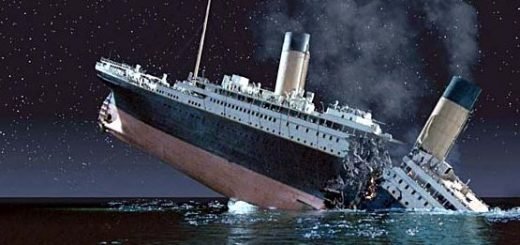
Tragic Facts about the Sinking of the Titanic
August 11, 2019
- Next story 10 Most Famous Pharaohs of Egypt
- Popular Posts
- Recent Posts

How did the Germans react to the terms of the Versailles Treaty?

Major Aspects of Pegasus in Greek Mythology

History of Icelandic Parliament and why it is considered the longest running in the world

How did the Garuda become Thailand’s national and royal emblem?

History of Thailand and how it avoided European colonization

Greatest African Leaders of all Time

Queen Elizabeth II: 10 Major Achievements

Donald Trump’s Educational Background

Donald Trump: 10 Most Significant Achievements

8 Most Important Achievements of John F. Kennedy

Odin in Norse Mythology: Origin Story, Meaning and Symbols

Ragnar Lothbrok – History, Facts & Legendary Achievements

9 Great Achievements of Queen Victoria

12 Most Influential Presidents of the United States

Most Ruthless African Dictators of All Time

Kwame Nkrumah: History, Major Facts & 10 Memorable Achievements

Greek God Hermes: Myths, Powers and Early Portrayals

8 Major Achievements of Rosa Parks

10 Most Famous Pharaohs of Egypt

How did Captain James Cook die?

Kamala Harris: 10 Major Achievements

Poseidon: Myths and Facts about the Greek God of the Sea

How and when was Morse Code Invented?

Nile River: Location, Importance & Major Facts

The Exact Relationship between Elizabeth II and Elizabeth I
- Adolf Hitler Alexander the Great American Civil War Ancient Egyptian gods Ancient Egyptian religion Apollo Athena Athens Black history Carthage China Civil Rights Movement Cold War Constantine the Great Constantinople Egypt England France Germany Ghana Hera Horus India Isis John Adams Julius Caesar Loki Military Generals Military History Nobel Peace Prize Odin Osiris Pan-Africanism Queen Elizabeth I Ra Ragnarök Religion Set (Seth) Soviet Union Thor Timeline Women’s History World War I World War II Zeus

Titanic Facts
The history in numbers.
At 11.40pm on the night of 14 April 1912, on her maiden voyage from Southampton to New York, the RMS Titanic struck the iceberg that would ultimately lead to the sinking of the ship less than 3 hours later.
At around 2.20am on the morning of 15 April, the Titanic disappeared beneath the surface of the Atlantic Ocean, a disaster that resulted in the loss of more than 1,500 lives, almost two-thirds of the people on board.
Titanic Facts aims to tell the story in a comprehensive and clear way, and to help keep alive the memory of this great and tragic ship, and of her passengers and crew, survivors and victims.

Some Titanic Facts To Discover
There are more than 1,000 fascinating facts and figures to explore within Titanic Facts. Here are a few to get you started, with links straight to the section they are contained in.
269.1 metres – the length of the Titanic (882 feet 9 inches).
825 tons – the amount of coal used per day.
10,000 – the approximate number of lamp bulbs used on the ship.
+ Read more about the Titanic Ship
Building The Titanic
$7,500,000 – the cost of building the RMS Titanic.
2 – the number of workers killed during the build.
20 – horses needed to transport the main anchor.
+ Read more about building The Titanic
Food On The Titanic
14,000 – the gallons of drinking water used every 24 hours.
40,000 – the number of fresh eggs in the ship’s provisions.
1,000 – the number of bottles of wine taken aboard.
+ Read more about food on the Titanic
The Lifeboats
64 – the number of lifeboats the Titanic was equipped to carry.
20 – the number of lifeboats she was actually carrying.
28 – the number of people on board the first lifeboat, which had a capacity of 65 people.
+ Read more about the Titanic lifeboats
The Passengers
3,547 – the maximum number of people the Titanic could carry.
2,223 – the number of people aboard (passengers and crew ).
13 – the number of honeymooning couples on the voyage.
+ Read more about the Titanic passengers
The Sinking
6 – the number of warnings of icebergs the Titanic received before the collision.
160 – the minutes it took the Titanic to sink after hitting the iceberg (2 hours and 40 minutes).
-2°C – the temperature of the sea water in the area where Titanic sank.
+ Read more about the sinking of the Titanic
The Survivors
31.6% – the total percentage of passengers and crew who survived.
53.4% – the percentage who could have survived, given the number of spaces available on the Titanic lifeboats.
2 – the number of dogs who survived (lapdogs taken aboard lifeboats by their owners).
+ Read more about the Titanic survivors
12,600 feet – the depth at which the wreck of the Titanic lays.
18 metres – the distance that the bow penetrated into the sea bed.
6,000 – the approximate number of artefacts that have been recovered from the wreck site.
+ Read more about the Titanic wreck
About The Site
There is a great deal of in-depth coverage of the Titanic story on the web, much of it excellent, some of it fanciful.
Titanic Facts has been designed to provide a quick and simple snapshot of some of the key facts and figures about the life and loss of this great ship. I hope you find something of value and interest here.
Important Note
All of the facts and figures displayed on Titanic Facts are correct to the best of my knowledge. However myths and misinformation about the Titanic abound, whilst some facts about the disaster are debated to this day.
Therefore, do please be aware that the accuracy of the information presented cannot be guaranteed. We recommend that you use this website as a starting point for your research. In using any of the information or images from this website you do so entirely at your discretion.
Accreditation
If you use any of the material that I have written for Titanic Facts on another website do please acknowledge this site. Please let me know, too! I’d love to see how you’ve adapted the material. Contact address below.
Error Corrections?
If you spot an entry that you believe requires correction do please let me know; I do not wish to perpetuate inaccuracies. You can contact me at ‘hello [at] history in numbers /dot/ com’.
20 Surprising Facts About the Titanic
Full lifeboats and a quicker ship could have saved lives
- Early 20th Century
- People & Events
- Fads & Fashions
- American History
- African American History
- African History
- Ancient History and Culture
- Asian History
- European History
- Latin American History
- Medieval & Renaissance History
- Military History
- Women's History
- B.A., History, University of California at Davis
You may already know that the Titanic hit an iceberg at 11:40 p.m. on the night of April 14, 1912, and that it sank two hours and forty minutes later. Did you know that there were only two bathtubs for third class passengers or that the crew had only seconds to react to the iceberg? These are just a couple of the interesting facts about the Titanic that we're going to explore.
The Titanic Was Gigantic
The Titanic was supposed to be an unsinkable boat and it was built to monumental scale. In total, it was 882.5 feet long, 92.5 feet wide, and 175 feet high. It would displace 66,000 tons of water and it was the largest ship built up to that point in time.
The Queen Mary cruise ship was built in 1934 and surpassed the Titanic's length by 136 feet, making it 1,019 feet long. In comparison, The Oasis of the Seas, a luxury liner built in 2010, has a total length of 1,187 feet. That is nearly a football field longer than the Titanic.
Luxuries for the first class passengers included a swimming pool, a Turkish bath, a squash court, and a dog kennel. The Ritz Restaurant on board was inspired by the famous Ritz in London's Picadilly Circus. The grand staircase—there were several staircases—descended seven of the ship's ten decks, and featured oak paneling and bronze cherubs. A replica of the staircase can be seen at the Titanic museum in Branson, Missouri.
The Last Dinner
The last dinner served to first class passengers at the Ritz Restaurant was a feast with ten sumptuous courses, featuring oysters, caviar, lobster, quail, salmon, roast duckling, and lamb. On board the Titanic were 20,000 bottles of beer, 1,500 bottles of wine, and 8,000 cigars, all for the first class passengers.
Expensive to Operate
The Titanic burned about 600 tons of coal each day to keep it powered. A team of 176 men kept the fires burning, and it is estimated that over 100 tons of ash were injected into the Atlantic each day the Titanic operated.
The Canceled Lifeboat Drill
Originally, a lifeboat drill was scheduled to take place on board the Titanic on the very day that the ship hit the iceberg. However, for an unknown reason, Captain Smith canceled the drill. Many people believe that had the drill taken place, more lives could have been saved.
Only Seconds to React
From the time the lookouts sounded the alert, the officers on the bridge had only 37 seconds to react before the Titanic hit the iceberg. In that time, First Officer Murdoch ordered, "hard a-starboard" (which turned the ship to port—left). He also ordered the engine room to put the engines in reverse. The Titanic did bank left, but it wasn't quite fast or far enough.
Lifeboats Were Not Full
Not only were there not enough lifeboats to save all 2,200 people on board, most of the lifeboats that were launched were not filled to capacity. If they had been, 1,178 people might have been rescued, far more than the 705 who did survive.
For instance, the first lifeboat to launch—Lifeboat 7 from the starboard side—only carried 24 people, despite having a capacity of 65 (two additional people later transferred onto it from Lifeboat 5). However, it was Lifeboat 1 that carried the fewest people. It had only seven crew and five passengers (a total of 12 people) despite having a capacity for 40.
Another Boat Was Closer for Rescue
When the Titanic began sending out distress signals, the Californian, rather than the Carpathia, was the closest ship. However, the Californian did not respond until it was much too late to help.
At 12:45 a.m. on April 15, 1912, crew members on the Californian saw mysterious lights in the sky. These were the distress flares sent up from the Titanic and they immediately woke up their captain to tell him. Unfortunately, the captain issued no orders.
Since the ship's wireless operator had already gone to bed as well, the Californian was unaware of any distress signals from the Titanic until the morning. By then, the Carpathia had already picked up all of the survivors. Many people believe that if the Californian had responded to the Titanic's pleas for help, many more lives could have been saved.
Two Dogs Rescued
The order was for "women and children first" when it came to the lifeboats. When you factor in that there were not enough lifeboats for everyone on board the Titanic, it is a bit surprising that two dogs made it into the lifeboats. Of the nine dogs on board the Titanic, the two that were rescued were a Pomeranian and a Pekinese.
Rich and Famous
Among the famous people who died on the Titanic, the wealthiest by far was John Jacob Astor IV , who was worth over US$90 million, over two billion in today's currency. Others included the mining heir, Benjamin Guggenheim, and engineer Thomas Andrews, who oversaw the construction of the Titanic. The co-owner of Macy's department store, Isidor Straus and his wife Ida, also died on board the ship.
Corpses Recovered
On April 17, 1912, the day before survivors of the Titanic disaster reached New York, the CS Mackay-Bennett, a commercial cable repair ship, was sent off from Halifax, Nova Scotia to search for bodies. On board, the Mackay-Bennett were embalming supplies, 40 embalmers, tons of ice, and 100 coffins.
Although the Mackay-Bennett found 306 bodies, 116 of them were too badly damaged to take all the way back to shore. Attempts were made to identify each body found. Additional ships were also sent out to look for bodies. In all, 328 bodies were found, but 119 of these were so severely degraded that they were buried at sea.
No-one Knows All Who Died on the Titanic
Although the official number of the dead on the Titanic was 1,503 (of the 2,208 on board, there were 705 survivors), over a hundred unidentified bodies were buried in Fairview Lawn cemetery in Halifax, Nova Scotia. Many people traveled under false names, and from so many different places, it proved impossible to identify even the recovered bodies. Sidney Leslie Goodwin, a 19-month-old boy buried under the marker "unknown child" was identified in 2008, after extensive DNA tests and a worldwide genealogical search.
Dance Band on the Titanic
There was an eight-piece band on the Titanic, led by violinist Wallace Hartley, who had to learn 350 songs in the songbook handed out to first class passengers. As the Titanic was sinking, they sat on the deck and played music, and all of them went down with the ship. Survivors reported that the last piece they played was either "Nearer My God to Thee" or a waltz named "Autumn."
The Fourth Funnel Wasn't Real
In what is now an iconic image, the side view of the Titanic clearly shows four cream and black funnels. While three of them released steam from the boilers, the fourth was just for show. The designers thought the ship would look more impressive with four funnels rather than three.
Only Two Bathtubs in Third Class
While the promenade suites in first class had private bathrooms, most passengers on the Titanic had to share bathrooms. Third class had it very rough with only two bathtubs for more than 700 passengers.
The Titanic's Newspaper
The Titanic seemed to have everything on board, including its own newspaper. The "Atlantic Daily Bulletin" was printed every day on board the Titanic. Each edition included news, advertisements, stock prices , horse-racing results, society gossip, and the day's menu.
A Royal Mail Ship
The R.M.S. Titanic was a Royal Mail Ship. This designation meant the Titanic was officially responsible for delivering mail for the British postal service.
On board the Titanic was a Sea Post Office with five mail clerks (two British and three American) who were responsible for the 3,423 sacks of mail (seven million individual pieces). Interestingly, although no mail has yet been recovered from the wreck of the Titanic, if it were, the U.S. Postal Service would still try to deliver it out of duty and because most of the mail was destined for the U.S.
73 Years to Find It
Despite the fact that everyone knew the Titanic sunk and they had an idea of where that happened, it took 73 years to find the wreckage . Dr. Robert Ballard, an American oceanographer, found the Titanic on September 1, 1985. Now a UNESCO protected site, the ship lays two miles below the ocean's surface, with the bow nearly 2,000 feet from the ship's stern .
The Titanic's Treasures
The "Titanic" movie included "The Heart of the Ocean," a priceless blue diamond that was supposed to have gone down with the ship. This was just a fictional addition to the story that was likely based on a real-life love story regarding a blue sapphire pendant.
Thousands of artifacts were recovered from the wreckage, however, and many pieces of precious jewelry were included. The majority were auctioned off and sold for some rather incredible prices.
More Than One Movie
Though many of us know of the 1997 movie "Titanic" starring Leonardo DiCaprio and Kate Winslet, it was not the first movie made about the disaster. At least 11 have been made, depending on how you define "Titanic movie." The very first movie made about the Titanic disaster was released in May 1912, a month after the disaster. It was a silent movie called "Saved from the Titanic" and it starred Dorothy Gibson, an actress who was one of the survivors.
In 1958, "A Night to Remember" was released that recounted in great detail the ship's fatal night. The British-made film featured Kenneth More, Robert Ayres, and many other notable actors, with over 200 speaking parts.
There was also the 1953 Twentieth Century Fox production of "Titanic." This black and white film starred Barbara Stanwyck, Clifton Webb, and Robert Wagner and was centered around a couple's unhappy marriage. Another "Titanic" movie was produced in Germany and released in 1950.
In 1996, a "Titanic" TV mini-series was produced. The all-star cast included Peter Gallagher, George C. Scott, Catherine Zeta-Jones, and Eva Marie Saint. It was reportedly a rushed production designed to be released before the famous blockbuster film hit theaters the next year.
- A Timeline of the Sinking of the Titanic
- Sinking of the RMS Titanic
- When Was the Titanic Found?
- Titanic Activities for Children
- World War I: HMHS Britannic
- Children's Books About the Sinking of the Titanic
- The Sinking of the Steamship Arctic
- Hindenburg Disaster
- Sinking of the Lusitania
- Great Disasters of the 19th Century
- Molly Brown
- Biography of Guglielmo Marconi, Italian Inventor and Electrical Engineer
- The Greek Mythology of Clash of the Titans
- 'Life of Pi' by Yann Martel: Book Club Discussion Questions
- World War I: Sinking of the Lusitania

- DIGITAL MAGAZINE
MOST POPULAR
Twenty top Titanic facts
Discover the fate of this infamous ship….
Titanic – the iconic vessel that came to a very tragic end. But how much do you know about this world-famous ship? It’s time to find out in our twenty top Titanic facts!
Titanic facts

1) Titanic was built by a company called White Star Line . She was completed and ready for the ocean on 31 March 1912 , after three years in construction in Belfast , Ireland .
2) And she was no ordinary ship, Titanic was the most impressive and luxurious ship of her time ! She was the biggest, too, measuring 28 metres wide , 53 metres tall and 269 metres long — that’s about the length of three football fields!
3) On 10 April 1912 , Titanic set out on her maiden voyage (first big journey), taking people from Southampton , England , to New York , USA . On route, she called by Cherbourg in France and Queenstown in Ireland to pick up more passengers.
DID YOU KNOW? Boats are traditionally referred to as ‘she’. Historians think this may be the result of links in our language to Ancient English. Or perhaps it dates back to the idea of goddesses protecting ships on dangerous journeys!
4) Titanic’s full title was RMS Titanic . Any idea what RMS means? It stands for ‘ Royal Mail Steamer’ . As well as passengers, the ship carried nearly 3,500 sacks of letters , packages and documents .

5) There were over 2,200 people on board Titanic , 900 of which were crew members. The passengers included holiday makers, business men and people hoping to start a new life in America.
6) Life on board Titanic depended on who you were and how much money you had…
First class : the wealthiest people travelled in first class, located at the top of the ship, and boy did they travel in style! They slept in private, spacious suites and enjoyed delicious food in an elaborate dining room. They had access to lots of facilities, like cafes, a swimming pool , squash courts , barber shop and a r eading and writing room .
Second class : not too shabby, either, second class accommodation consisted of cabins with two or four beds and a sofa, storage facilities, a sink and a mirror. Second class passengers could also enjoy an outdoor promenade , relaxation room , library and dining room .
Third class : the third class facilities were much more basic, but they were still far better than those on other boats at that time. Located at the bottom of the ship, cabins slept up to ten people and each had a sink and mirror. There was also a dining room where food was served three times a day. But the big down side? All 700 third class passengers had to share two bathtubs !
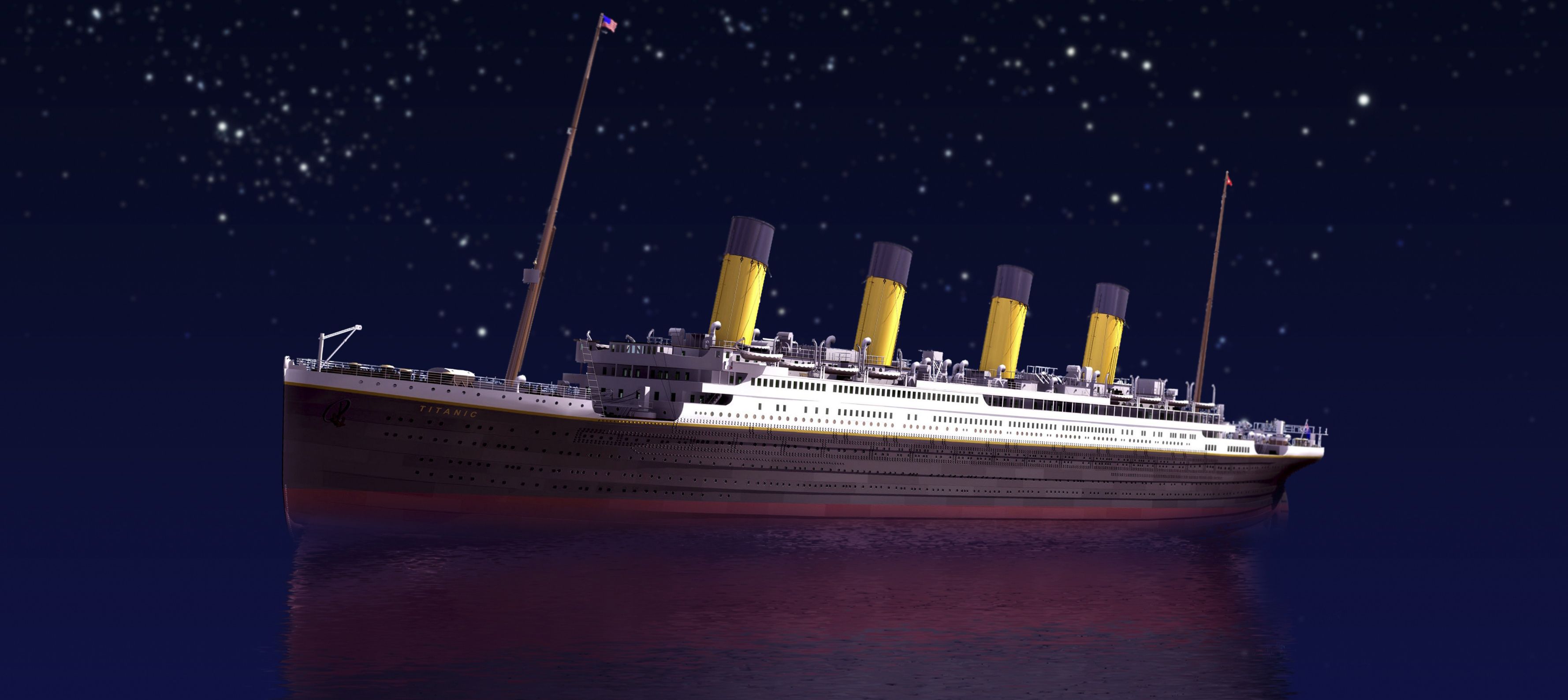
7) For four days, Titanic made good progress across the Atlantic , powered by three coal-burning engines . But it was no easy job to keep her moving. Each day, the ship’s 175 ‘fire men’ shovelled 600 tonnes of coal into the furnaces — that’s the weight of 100 elephants!
8) Titanic was also known as the ‘ Ship of Dreams ’, and White Star Line claimed she was the safest ship of all time . To make sure she wouldn’t sink, her hull was made up of 16 separate sections. If two, or even three sections were damaged and water got in, the ship would still have time to sail to safety. So all good, right? Wrong…
9) Just before midnight on day five, in the freezing cold North Atlantic Ocean, an iceberg loomed out of the darkness. Too big to quickly change direction, Titanic scraped along the side of the ice, tearing holes in at least four sections of the hull. Uh oh…
10) The Captain of Titanic – Edward John Smith – and his crew knew that the collision meant disaster; Titanic would sink in just a few hours . Distress signals were sent out to nearby ships and passengers were ordered to get to the lifeboats, fast !
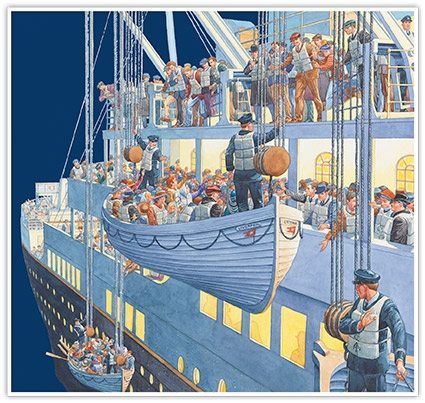
11) But there was one very big problem. Titanic only carried twenty lifeboats — only enough to hold around half of the people on board! What’s worse, the first lifeboats were launched half-empty , wasting precious spaces. In panic, many people jumped into the ocean to escape the sinking ship!
12) As Titanic sank, the bow (the front) went down first, causing the stern (the back) to rise out of the water and into the air. At around 2am , this tilt caused the ship to break in two, sending all those still on board into the freezing cold ocean…
13) In the -2°C waters , most passengers who went into the sea would have died from the cold within 15 minutes . Some managed to survive a little longer by treading water or clinging onto bits of floating wreckage.
14) The first ship to respond to Titanic’s distress signals was called the RMS Carpathia . But despite setting out immediately and travelling at top speed, she didn’t arrive until around 3.30am — over an hour after the Titanic had sunk .
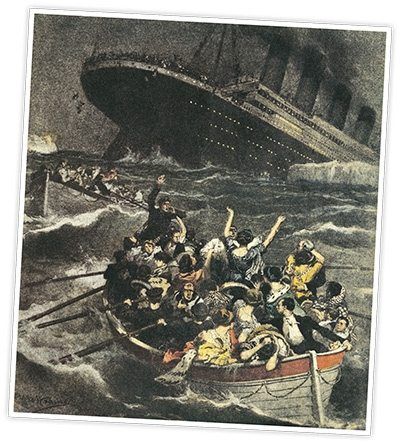
15) On arrival at the disaster, the RMS Carpathia rescued those who had made it into the lifeboats. There were around 705 survivors in total, and all were transported safely to New York, USA.
16) But tragically, more than 1,500 people lost their lives on the Titanic, most never to be seen again. In the days following the wreckage, ships headed out to the disaster area and recovered 300 bodies from the water . These were either buried at sea or taken to Halifax in Canada (the nearest major port) to be identified.
17) Despite many attempts to find the wreck, Titanic remained hidden from the world for around 70 years . It wasn’t until 1985 that she was seen again — when oceanographer (a sea scientist) Dr Robert Ballard set out on a deep-sea mission in the Argo , a robot submarine. The team discovered Titanic on the seabed, nearly 600km off the coast of Canada .

18) Since then, there have been many expeditions to Titanic – and over 6,000 interesting items have been salvaged from the wreckage. These can be seen today in museums around the world and include jewellery , perfumes , plates , clothes , furniture and even lunch menus !
19) The longest living survivor from Titanic was Millvina Dean , who lived to be 97 years old. She was just a baby when she, her mother and brother made it into one of the lifeboats. Millvina lived to tell the tragic tale until 2009, when she passed away.
20) There have been lots of documentaries and movies made about Titanic. The first was a silent movie called Saved from the Titanic , made just one month after the disaster. The most popular today is the 1997 Hollywood blockbuster Titanic , which became one of the highest-earning movies of all time !
Did you know that we have a FREE downloadable Titanic primary resource ? Great for teachers, homeschoolers and parents alike!
Would you have survived Titanic?

So, now you know all about this incredible ship and its tragic tale. But here’s the big question: if you had been on board, would you have survived? It all depends on who you were…
– YOU were a woman or child : Women and children were allowed to board the lifeboats first. However, some men did get a place when the first few lifeboats didn’t fill up.
– YOU were rich : First-class passengers were lucky — they had cabins on the upper decks, closest to the lifeboats. Many poorer passengers, in ‘steerage’ class on the lower decks, didn’t reach the lifeboat deck in time.
– YOU obeyed orders : If you had got into a lifeboat as soon as the crew told you to, you would probably have survived. Remember that, next time you’re on a ship!
– YOU were brave : Many people were too scared to leave the big ship for the tiny lifeboats. Others stayed on board because they didn’t want to lose sight of their friends or family. To survive, you needed the courage to go for it.
– YOU were willing to push : In the final struggle for lifeboat places, those who pushed, won!
– YOU had stamina : Some survivors were plucked from the icy water after hanging onto bits of floating wreckage for more than half an hour. They had clung on to life!
Photos and Illustrations: Getty Images UK
What did you think of our twenty titanic facts leave a comment below and let us know, leave a comment.
Your comment will be checked and approved shortly.
WELL DONE, YOUR COMMENT HAS BEEN ADDED!
I've learned a lot.
It told me a lot of things I didn't know.
that was sooooo cool!
Wow! this painting of the titanic is amazing! I wonder how the illistatour is now!
this is cool
this is amazing
Interesting
Good and interesting
Very interesting
interesting
i liked it . it was cool and interesting .
its amazing
nice story!
the book was really cool
I learnt loads
I learnt loads!!!!
I learnt loads!!!!!!!!!!!!!!!!!!!!
it is cool!
Let’s take action!
can you do more cool titanic facts! plz
I love the rms titanic!!
This is intresting!
itv was sad
like the pinchers and games and videos
good facts to work with
I'm really intresded now
I can’t wait for some more
Can’t Wait for more
Hi my name is Sara and How am amazing
this is awesome MAKE MORE FACTS
I washed this last night this ray help me I bet this will even help me in school
the titanic is so cool
I like the facts
cool facts guys it really makes me remember about those people who cared about there familys .you are all awesome thank you guys bye
this was really interesting to read about i cant believe so many people died it must of been devestating!
This really cool info and it helped with my homework
I hope some people did not die.
I love the titanic
its so sad that so many lives were lost I hope I would have survived it.
Creepy And Sad ;(
amazing it really helped on my report
cool wow i lovethe titanic i amone of thesurvivors
so sad:(:(:(:(:(
This is soooooooooooooooooooooooooooooooooooooo coolllllllll
I love the TITANIC . Thank you for the facts.
ccccccooooooollllllll
if i was on the titanic i would absolutely follow these rules straight away
yeah JACK 8, you like the titanic because it was an achent shipwreck
The titanic is awesome like this webpage
awesome facts
Hehe would have survived! :-)
hehe i would have survived lol
COOL AWESOME!!!!! I Love the Titanic and I find it very wonderful. But ever since I heard about it I was afraid of ships.
thanks for the advice
I LOVE THE TITANIC
IT WAS INTERESTING
Astonoshing facts!
I think it is cool to learn about history! One of my ancestors could have been on the Titanic, and maybe survived!
lol!!!!!!!!!!!!!!!!!!!!!!!
they dont really know thats true
I like how you told a few reason how you may survived
lol lol lol lol did you know that on the titanic there was a hot tub?
nice and good
Awesome. Amazome.
very good information cool but sad;(
Interesting !
idk and id care
i would survive me just dont care jme
titanic is my favourite movie
coooooooooooooooooooooool
cool but would I have survived if I was a chambermaid
good cool well done!!!!
WOW BRAVE!!!!!!!
Lol It is cool
Cool this is really good info thx
thank you for dis
that was scary!!
I was going to cry by reading this. SO SAD!!!!!!!!!!!!!!!!!!!!!!!!!!!!!!!!!!!!!!!!!!!!!!!!!!!!!!!!!!!!!!!!!!!!!!!!!!!!!!!!!!!!!!!!!!!!!!!!!!!!!!!!!!!!!!!!!!!!!!!!!!!!!!!!!!!!!!!!!!!!!!!!!!!!!!!!!!!!!!!!!!!!!!!!!!!!!!!!!!!!!!!!!!!!!!!!!!!!!!!!!!!!!!!!!!!!!!!!!!!!!!!!!!!!!!!!!!!!!!!!!!!!!!!!!!!!!!!!!!!!!!!!!:(
I think I would be scared because I would have fallen in to the sea and you never know what creature is below the thick ice
My 103 year old great grandmother was born the year the Titanic set sail! Coolness!!!!!!!!!!!!!!
pls put titanic in mag
Thx for info
this is a clever thing which not only does it tell you about the titanic but provides fun things that were saying would you survive and that kind of thing which is good for intertainment and a little bit of fun cause you must have some intertainment and some fun alot of the time
OMG so scary
hi love the TITANIC
very interesting It was awesome and very cool I made me mom let me make a report on it
omgomgomgomgomgomgomg+
Ong mifa I LUV AJ
Nice! I like it!
good website x
LOLOLOLOL! (LOL)
If i was in titanic i would get a raft and sail out.But if there wasnt a raft i would jump for it and swim away! GOOD FACTS AND GAMES LOL PEOPLE
Really interesting and awesome!!!!!
yeah, I would have probably have survived!
Pretty cold over all but bad article
ummmmmmmmmmmmmmmmmmmmmmmmmmmmmmmmmmmmmmmmmmmmmmm
scary ng kids! plz can u make it a little less scaryeerr? LOLLLLZY!!!!!
Thank you that really helped me with my H Work !!!!!!!!!!!!! XOXOXO
Cool facts about one of my favourite subjects in history
thx for helping me with my homework Nat. Geo Kids!!!!!!!!!!!!! :D
Billy bop that was quite cool
That was cool and rubbish
AMAZING! Inspiring! I LOVE IT!!! I LOVE NGkids!
LOL LOL LOL LOL LOL LOL LOL LOL LOL LOL
this amazing. now i know alot a nd i can tell the teacher during literacy becuase where learnig about the titanic!
the titanic is the best thing to learn about ,everyone else gets to learn about except me they are so lucky i wish I can about it
Cool tip on boats. Ill tell my friends.
I dont know what I wouldve done!
cool! LOVED IT!
All I can say is that this is an amazing website and helped me so much! I will tell everyone in my class about this website so as to my parents (of course!). Thank you who ever wrote this and made this site, I have nearly 15 magazines of ngkids however I never knew there was a website! Again thank you and please make more magazines. Thank you for reading. ;)
wow this is AMAZING! Brilliant for homework thanks ngkidz! I also play animaljam great game!
Ive wondered why the titanic was (almost) unsikable
Thanks NG KIds for posting this fantastic article and for the valuable life saving lessons.
That is so cool because my topic was once all about the Titanic!
Thanks for the facts
Wow this is so interesting
COOL article
I think i would of lived so … YAY!!!!!!!! And also very interesting!
It was very intresting
i might of survived
WOW! I dont think I wouldve survived that. The millions of lives that were on that boat mustve been terrified.But if I was on that ship I wouldve defiantly jumped into a lifeboat.
I feel so sad that all those people died. You know, another reason that some people did not make it is because the Captain of the ship jumped in the lifeboats and the captain of a sinking ship is supposed to get of last, as goes the saying " The captain goes down with his ship".
TITANIC IS AMAZING!!!
It was sad that so many people died
thats such a sad story
this is so awesome!!!!!!!!!!!!!!!!!!!!!!!!!!!!!
I wouldnt have survived, but very interesting!
really help with my homework thanks : ]
I loved this!!!
This was amazing, just a few words made me want to read on!
amazing!!!!!!
so amazing and so effective
I probably wouldnt have survived.
Cool!!!!!!!
I really enjoyed reading about the Titanic and its story. Its so tradgic, I hope I can watch the film - hopefully this will help me understand the story more! Thanks for choosing thes story NG KIDS. MB1
I would grow wings and fly away
I would survive lol
# cool cool
awesome wow!
love it got a book about it
great website
awsome lol from crawford
brrrriliant
i am a good pusher i would of shoved alottaking my mum and dad with me but still for the people who died i think like 255 people died which is a very sad moment
i have been on HMS St Albans and HMS Somerset and have sat in both the captains chairs in the bridge- the control room- and have seen the guns, and ect.
I am a sea cadet and i have just been on an naval acquaintance course at HMS Raleigh and i have learnt so many skills to actually be in the navy like damage control which is plugging holes and saving the ship from sinking- i actually did this in a training room- and i have also learnt sea survival like putting on life jackets, the correct way to jump in the sea if in emergency, and all about life boats from the past to the present. and so much more that doesnt have anything to do with this! :)
I feel pity for the people who died
I might have survived and I love learning about it
this was sooooo helpful!
I fort it was very good to learn
I wouldnt have survived.NO WAY!!!!
Hopefully I would have survived!
I would have survived- JUMP!
Awesome facts! were really useful, thank you!
i would have survived
We would have survived because were kids and we would have listened to the commands. :)
Wow... Even though Ive already done my gold swimming award, I dont think I couldve survived!
this is interesting!
i wouldnt have survived
We are learning about this in school, love it!
We are learning about this, and we love it. Xxx
I am really interested in this text because it has facts and all sorts of stuff about what happened to the titanic.
I think I would have survived
I think that I may have survived but I dont think I would be able to hold on to bits of wreckage for half an hour.
I read a book based on these events called My Story: Titanic. It was really good but a bit sad near the end.
Why didnt they have life vests
this is really cool, check it out!
i call first boat off!
Interesting :)
Awesome but I probably wouldnt survive
Amazing! I love the pictures!
helped me with my project
i think anything found of the titanic should be left were it lies and not to be touched because its a great peace of history so it should stay at the bottom of the ocean
SUPER DUPER DUPER INTERESTING !!!!!!!!!!!!!!!!!!!!!!!!!!!!!!!!!!!!!!!!!!!!!!!!!!!!!!
I wish I could experience the Titanic. It was so tragic that almost half the people on board died....... Of course Id like to be one of the lucky ones to survive!
I think the Titanic would of polluted the North Atlantic Ocean. Right? I am learning about the ocean. i have just read it all about the Titanic.
amazing although it was not as good as your on-line game animal jam
YES! Well, I hope so.
I just LOVE Titanic! Thanks for some new facts!!xx
I thought any ship could sink ???
I am on ship using a computer reading about this and now I a freaked out ! !!!!!!!!!!!!!!!!!!!!!!!!!!!!!!!!!!
In English, we are studying Titanic so we can write poems about them! Thanks to N.G.K, I can educate my classmates about it.Thank you N.G.K.!
VERY VERY VERY VERY VERY VERY INTERESTING
so intresting!!!!
thank you have been a big help towards my homework and if it was not for you it would not be finished .I really appreciate this can you send me some pictures of the titanic and the rich people on board.:):):):):):):)
CUSTOMIZE YOUR AVATAR
More like general history.

The life of Nelson Mandela
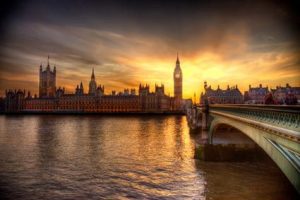
10 ‘Horrible’ Facts about London!

Guy of Warwick!

Amazing Paralympic athletes!

Sign up to our newsletter
Get uplifting news, exclusive offers, inspiring stories and activities to help you and your family explore and learn delivered straight to your inbox.
You will receive our UK newsletter. Change region
WHERE DO YOU LIVE?
COUNTRY * Australia Ireland New Zealand United Kingdom Other
By entering your email address you agree to our Terms of Use and Privacy Policy and will receive emails from us about news, offers, activities and partner offers.
You're all signed up! Back to subscription site
Type whatever you want to search
More Results

You’re leaving natgeokids.com to visit another website!
Ask a parent or guardian to check it out first and remember to stay safe online.

You're leaving our kids' pages to visit a page for grown-ups!
Be sure to check if your parent or guardian is okay with this first.
There are still secrets to be found on Titanic. These graphics explore them
It sank 112 years ago Monday, but our obsession with the RMS Titanic continues.
History's most famous ship slipped beneath the North Atlantic at 2:20 a.m. on April 15, 1912 , but we continue to explore its maiden voyage, iceberg, sinking and undersea decay through a seemingly endless stream of photographs, books , documentaries and movies , and museum exhibits.
Fascination has led to tragedy. A submersible carrying five passengers to view the Titanic imploded near the wreck , killing all aboard, in June 2023.
It also has brought technological advances. In May 2023, a new type of digital scanning, using multiple images, gave us a three-dimensional view of the ship as it would look if it were lifted out of the water .
Why are people drawn to Titanic?
"There isn’t a simple answer," says Karen Kamuda, president of the Titanic Historical Society , which operates the Titanic Museum in Indian Orchard, Massachusetts.
Those who join the society are of "all ages and occupations, and their interests are multivariable," Kamuda says. Aside from their fascination with Titanic and its passengers and crew, their curiosity might include the sister ships Olympic and Britannic, the White Star Line, artifacts, and TV and movies.
"James Cameron’s 1997 film, ' Titanic ,' opened up a brand-new interest," Kamuda says. "The internet has helped spread the story worldwide."
Here are a few things you may not know about Titanic:
Titanic traveled less than 3,000 miles
Titanic was built at the Harland & Wolff shipbuilding company in Belfast, Ireland. After outfitting and sea trials, the ship left port for her maiden voyage.
From Belfast to the fatal iceberg strike, Titanic traveled about 2,555 nautical miles, or 2,940 land miles:
April 2, 1912 | 8 p.m.: Titanic leaves Belfast, sails to Southhampton, England (577 nm).
April 10, 1912 | noon: Titanic leaves Southhampton, sails to Cherbourg, France (88 nm).
April 10, 1912 | 8:10 p.m.: Titanic leaves Cherbourg, sails to Queenstown ( now known as Cobh ), Ireland (341 nm).
April 11, 1912 | 1:30 p.m.: Titanic leaves Queenstown for New York.
April 14, 1912 | 11:40 p.m.: Titanic strikes iceberg 1,549 nm from Queenstown.
April 15, 1912 | 2:20 a.m.: Titanic sinks about 400 miles south of Newfoundland, Canada.
Titanic's lifeboats were not filled to capacity
15-ton piece of wreckage recovered.
The largest piece of wreckage recovered from Titanic, above, is a 15-ton section of the hull measuring 26 feet by 12 feet. It's on display at Titanic: The Artifact Exhibition at the Luxor Hotel in Las Vegas
The hull section was part of the starboard side of the ship , between the third and fourth funnels. It was lifted to the surface in 1998.
Museums keep Titanic's memory alive
A number of museums offer visitors a look at hundreds of objects recovered from the wreck site. Here are a few:
And if you can't get to a Titanic museum, a traveling exhibit, Titanic. The Exhibition , with 200 items, may be coming to you after it leaves New York.
Thousands of artifacts have been salvaged
Titanic was much smaller than today's cruise ships, want to learn more about titanic.
Historical associations are a good source of information.
- Titanic Historical Society: https://titanichistoricalsociety.org/
- Titanic International Society: https://titanicinternationalsociety.org/
- Belfast Titanic Society: https://www.belfast-titanic.com/
- British Titanic Society: https://www.britishtitanicsociety.com/
SOURCE USA TODAY Network reporting and research; Titanic Historical Society; titanicfacts.net; titanicuniverse.com; National Geographic; encyclopedia-titanica.org

13 Titanic Mysteries That May Never Be Solved
Was it even the titanic.
E veryone agrees that a luxury liner set sail on April 10, 1912, and sank five days later, taking the lives of around 1,500 of the 2,223 aboard. But that’s pretty much where the consensus ends. Some insist the ship that sank wasn’t the Titanic, but rather, the nearly identical R.M.S. Olympic. As the story goes, the Olympic had been damaged in an accident the year before, but in order to score a bigger insurance payoff, the ships’ common owners passed off the Olympic as the Titanic and then deliberately sank it. While there are lots of holes in this Titanic theory , serial numbers found on parts of the ship that didn’t sink support it . Here’s why we remain fascinated by the Titanic after more than a century .
Did a fire actually seal the ship’s fate?
A recent documentary offers credible evidence that the Titanic (let’s just call it that, for argument’s sake) had been damaged by a coal fire, which had been raging for three weeks before the ship even set sail. The damage would have weakened the hull of the ship, thus hastening the ship’s sinking when it collided with an iceberg. ( If it collided with an iceberg, which is another Titanic mystery we discuss below.)
Why was the captain speeding?
For decades, people believed that Captain Smith was speeding through the iceberg-heavy waters of the North Atlantic because he wanted the Titanic to cross the Atlantic faster than her sister ship, the Olympic. But in 2004, the Geological Society of America published an academic paper by engineer Robert H. Essenhigh with a different theory: It claimed the real reason the Titanic’s captain was speeding was to burn coal as quickly as possible in order to control the coal fire mentioned above. Did a full moon have something to do with the Titanic’s crash? Here are 10 more fascinating facts you never knew about the Titanic .
What caused the ship to break into two pieces?
On September 1, 1985, oceanographer Robert Ballard discovered the wreckage 2.5 miles below the ocean surface, along with the surprising news that the ship had broken in two before sinking. Previously, everyone had thought that the ship sank intact after colliding with an iceberg while speeding recklessly through icy waters near the coast of Newfoundland. Ballard’s discovery led to a new theory: that the ship’s splitting into two pieces, which “may have been the difference between life and death,” was the result of design flaws and the skimping on quality materials by the owners and/or builders.
Did a torpedo sink the Titanic?
Most believe that the Titanic sank after hitting an iceberg on April 14 (regardless of other contributing factors). But not everyone. Some think that the Titanic was torpedoed by a German U-boat . This theory doesn’t seem all that far-fetched considering that three years later in 1915, a German U-boat did sink a passenger ship, the Lusitania . However, it’s possible that torpedo theorists are confusing the Titanic with the Lusitania. It’s also possible that they’re confusing the Titanic with the Olympic, which had sustained damage after colliding with a military vessel in 1911. Still, the presence of several other ships in the vicinity of the Titanic’s sinking leaves the question open.
Was there even an iceberg?
Assuming the Titanic didn’t collide with, and wasn’t torpedoed by, another ship, it’s safe to believe that it hit an iceberg, right? Not necessarily. Professional mariner Captain L.M. Collins maintains that if the Titanic ha d hit an iceberg, it would have gone down in mere minutes. Instead, Collins and his followers believe that the Titanic must have hit a hidden floe of “pack ice” (multi-year-old sheets of ice floating near the ocean surface) that had made its way into the Atlantic from the Arctic Ocean. Collins points out discrepancies in eyewitness accounts, which may actually be due to various natural optical illusions. If only the crew had binoculars, right?
Why didn’t the crew have binoculars?
Surely, if the crew had binoculars, they would have seen the danger in time to change course. But the Titanic’s entire supply of binoculars was locked away in a storage compartment. And a crew member who had been transferred off the ship just before it set sail had the key. The crew member later claimed he “forgot” to hand over the key. But did he forget? Or did he deliberately hold onto it? And if so, was it to further the insurance fraud mentioned above? Or was it something else entirely?
If there was a warning, why didn’t anyone take it seriously?
Even without binoculars, the Titanic might have had time to change course before its collision if someone had warned the crew. But here’s the thing: Someone did warn the crew. An hour before the collision , a nearby ship, the S.S. Californian, had radioed to say that it had been stopped by “dense field ice.” However, the Titanic’s radio operator, Jack Phillips, never conveyed the warning to Captain Smith. Some say the message was deliberately conveyed as “non-urgent,” but we will never know for sure since Phillips went down with the ship.
Did the Californian have something to do with it?
This cruise liner was less than 20 kilometers away from where the Titanic sank. It sent a warning to the Titanic about the dangerously icy conditions, which may have been relayed as a non-urgent matter. Later, the Californian crew reportedly ignored the Titanic’s distress signals , although they claimed they were not aware of those signals because their radio operator had gone off duty . Did the Californian really not notice what was happening within plain view?
The “third” ship
The Californian may not have been the only ship that ignored the Titanic’s distress signals. A Norwegian ship, the Samson , may have been nearby as well. In fact, some believe that the Samson was closer to the Titanic than the Californian but ignored her distress signals in order to avoid prosecution for illegal seal-hunting. This is a popular theory among defenders of the Californian’s captain, but whether it’s true remains a mystery. Check out a few more of the strangest unsolved mysteries of all time.
Did J.P. Morgan plan the whole thing?
Some who believe the Titanic took the place of the damaged Olympic blame financier J.P. Morgan, who was one of the owners of the company that owned both ships. Morgan was one of the wealthiest people on the planet at the time, and he wielded considerable power. In addition, he was a last-minute no-show on the Titanic’s sole voyage. Why did Morgan—and his entire family—not end up on the ship? Did he know what was going to happen? Did he plan it? This is what life was really like aboard the Titanic before it sank .
Was it a murder plot?
Some believe the sinking had nothing to do with insurance money, but rather that J.P. Morgan engineered the sinking to kill off his rivals , Jacob Astor, Isidor Straus, and Benjamin Guggenheim, all of whom perished aboard. But how did Morgan plan to pull it off? Neither the insurance theory nor the murder theory takes that into account. What else would Morgan have needed to do in order to ensure his plan’s success? Here’s another theory…
Why weren’t there enough lifeboats?
“No matter what caused the Titanic to sink, such a massive loss of life could probably have been avoided if the ship had carried sufficient lifeboats for its passengers and crew,” notes History.com . So then why did the uber-luxury liner have only 20 lifeboats, the legal minimum? Why did the ship’s owners decide to ignore recommendations to carry 50 percent more lifeboats? If the sinking were “merely” an insurance scam, how can the devastating lack of lifeboats be explained? This seems to dovetail more with a murder plot. But it also could be nothing more than cost-cutting on the part of the ship’s owners. Next, find out about these 15 crime mysteries that will never be solved .
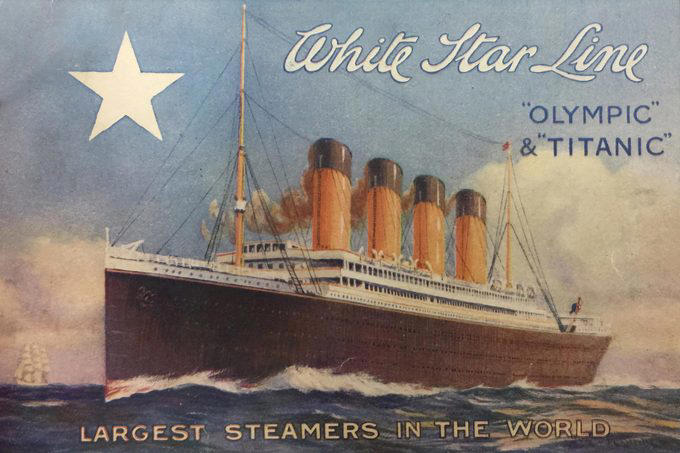

IMAGES
VIDEO
COMMENTS
Titanic, British luxury passenger liner that sank on April 14-15, 1912, during its maiden voyage, en route to New York City from Southampton, England, killing about 1,500 people. One of the most famous tragedies in modern history, it inspired numerous works of art and has been the subject of much scholarship.
The RMS Titanic, a luxury steamship, sank in the early hours of April 15, 1912, off the coast of Newfoundland in the North Atlantic after sideswiping an iceberg during its maiden voyage.
RMS Titanic was a British ocean liner that sank on 15 April 1912 after striking an iceberg on the ship's maiden voyage from Southampton, England to New York City, United States. Titanic, operated by the White Star Line, was carrying passengers and mail.Of the estimated 2,224 passengers and crew aboard, approximately 1,500 died, making the incident the deadliest sinking of a single ship at the ...
Timeline. On March 31, 1909, construction of the Titanic begins in Belfast, Ireland. On May 31, 1911, the Titanic is launched, and later the fitting-out phase starts. The maiden voyage begins on April 10, 1912, as the ship leaves Southampton, England. On April 11, 1912, the Titanic makes its final European stop, at Queenstown ( Cobh ), Ireland.
RMS Titanic sank on 15 April 1912 in the North Atlantic Ocean. The largest ocean liner in service at the time, Titanic was four days into her maiden voyage from Southampton to New York City, with an estimated 2,224 people on board when she struck an iceberg at 23:40 (ship's time) on 14 April. Her sinking two hours and forty minutes later at 02:20 ship's time (05:18 GMT) on 15 April, resulted ...
Titanic, British luxury passenger liner that sank on April 14-15, 1912, during its maiden voyage, en route to New York City from Southampton, England, killing about 1,500 people. One of the most famous tragedies in modern history, it inspired numerous works of art and has been the subject of much scholarship.
Encyclopedia Titanica tells the stories of the real people that designed, built and sailed on RMS Titanic. There is a individual biography for every Titanic passenger and Crew Member and articles, deck plans, pictures and movies to help you discover the truth about the greatest shipwreck in history. RMS Titanic Facts.
RMS Titanic - at the time, the world's largest man-made moving object at 269 metres in length and widely considered to be 'unsinkable' - struck an iceberg at 11.40pm on 14 April 1912. Despite several warnings, Titanic was racing through dangerous waters almost at its top speed of 23 knots. The berg was spotted only 30 seconds before ...
The Titanic. The Titanic was a White Star Line steamship carrying the British flag. She was built by Harland and Wolff of Belfast, Ireland, at a reported cost of $7.5 million. Her specifications were: On 10 April 1912, the Titanic commenced her maiden voyage from Southampton, England, to New York, with 2,227 passengers and crew aboard.
1 / 8: Ralph White/Getty Images. It wasn't until Sept. 1, 1985 that oceanographer Robert Ballard discovered the wreckage of the Titanic, which was found at 12,000 feet—2.3 miles below sea level ...
Above: The Titanic at Southampton at the beginning of her maiden voyage. 05 April 1912 - the date Titanic was briefly opened for viewing by the paying public, two days after sailing to Southampton. The ship was "dressed overall", with flags and pennants hung from the rigging in a salute to the people of the city.
The Titanic: her name is synonymous with those of Jack and Rose, fictional passengers on her maiden voyage. In the midst of the many myths and fictions surrounding the famous cruise liner and her ill-fated maiden voyage, here are 10 facts about the Titanic. 1. People died on the Titanic even before it set out
Read on for some surprising Titanic facts. 1. The Titanic was built to compete with other ships. ... The Titanic set sail on its maiden voyage April 10, 1912, leaving from Southampton, England.
Titanic, launched on May 31, 1911 , and set sail on its maiden voyage from Southampton on April 10, 1912, with 2,240 passengers and crew on board. On April 15, 1912, after striking an iceberg, Titanic broke apart and sank to the bottom of the ocean, taking with it the lives of more than 1,500 passengers and crew.
Titanic Facts About the Voyage. 18. The Titanic burned over 600 tons of coal a day. One hundred seventy-six men shoveled coal into furnaces each day, and the ship produced over 100 tons of ash each day. 19. The Titanic's maiden voyage was nicknamed the "Millionaire's Special.".
The Titanic was designed to accommodate a total number of 2453 passengers on board- 1006 3rd-class passengers; 614 passengers on the 2nd-class compartment; and 833 1st-class passengers. However, due to a national coal strike in the UK (which ended a few days prior to Titanic's voyage), the gigantic ship found itself acutely under capacity.
The Passengers. 3,547 - the maximum number of people the Titanic could carry.. 2,223 - the number of people aboard (passengers and crew).. 13 - the number of honeymooning couples on the voyage. + Read more about the Titanic passengers. The Sinking. 6 - the number of warnings of icebergs the Titanic received before the collision.. 160 - the minutes it took the Titanic to sink after ...
April 10, 1912: From 9:30 a.m. until 11:30 a.m., passengers board the ship. Then at noon, the Titanic leaves the dock at Southhampton for its maiden voyage. First stop is in Cherbourg, France, where the Titanic arrives at 6:30 p.m. and leaves at 8:10 p.m, heading to Queenstown, Ireland (now known as Cobh). It is carrying 2,229 passengers and crew.
These are just a couple of the interesting facts about the Titanic that we're going to explore. The Titanic Was Gigantic . The Titanic was supposed to be an unsinkable boat and it was built to monumental scale. In total, it was 882.5 feet long, 92.5 feet wide, and 175 feet high. It would displace 66,000 tons of water and it was the largest ship ...
Titanic facts. 1) Titanic was built by a company called White Star Line. She was completed and ready for the ocean on 31 March 1912, after three years in construction in Belfast, Ireland. 2) And she was no ordinary ship, Titanic was the most impressive and luxurious ship of her time! She was the biggest, too, measuring 28 metres wide, 53 metres ...
The Titanic. In 1985 Robert Ballard found the wreck of the Titanic lying upright in two pieces at a depth of 13,000 ft (4,000 m). American and French scientists explored it using an uncrewed submersible. Titanic, British luxury passenger liner that sank on April 15, 1912, en route to New York from Southampton, England, on its maiden voyage.
Essential Facts. Interesting Facts. 01 Official Title: RMS Titanic. 02 Sinking: 11.40 PM on the night of April 14, 1912. 03 Size: 882 feet 9 inches in length. 04 Cost: $7,500,000. 05 Location: Sank in North Atlantic Ocean, about 375 miles south of Newfoundland. 06 Capacity: 3,547 passengers.
It sank 112 years ago Monday, but our obsession with the RMS Titanic continues. History's most famous ship slipped beneath the North Atlantic at 2:20 a.m. on April 15, 1912, but we continue to ...
A total of 2,240 people sailed on the maiden voyage of the Titanic, the second of the White Star Line's Olympic-class ocean liners, from Southampton, England, to New York City. Partway through the voyage, the ship struck an iceberg and sank in the early morning of 15 April 1912, resulting in the deaths of 1,517 passengers.. The ship's passengers were divided into three separate classes ...
Was it even the Titanic? E veryone agrees that a luxury liner set sail on April 10, 1912, and sank five days later, taking the lives of around 1,500 of the 2,223 aboard. But that's pretty much ...